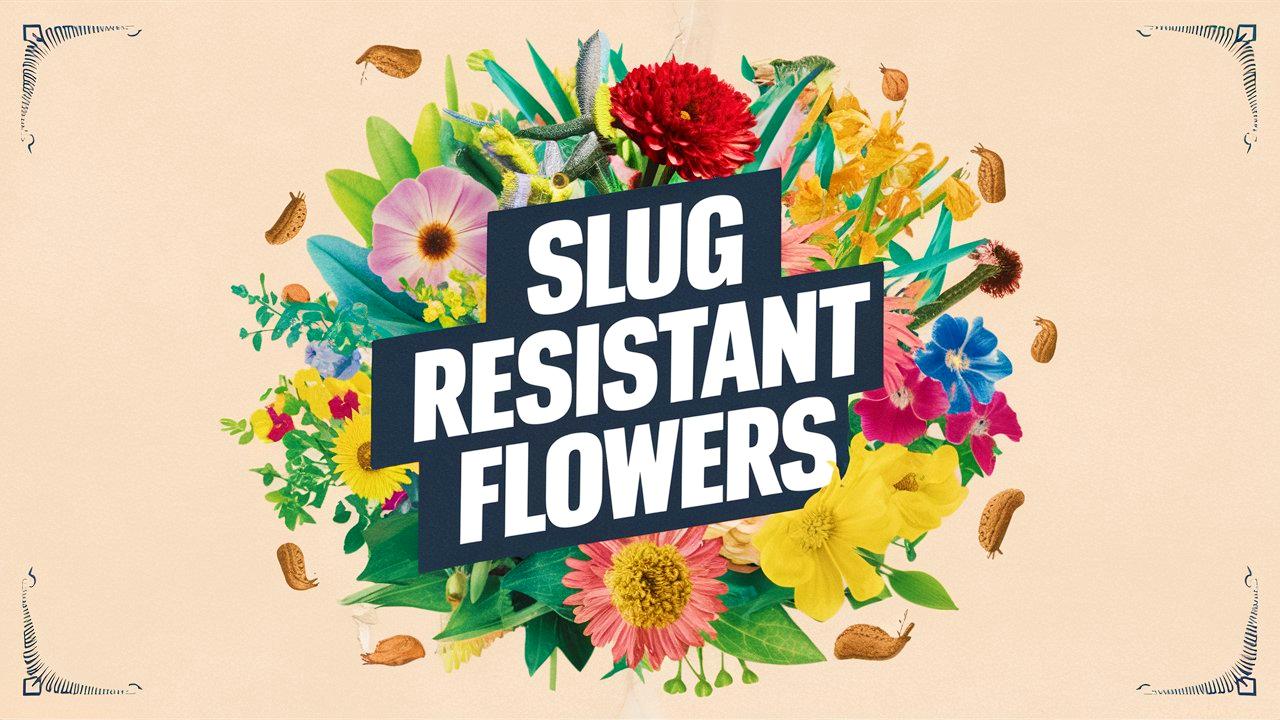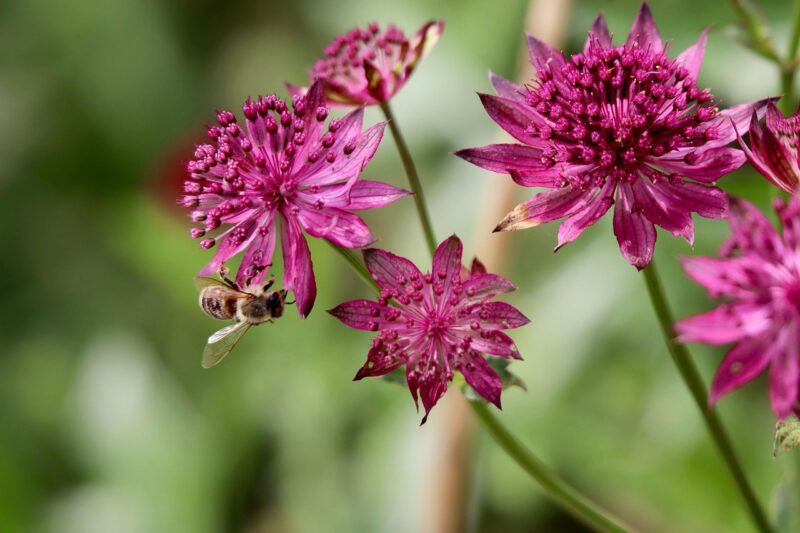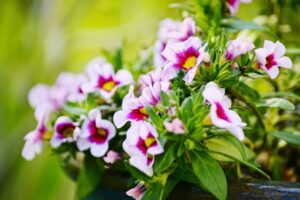In this guide, we will explore some of the most notable slug-resistant flowers, blending ornamental beauty with practical garden benefits. The following sections will introduce you to various slug-resistant plants, detailing their unique characteristics, care requirements, and additional information to help you understand why they excel in slug resistance.
Aconite (Aconitum)
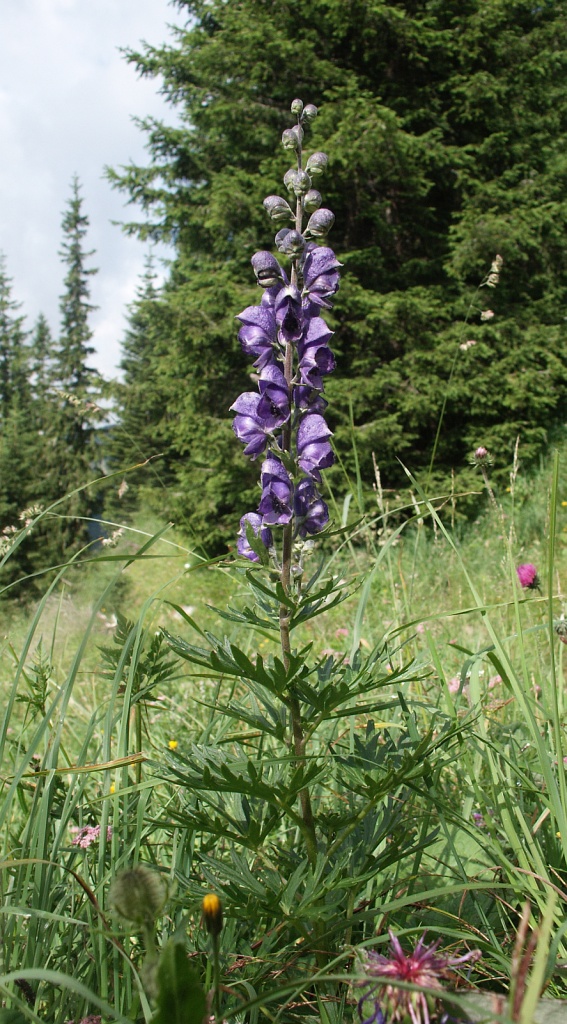
Commonly known as monkshood or wolf’s bane, Aconite is a striking perennial flower that captivates attention with its towering spikes of hooded blue or purple blooms. The plant thrives in partially shaded areas with moist, rich soil, making it an excellent choice for woodland gardens or shaded borders.
One of the most interesting characteristics of Aconite is its high level of toxicity; indeed, it has been historically used as a poison. This toxicity acts as a natural deterrent to garden pests, including slugs. Its venomous nature keeps herbivores at bay, ensuring that these delicate flowers flourish even in the presence of persistent pest populations. However, due to its toxicity, it’s crucial to handle the plant with care and keep it away from children and pets.
In terms of growing conditions, Aconite prefers cooler climates and can be planted in mid to late spring. Once established, these resilient plants can survive in a range of conditions but grow best in light to moderate shade with consistently moist soil. The showy flowers are not only beautiful but also attract pollinators like bees, making them an attractive addition to any garden that supports wildlife.
Alkanet (Anchusa officinalis)
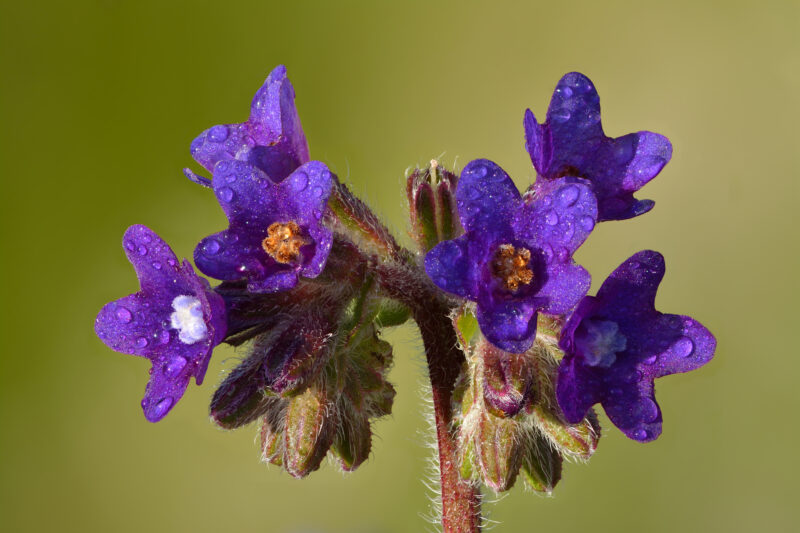
Alkanet, or common bugloss, is a hardy perennial that brings vibrant blue to purple blooms to the garden during late spring to early summer. Native to Europe and parts of Asia, this flowering plant is often found in wildflower meadows and prairies, contributing a natural touch to cultivated landscapes. It’s predominantly known for its striking color and rapid growth, becoming a powerful slug-resistant candidate.
This plant contains rosette foliage that is coarse and hairy, which discourages slugs from crawling over and feeding on its leaves. Not only does Alkanet resist slugs, but it also has a tough disposition, thriving in poor soils with minimal care. It can tolerate drought once established, making it suitable for regions with varying weather conditions.
Plant Alkanet in full sun to partial shade, ensuring it has enough space to spread its roots. The vibrant flowers are a magnet for bees and butterflies, helping to pollinate your garden while providing visual interest. It’s also worth mentioning that the plant can self-seed, creating future generations without significant effort—a perfect perk for a low-maintenance garden!
Alpine Anemone (Pulsatilla alpina)
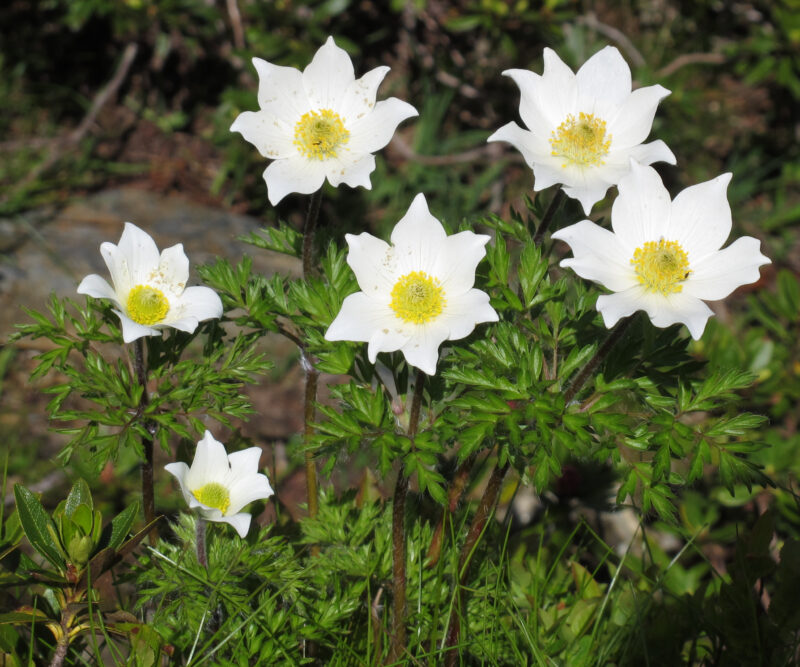
Known as the alpine pasqueflower, the Alpine Anemone is a charming perennial that is truly a sight to behold. This flower features delicate, cup-shaped blooms that can appear in a range of magenta, blue, and white colors, typically blooming in early spring.
Alpine Anemones thrive in rocky, well-drained soils and are native to alpine regions, making them exceptionally resilient in tough environments. Their ability to withstand harsh conditions translates into strong resistance against slugs; they prefer sunny spots or partial shade which naturally limits slug activity during the daytime.
In terms of care, Alpine Anemones prefer a rocky or sandy soil mix. They often do well in raised beds or rock gardens where drainage is optimal, preventing water from pooling at their roots. These flowers are hardy in a variety of USDA zones, making them versatile additions to many gardens. With proper sunlight and well-drained soil, the Alpine Anemone will bring early spring color to your landscape while remaining unappetizing to slugs.
Alpine Aster (Aster alpinus)

The Alpine Aster brings rich, vibrant hues to garden borders with its stunning purple, blue, or white flowers. This perennial is a great choice for rock gardens or alpine settings as it adapts to well-drained, sandy soils rich in nutrients.
One key advantage of the Alpine Aster is its remarkable resilience against slug infestations. Its leathery leaves, which grow low to the ground, seem particularly unappealing to slugs, thus preserving the plant’s beauty and vitality. Additionally, these asters produce blooms that are loved by pollinators, including bees and butterflies, enhancing the biodiversity of your garden.
Plant Alpine Asters in full sun for the best flowering performance; they thrive in cooler conditions, making them an ideal choice for those in northern regions. This flower not only provides visual appeal but also plays a supporting role in ecological health, mitigating pest issues through its natural resistance to slugs.
Alyssum
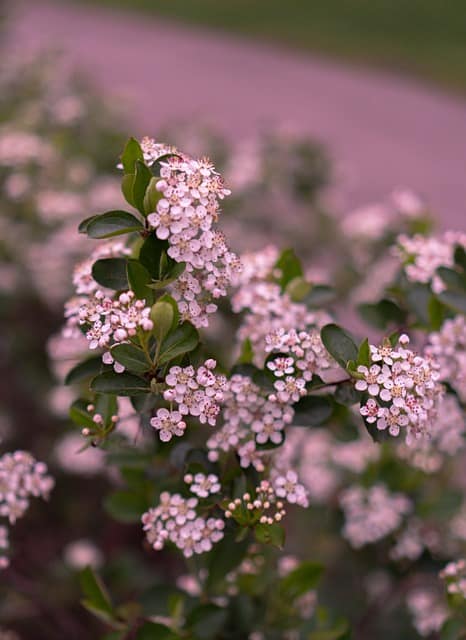
The Alyssum, particularly the sweet alyssum (Lobularia maritima), brings forth small, fragrant flowers in clusters, most often in shades of white, pink, or purple. Known for its ground-covering properties and ability to bloom continuously, Alyssum is a favorite among gardeners looking to fill gaps and add fragrance to their yards.
Alyssum’s natural production of glucosinolates in its leaves and flowers contributes to its slug resistance. This chemical compound often deter herbivorous pests, including slugs, enabling the plant to thrive amidst an array of outdoor threats. The compact growth habit of Alyssum combined with its generous blooming period makes it an enticing option for ornamental beds and containers alike.
Sweet Alyssum performs best in full sun, though it can tolerate light shade as well. It flourishes in well-drained, sandy soils where water doesn’t accumulate, and its mat-like growth provides a wonderful backdrop for taller blooms, creating dynamic visual interest in garden designs. It actively attracts beneficial insects and pollinators, enhancing not only aesthetics but also overall plant health.
Amaranth Family
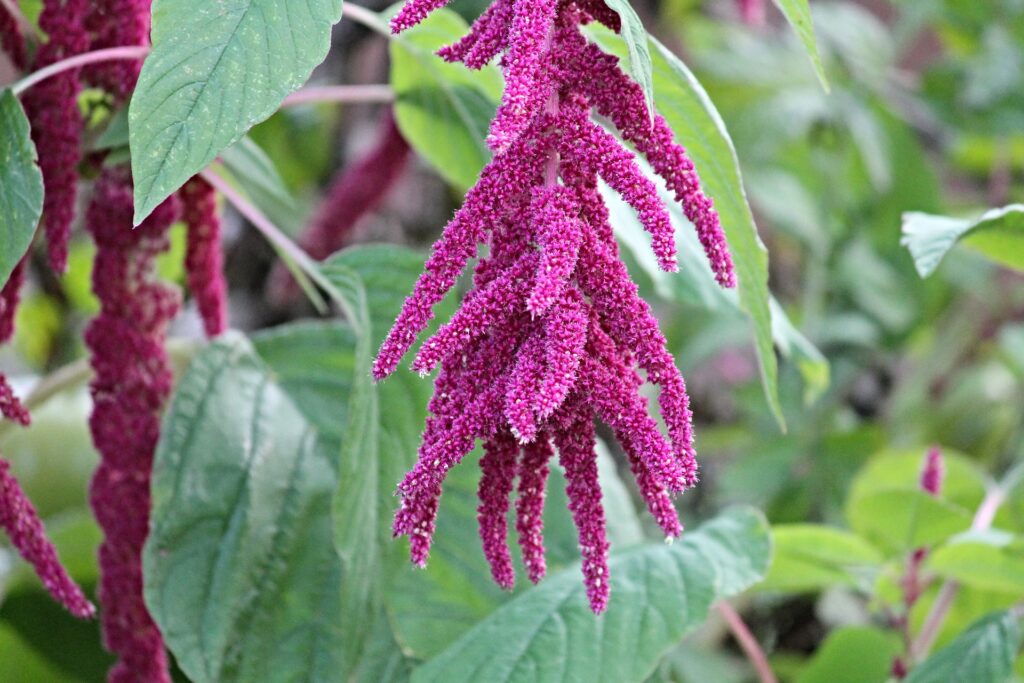
The Amaranth family includes a variety of species known for their vibrant foliage and impressive durability, including quinoa (Chenopodium quinoa), kaniwa (Chenopodium pallidicaule), spinach (Spinacia oleracea), beetroot (Beta vulgaris), and chard (Beta vulgaris subsp. cicla).
These plants are typically resistant to slugs, primarily due to their thick, robust leaves and the presence of specific compounds within them. In addition, certain species produce saponins which slugs tend to avoid. Growing amaranths offers gardeners colorful additions, whether the deep red of amaranth or the bright green of chard, alongside a nutritious harvest.
Plant these species in full sun to partial shade, ensuring they have adequate space to grow as they can reach substantial sizes. Most of these plants prefer nutrient-rich, well-drained soils and require regular watering to establish strong root systems. Not only do these members of the Amaranth family resist slugs, but they can also contribute significantly to a healthy diet, combining aesthetic beauty and culinary benefits.
Angel’s Trumpets (Brugmansia)
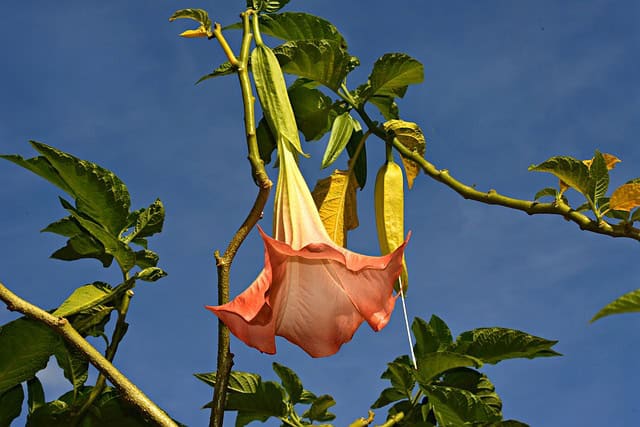
Angel’s Trumpets, or Brugmansia, are renowned for their dramatic, pendulous blooms that bring a touch of the tropical to any garden. Their large, trumpet-shaped flowers can come in various colors, including white, pink, and yellow, creating a stunning visual impact.
This plant possesses some slug resistance, attributed to its toxic compounds. Though beautiful, all parts of the Brugmansia plant are dangerous if ingested, serving as a natural deterrent against herbivores. This characteristic allows the flowers to flourish even in environments where slugs are prevalent.
Brugmansia thrives in sunny, warm locations and prefers well-drained soil with adequate moisture. Regular watering and fertilization can enhance blooming, but caution is needed with toxic plants to prevent unintended consumption by pets or children. Beyond repelling pests, the flowers of Brugmansia are attractive to hummingbirds and butterflies, contributing further to the garden’s ecological appeal.
Appalachian Barren Strawberry (Waldsteinia fragarioides)
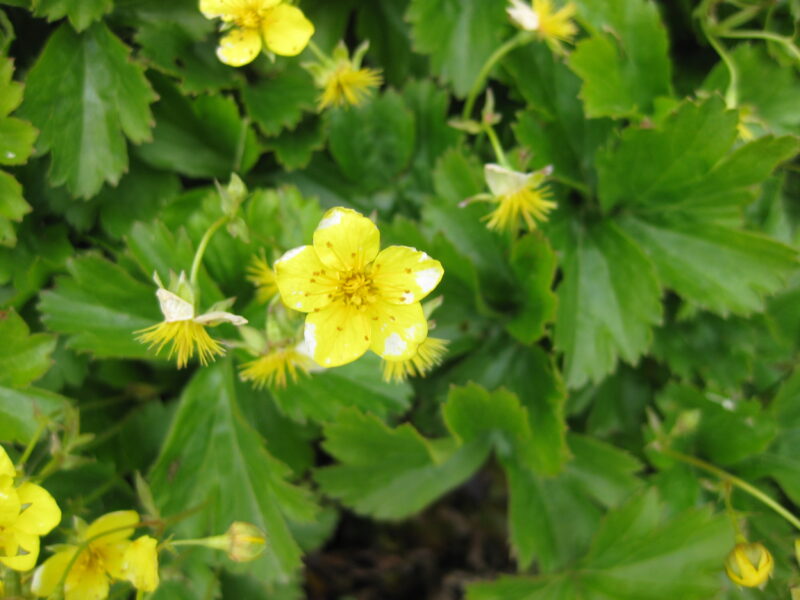
The Appalachian barren strawberry is a charming perennial that forms a sprawling ground cover, adorned with bright yellow flowers that resemble miniature strawberries. This plant, native to the Appalachian mountains, thrives in woodland areas and along shaded slopes.
The dense foliage and low growth habit of this species make it less accessible to slugs, providing a natural defense. Additionally, it boasts a high tolerance for drought and poor soil conditions, allowing it to flourish in less-than-ideal scenarios—perfect for gardeners seeking low-maintenance options.
Barren strawberries do well in partial to full shade, but they can also tolerate some sun. They are also excellent companions for other plants, ensuring vibrant blooms throughout the spring and early summer while supporting local biodiversity. The leaves often turn a gorgeous bronze in the fall, providing year-round interest and color.
Aquilegia (Granny’s Bonnet, Columbine)
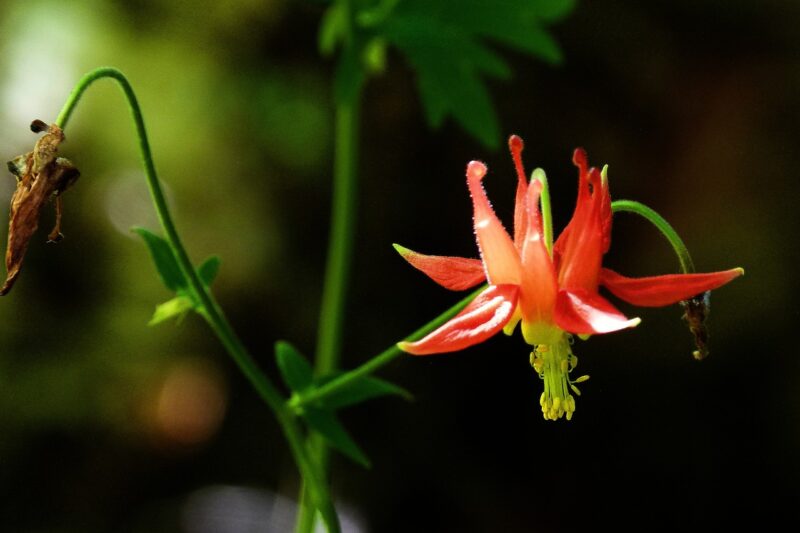
Charming and delicate, Aquilegia, commonly called granny’s bonnet or columbine, features unique, intricate flowers that are available in a wide array of colors, including blue, purple, red, and white. This perennial is adored by gardeners for its whimsical appearance and easy-care nature.
Aquilegia has some natural resistance to slugs due to its unique foliage structure and slightly toxic nature. While slugs might nibble on the leaves when hungry, the plant’s bitter taste is usually enough to deter them. Thus, Aquilegia can flourish while offering visual allure without excessive worry about pest damage.
This flower thrives best in partial shade with well-drained soil. It typically blooms in late spring to early summer, attracting pollinators such as bees and hummingbirds. The unique flower shape is designed to attract specific pollinators, helping maintain ecological balance in the garden. After blooming, Aquilegia self-seeds, ensuring that future generations of these lovely plants can thrive and dazzle.
Artemisia
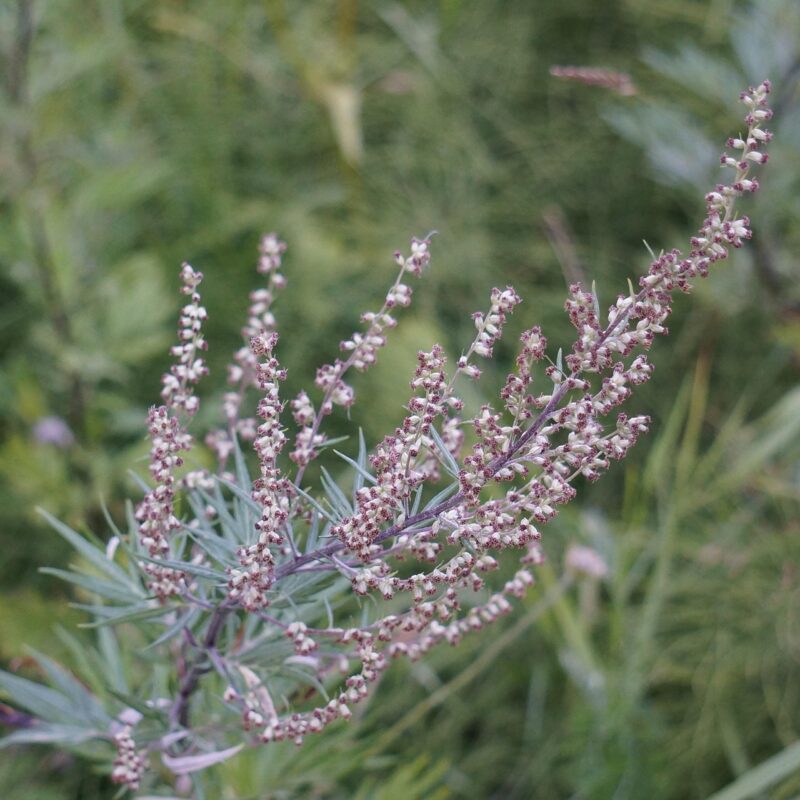
The Artemisia, which includes species like wormwood and sagebrush, offers a stunning contrast to flowering plants with its silvery, aromatic foliage. Widely used in traditional medicine and cooking, Artemisia is hardy and versatile, thriving even in the harshest of conditions.
Artemisia plants contain compounds that are unpleasant to slugs, acting as a natural repellant and ensuring that they flourish in gardens without significant pest problems. Plus, they require minimal care, making them perfect for those seeking low-maintenance gardening options.
Ideal for dry and sandy soils, Artemisia prefers full sunlight. Its aromatic leaves can repel various pests, including mosquitoes, making it useful for gardens prioritizing personal comfort as well. Additionally, the stunning silver-green foliage creates a beautiful backdrop for flowering plants, complementing scaling heights and colors throughout the seasons.
Astrantia
Astrantia, or masterwort, is a lesser-known gem that is exceptional for its unique star-shaped flowers, emerging in shades of pink and white that attract bees and butterflies. These plants establish themselves in damp, rich soils, making them a beautiful choice for shaded areas or borders.
One significant aspect of Astrantia is its ability to deter slugs. This resistance is attributed to its fibrous tissue and robustness, making it less appealing as a food source. Furthermore, its blooms last a long time, ensuring a pleasant showy display throughout the blooming season that contrasts beautifully in shady areas.
Plant Astrantia in locations that receive partial shade; they perform well in moist, well-drained soil. With their ability to attract beneficial insects while resisting pests like slugs, they provide an essential ecological role while ensuring that your garden remains stunningly colorful.
Avens (Geum)
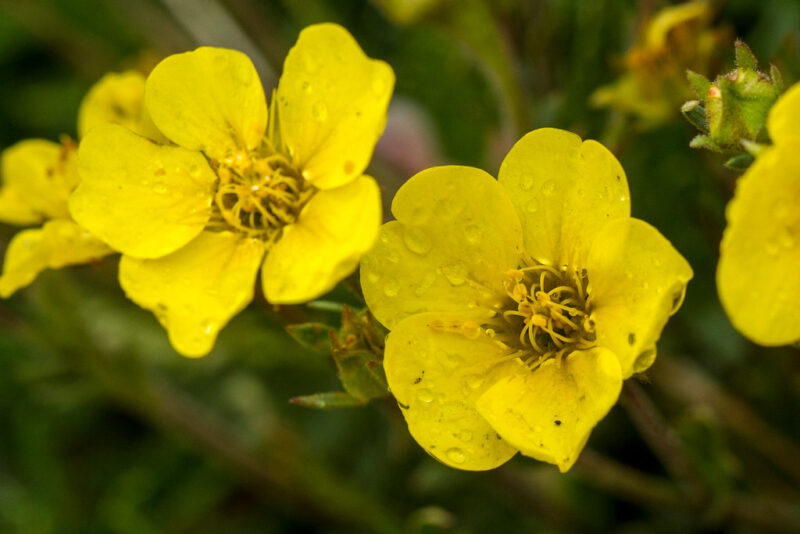
Avens, representatives of the Geum, is valued for their charming, cup-shaped flowers that bloom in various colors, including yellow and orange. These lovely perennials are hardy, making them an excellent choice for various landscapes, including borders and wildflower gardens.
The thick, hairy foliage of Avens constitutes its primary defense mechanism against slugs. While slugs may encounter their leaves, they are typically discouraged by the plant’s tough exterior and thus tend to bypass them entirely.
Avens flourish in full sun to partial shade and appreciate well-drained soil. They bloom in late spring to early summer, providing bright splashes of color that attract pollinators. Due to their ability to thrive in diverse environments, Avens serve as an adaptable plant in gardens that emphasize low-maintenance and slug-resistance.
Baby’s Breath (Gypsophila paniculata)
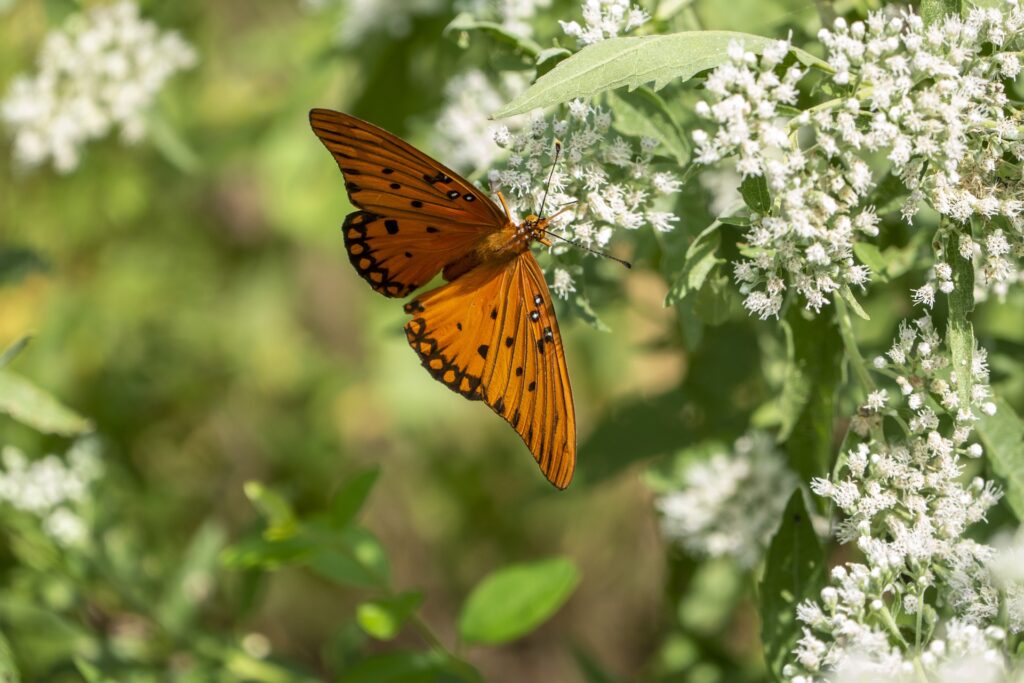
Baby’s breath, or Gypsophila paniculata, is renowned for its ethereal clusters of tiny white flowers that add a delicate touch to floral arrangements and gardens alike. Native to Europe and Asia, this perennial thrives in full sun and well-drained soil, lending a graceful air to borders and containers.
Baby’s breath is known for its ability to resist slugs due, in part, to its complex fibrous structure. While slugs may wander onto its pristine foliage, they often find it less palatable compared to other plants, allowing Baby’s Breath to flourish amidst these common pests.
This plant is drought-resistant once established, making it a perfect choice for gardens with varying moisture levels.
Baby’s Breath attracts buzzing pollinators and thrives during the summer months, creating a lovely spectacular display in the landscape. It can also be used as a filler in cut arrangements, providing versatility alongside its slug-resistance benefits.
Balsam (Impatiens)
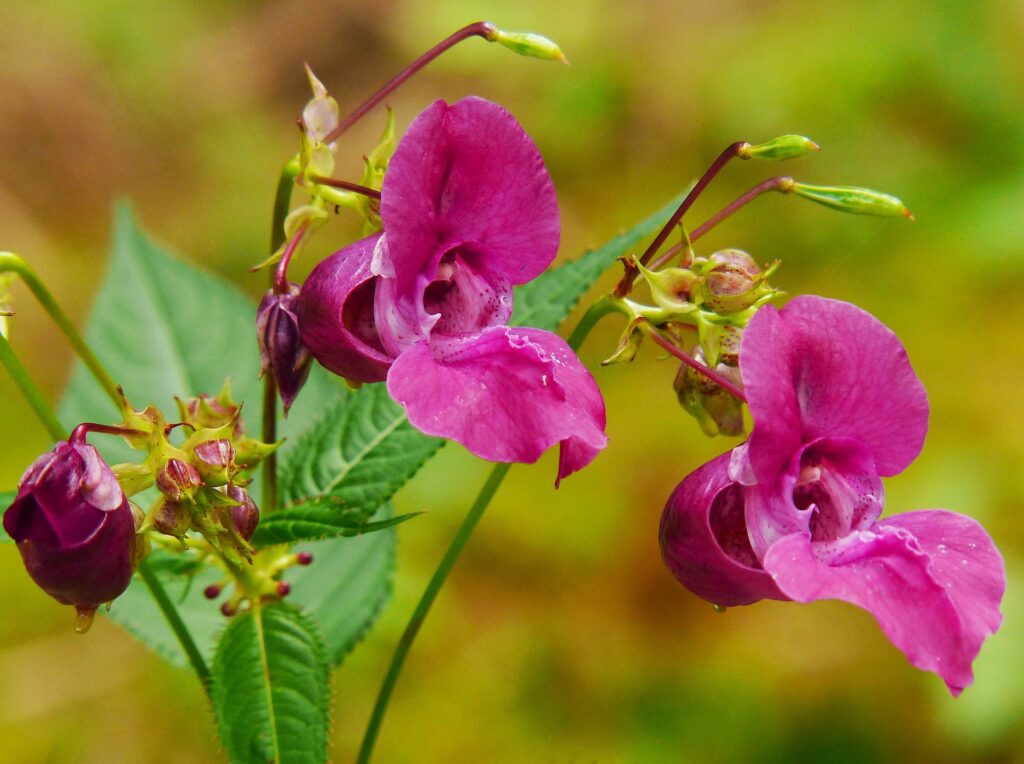
Balsam, especially the well-known Impatiens, bring essential beauty and color to shady garden spots with their wide array of vibrant blossoms. Easy to grow and maintain, Balsam flowers produce blooms in colors like red, pink, white, and purple, capturing the attention of garden visitors.
Although slugs may be attracted to some Balsam species, the established Impatiens are known for their resilience. Their thick, waxy leaves often deter slugs from feasting upon them, allowing these flowers to thrive even where other species are under attack.
Balsams flourish in moist, well-drained soils and can tolerate partial shade to complete shade, making them perfect for those tricky, low-light areas of the garden. Regular watering helps promote consistent blooming, adding splashes of color from spring through fall.
Barrenwort (Epimedium)
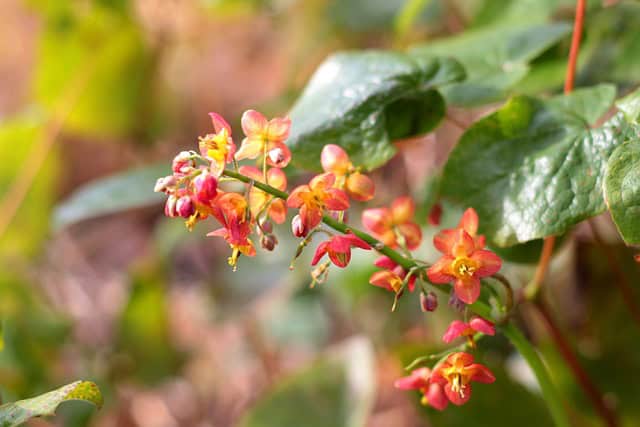
Barrenwort, or Epimedium, is known for its heart-shaped leaves and delicate, nodding flowers that bloom in early spring. Commonly referred to as bishop’s hat or fairy wings, Barrenwort thrives in shaded woodland gardens, making it an excellent choice for those shady spots beneath trees.
Despite its delicate appearance, Barrenwort is remarkably resilient, displaying natural resistance to slugs. The leaves contain compounds that can deter slugs and other garden pests, ensuring that the plant can thrive year after year.
Ideal for partial to full shade, Barrenwort prefers well-drained soil enriched with organic matter. Once established, it can tolerate drought conditions, making it a preferred choice for low-maintenance, shady gardens. Barrenwort adds an understated yet elegant aesthetic to gardens while helping maintain diversity and ecological balance.
Beardtongue (Penstemon)
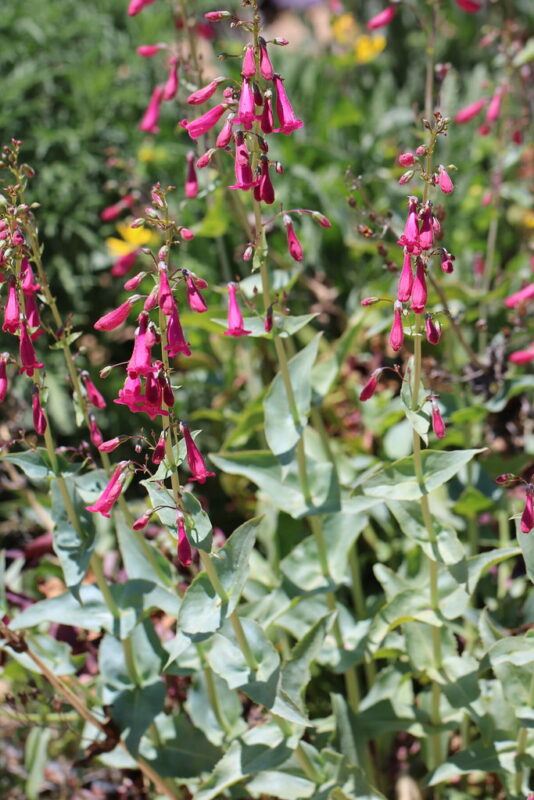
Beardtongue, or Penstemon, is a tough perennial that showcases tubular flowers in shades of purple, pink, red, or white during the spring and summer, making it a favored choice among gardeners. With a natural range from rocky mountain habitats to deserts, these flowers thrive in various environments showcasing their adaptability.
In terms of pest resistance, the structure of Beardtongue foliage proves unattractive to slugs; their rough, hairy texture is less appealing as a food source, allowing these plants to flourish largely without slug interference.
Plant Beardtongue in sunny spots with well-drained soils; they perform well in poor or dry conditions, thriving with minimal water once established. As a bonus, Penstemon plants attract pollinators such as bees and butterflies, contributing to the overall health of the garden ecosystem.
Begonia
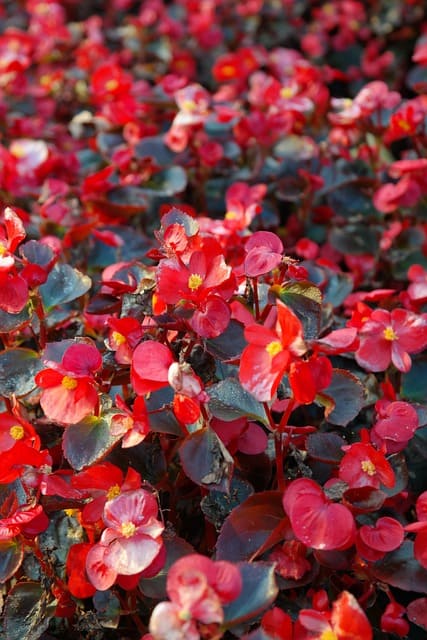
Begonias are a diverse group of flowering plants characterized by their unique foliage and colorful blooms. They can be grown indoors or outdoors and are well-loved for their low maintenance, resilient nature, and the wide variety of shapes and colors they offer.
While some Begonias may be vulnerable to slugs, the thicker-leaved varieties typically resist slug damage due to their tougher textures. By choosing the right species, gardeners can ensure a slug-resilient display while enjoying the lush beauty that Begonias provide.
From tuberous to fibrous-rooted types, Begonias prefer well-drained, nutrient-rich soil and do best in partial shade. Regular watering protects the roots, especially in the hotter summer months, helping to sustain the vibrant blooms that attract birds and various beneficial insects.
Bellflowers (Campanula)
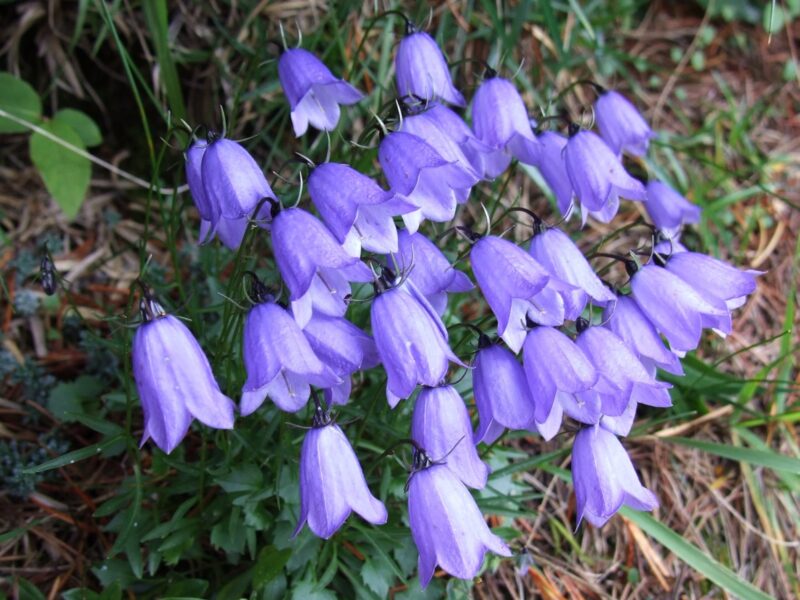
The Campanula, commonly referred to as bellflowers, encompasses a wide variety of species ranging from ground covers to towering perennials. These flowers are distinguished by their bell-shaped blooms, which can be found in hues of blue, purple, and white.
While some species may experience vulnerability to slugs, certain Campanula varieties are naturally resistant, exhibiting tough, hairy foliage that is less palatable. Experimenting with different species within this can yield excellent results in creating a visually appealing border while thwarting slug invasions.
Bellflowers thrive best in well-draining soil and prefer full sun to partial shade. Their productivity and durability encourage them to establish and proliferate in diverse landscapes, attracting friendly pollinators while still protecting themselves from pest issues.
Blanket Flower (Gaillardia)
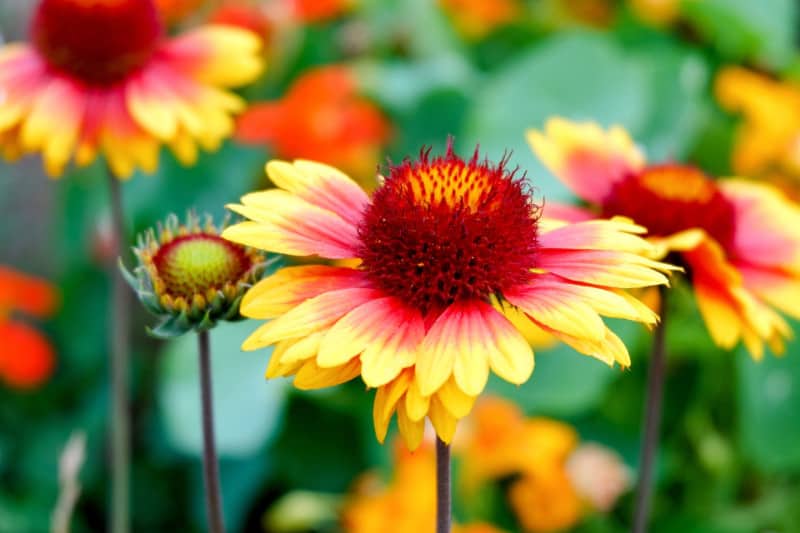
Blanket flowers from the Gaillardia are known for their bright, daisy-like blooms that come in a striking palette of reds, yellows, and oranges. These vibrant flowers bloom throughout the summer and into fall, creating a brilliant show in flower beds and borders.
The densely textured leaves of Gaillardia serve as a perfect defense against slugs. This tougher foliage provides a less attractive meal, allowing blanket flowers to flourish despite the presence of pests.
Growing blanket flowers is simple; they thrive in full sun and well-drained soil, demonstrating remarkable drought resistance once established. As the blooms blossom profusely throughout the growing season, they attract a wealth of beneficial insects and pollinators, ensuring that they contribute positively to the local ecosystem.
Bleeding Heart (Lamprocapnos spectabilis)
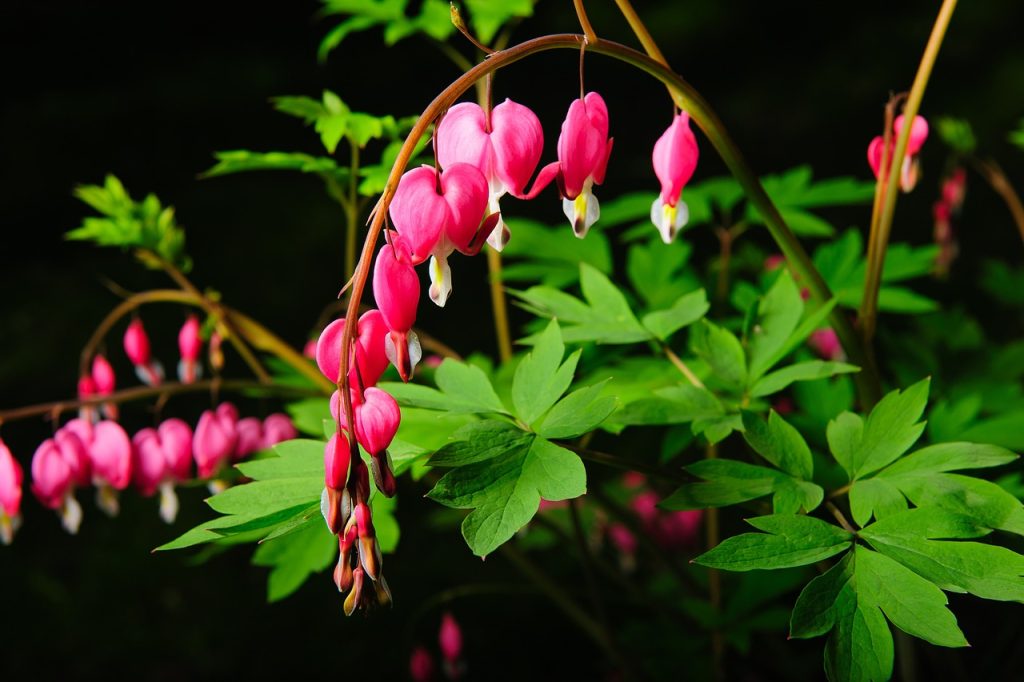
The Bleeding Heart, known scientifically as Lamprocapnos spectabilis, is one of the most visually striking perennials. With its heart-shaped flowers that dangle elegantly from arching stems, it has become a staple in gardens across temperate climates.
While typically beautiful, Bleeding Hearts possess natural defenses against slugs. The plant does contain some mildly toxic properties, which often deter slugs from feeding on them. This attribute ensures that these stunning plants can thrive within diverse garden conditions.
When caring for Bleeding Hearts, plant them in rich, well-draining soil that retains some moisture. They prefer partial to full shade and green foliage that turns a stunning gold in the fall. Regular watering promotes healthy blooms, which attract various pollinators while providing a sweet fragrance to the garden.
Blue-eyed Mary (Omphalodes verna)
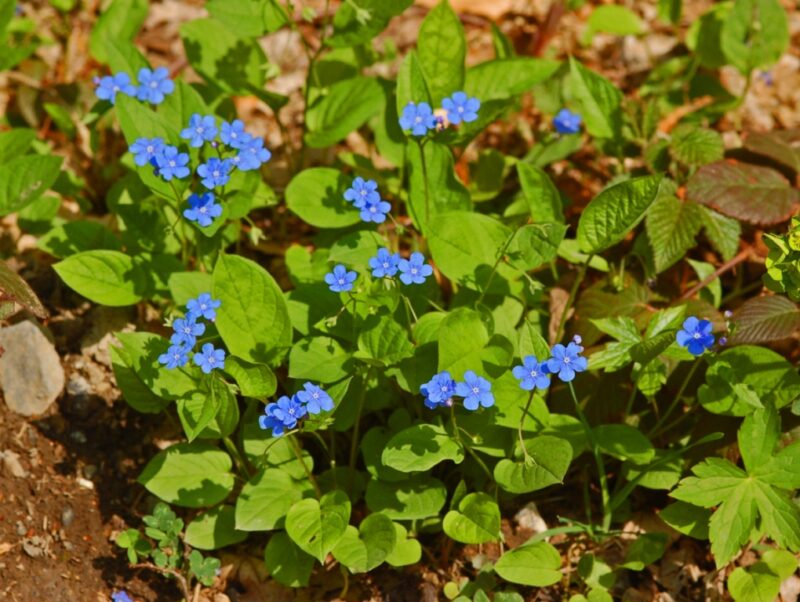
Blue-eyed Mary, known scientifically as Omphalodes verna, is a charming perennial that graces gardens with its delicate, dainty blue flowers. These beautiful blooms typically blossom in early spring, covering the plant in a sea of color and attracting the attention of pollinators, including bees and butterflies.
One of the key attributes of Blue-eyed Mary is its low-growing habit and dense foliage, which make it less accessible to slugs. The hairy texture of its leaves does not appeal to these pests, enabling Blue-eyed Mary to flourish even in areas where slugs might usually wreak havoc.
This plant thrives in partial to full shade and prefers moist, well-drained soil. It’s an excellent choice for woodland gardens or shady borders, where its striking blue flowers can light up dark corners. The foliage often turns a vibrant shade of green in the fall, providing visual interest even when blooms are sparse. Furthermore, Blue-eyed Mary can spread relatively quickly through self-seeding, allowing its beauty to permeate your garden effectively.
Bluebeard (Caryopteris)
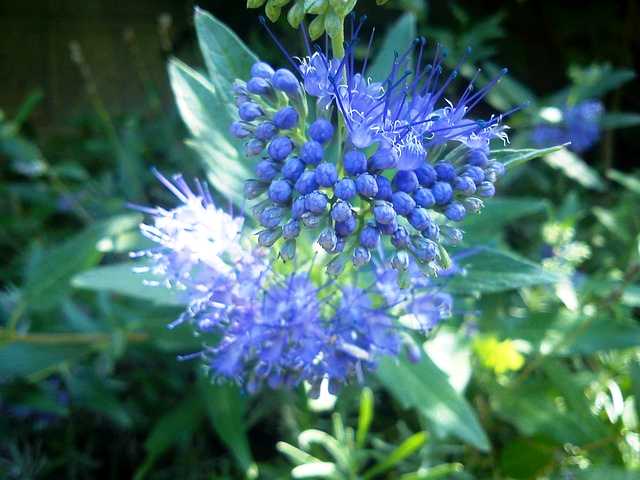
Bluebeard, or Caryopteris, adds a delightful splash of blue to gardens late in the summer and early autumn. With its vibrant, clustered blossoms and aromatic foliage, this perennial shrub is both visually stunning and beneficial for pollinators, drawing in bees and butterflies.
Slugs tend to steer clear of Bluebeard due to its aromatic leaves and tougher texture. The natural oils present in the foliage can deter these pests, allowing Bluebeard to thrive in gardens even where snails and slugs are a concern.
Bluebeard prefers well-drained soils in full sun. It’s a robust plant that can tolerate drought conditions once established, making it an ideal choice for low-maintenance gardens. With its attractive color and resistance to slug damage, Bluebeard serves not only as an excellent ornamental plant but also contributes to the overall health of your garden’s ecosystem by attracting beneficial insects.
Bluebells (Hyacinthoides)
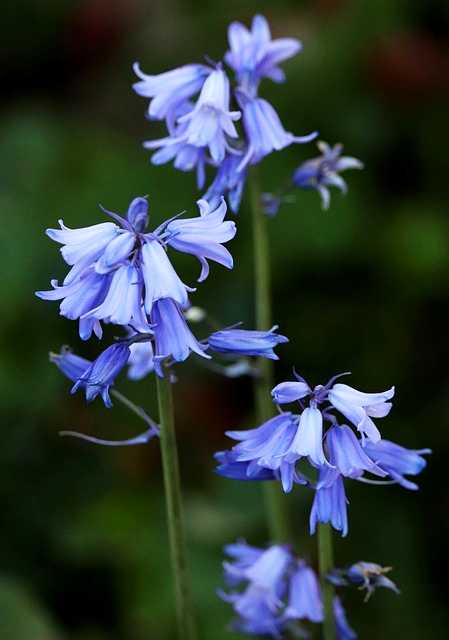
Bluebells, belonging to the Hyacinthoides, are iconic spring flowers often found in woodlands and hedgerows. Their drooping, bell-shaped blue flowers form beautiful carpets that herald the arrival of spring.
These perennial plants show a natural resistance to slugs due to their slightly toxic leaves and flowers. The presence of these compounds makes the foliage less appealing to slugs and snails, allowing Bluebells to thrive with minimal pest interference.
Bluebells prefer moist, well-drained soils in partial to full shade. They are often planted in shaded areas of gardens, where they can spread through bulb division and natural reseeding. Beyond their stunning aesthetic appeal, Bluebells are also vital for local ecosystems, providing nectar for honeybees and other pollinators.
Bugle (Ajuga reptans)
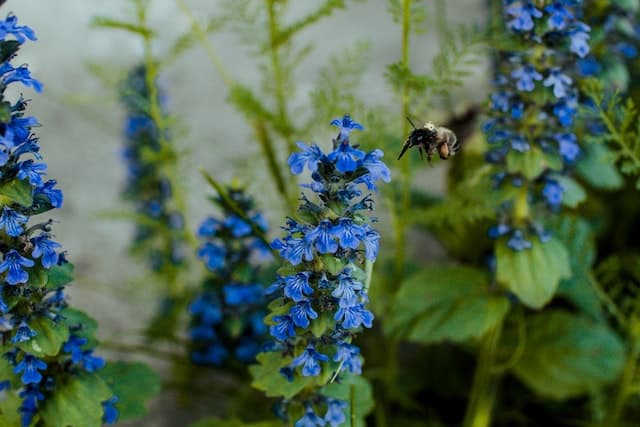
Bugle, or Ajuga reptans, is a versatile ground-covering plant that features glossy green leaves and vibrant blue flower spikes that appear in spring. This hardy perennial is not only valued for its beauty but also its resilience, making it a popular choice for both gardeners and landscape designers.
The texture of Bugle’s leaves, combined with its rapid growth habit, helps deter slugs from making a meal out of them. Its dense foliage conceals the soil beneath, reducing the likelihood of slug activity, ensuring the plant can flourish even in areas known for pest problems.
Bugle grows well in a variety of soil types and thrives in both sun and partial shade. It becomes especially vibrant in shaded areas, making it a fantastic choice for woodland gardens or under trees. Additionally, Bugle attracts pollinators and serves to stabilize soil in areas susceptible to erosion, providing benefits beyond its surface beauty.
Burningbush (Bassia scoparia)
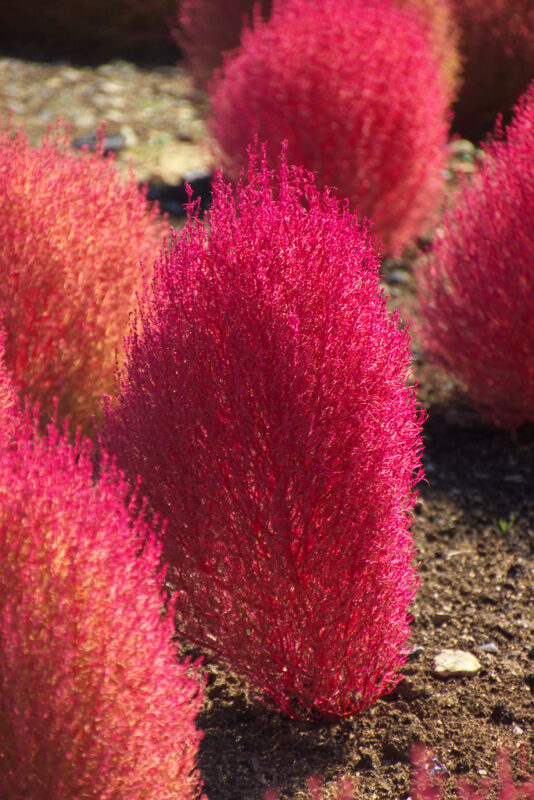
Burningbush, or Bassia scoparia, is an annual plant that is celebrated for its spectacular fall foliage, turning brilliant shades of red, gold, and orange. While this plant thrives in various regions, especially in full sunlight, it also stands out in the garden for its resilience against various pests, including slugs.
The tough, fibrous texture of Burningbush’s leaves makes them less palatable to slugs, allowing these plants to flourish where many others might suffer. Consequently, Burningbush can be an excellent addition to a garden looking for vibrant seasonal color without the worry of slug damage.
Growing fastest in well-drained soils and full sun, Burningbush can reach heights of up to three feet, often used as an ornamental plant or hedge. Its stunning fall display and ability to withstand slug predation make it a perfect choice for homeowners wanting a splash of color throughout the seasons.
Bushy Aster (Symphyotrichum dumosum)
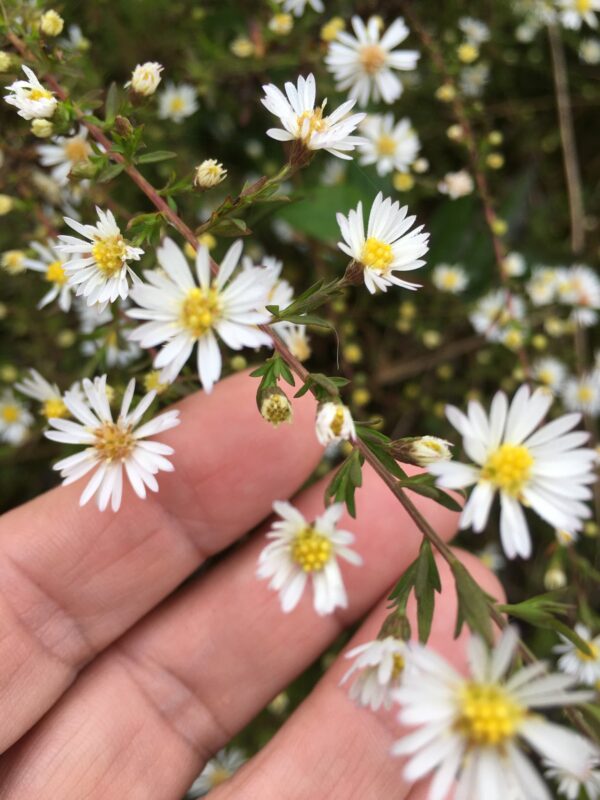
Bushy Aster, scientifically named Symphyotrichum dumosum, is a perennial favorite among gardeners for its bright daisy-like flowers that bloom from late summer into fall. With a bushy growth habit and abundant inch-wide flowers in shades of purple, this plant serves as a stunning addition to autumn gardens.
In terms of slug resistance, the bushy, upright structure of the Bushy Aster, combined with its slightly rough foliage, helps deter slugs from climbing on and consuming the plant. It tends to thrive even when slug issues arise, making it suitable for creating colorful displays along pathways and borders.
Bushy Aster prefers well-drained soil in sunny to partially shaded conditions. It’s tolerant of various environmental conditions, from drought to wet soil, making it a versatile choice for different garden landscaping styles. Additionally, its blooms are appreciated by pollinators, including butterflies and bees, enhancing the overall biodiversity of the garden.
Busy Lizzie (Impatiens)
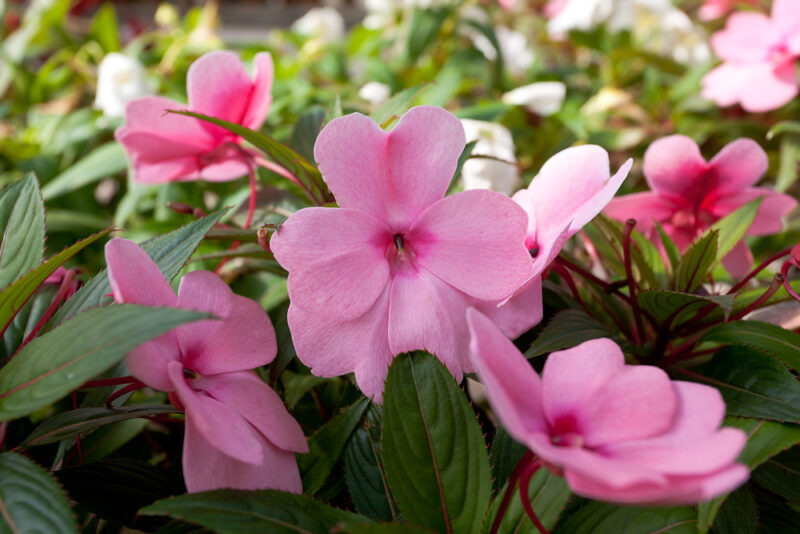
Though Busy Lizzie, also known as Impatiens walleriana, is commonly recognized for its vibrant blossoms in shades of pink, white, and red, it has one slight vulnerability—you guessed it: slugs! However, certain species and hybrids within the display some level of resistance, especially when grown under the right conditions.
The thick waxy leaves of these plants can deter some slug infestations, allowing Busy Lizzie to thrive in partially shaded areas. Moreover, they generally prefer moist environments and perform best in rich, well-drained soil, making them perfect for cultivated garden beds or shady corners.
Regular watering ensures these beautiful flowers bloom abundantly throughout the summer, providing bursts of color in gardens. Additionally, Busy Lizzie attracts pollinators while enhancing the beauty of shaded areas, showcasing how resilient flowers can flourish even in typical slug-prone regions.
California Poppy (Eschscholzia californica)
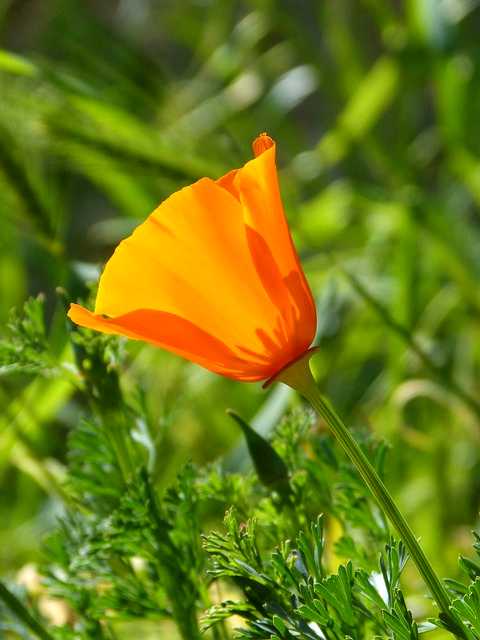
The California Poppy, scientifically known as Eschscholzia californica, is a stunning wildflower that adds vibrant splashes of orange and yellow to gardens. Renowned as the state flower of California, these annuals have gained popularity for their drought-resistance and ability to thrive in poor soils.
California Poppies possess a naturally bitter taste, which can deter slugs from consuming their foliage. This quality enables them to flourish even amidst a slug invasion, making them a suitable addition to gardens where slugs can be a problem.
These poppies prefer full sun and well-drained soils, ideally cultivated in areas that receive moderate watering, as they have an affinity for drier conditions once established. Their impressive blooms attract bees and butterflies, enriching the garden’s ecosystem. Additionally, California Poppies are self-seeding, promising to return year after year without much effort from gardeners.
Campion (Silene)
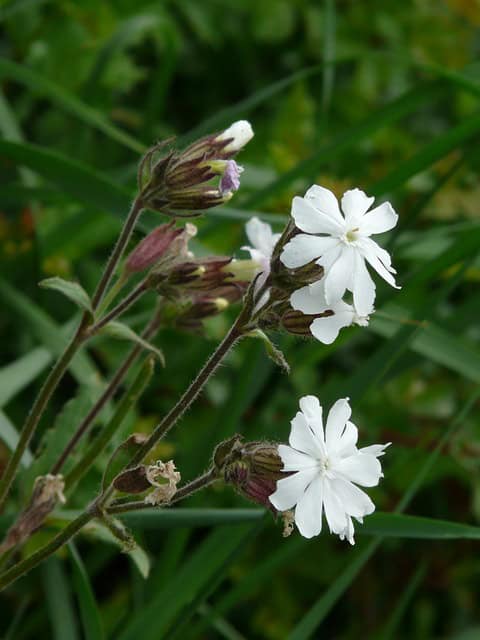
The Campion flower, belonging to the Silene, is known for its delicate, cup-like blossoms that bring charm to any garden. These perennial flowers can be found in a range of colors, including red, pink, and white. Their adaptability to various conditions allows them to be used in rock gardens, borders, and wildflower areas.
Campion’s resistance to slugs arises from its hairy foliage, which tends to deter these pests. The robust structure of the leaves makes it less appealing for slugs, enabling Campion to thrive even in gardens prone to infestations.
This versatility allows Campion to flourish in poor, well-drained soils and full sun to partial shade. Blooming in late spring to early summer, these flowers attract various pollinators, enhancing their value as ornamental plants and supporting biodiversity in garden ecosystems.
Canadian Goldenrod (Solidago canadensis)
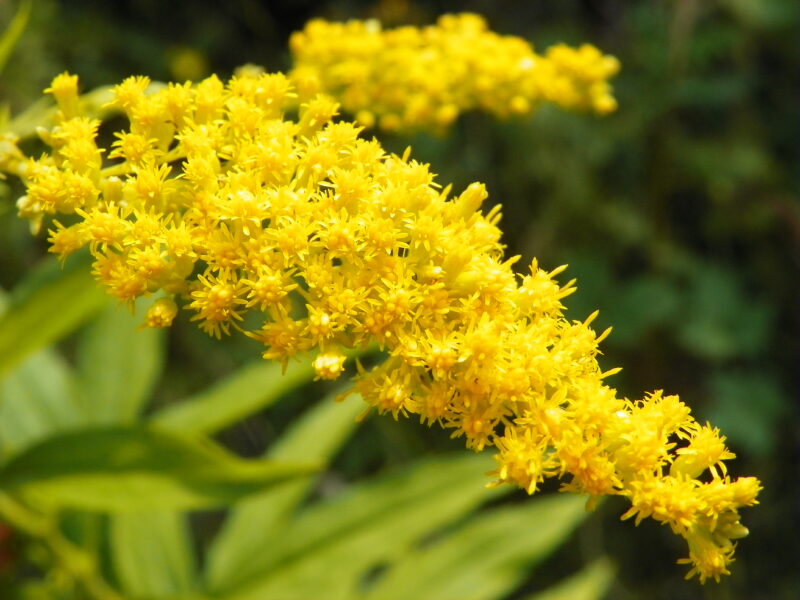
Canadian Goldenrod, or Solidago canadensis, is a native perennial mountain plant that blooms in late summer to early fall. Its tall, arching stems are crowned with clusters of bright yellow flowers that attract countless pollinators, including butterflies and bees, thereby making it a vital component of any pollinator garden.
The robust structure and slightly hairy texture of the leaves on Canadian Goldenrod can serve as effective barriers against slug activity. Slugs often avoid plants with rough foliage, providing an edge to Goldenrod when confronting these pests.
Canadian Goldenrod grows well in a range of soil conditions, preferring full to partial sun. It’s adaptable and resilient, thriving even in somewhat poor soils. Its long-lasting blooms not only offer visual appeal but also contribute significantly to wildlife preservation, ensuring your garden remains lively and productive into the fall months.
Candytuft (Iberis)
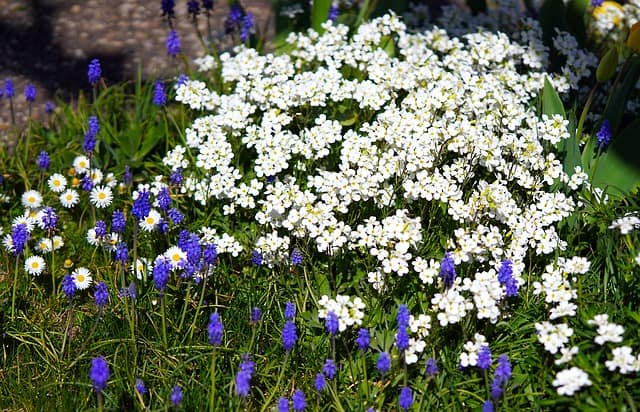
Candytuft, especially from the Iberis, is well-loved for its eye-catching clusters of white flowers that bloom profusely in spring. This hardy perennial not only beautifies garden beds but is also robust and resilient in varying soil types.
Candytuft’s somewhat leathery leaves and foliage can deter slugs, giving these plants a natural advantage. Their toughness means that they can often resist damage from these pests while contributing a soft, romantic appearance to any garden setting.
These plants thrive in full to partial sun, blooming best in well-drained soil. A favorite among pollinators, Candytuft’s flowers also offer a delightful scent, making them a lovely addition to garden borders and rockeries. They can quickly fill in bare spots, rewarding gardeners with long-lasting beauty and ecological benefits.
Carex
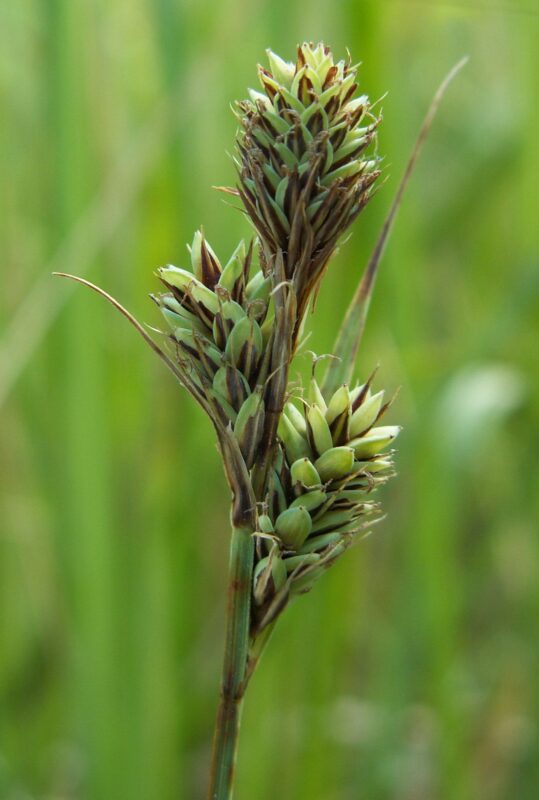
Carex, commonly known as sedges, is a diverse featuring many species that thrive in various habitats. With their grassy appearance, these plants may not traditionally stand out but provide essential ecological benefits. Their tolerance to moisture and adaptability to different soil types helps them flourish in damp, shady areas as well as sunnier settings.
Many Carex species exhibit toughness in their foliage, providing them with a level of slug resistance that ensures they can withstand herbivore pressure. Their fibrous, dense growth habit improves ground cover, making them valuable for soil stabilization.
Growing Carex in your garden can harmonize beautifully with other plant varieties. They prefer well-drained soils but are tolerant of wet conditions, making them versatile. Their long-lasting green foliage provides texture and dimension, even during the off-season, contributing to gardens throughout the year.
Carnations (Dianthus species)
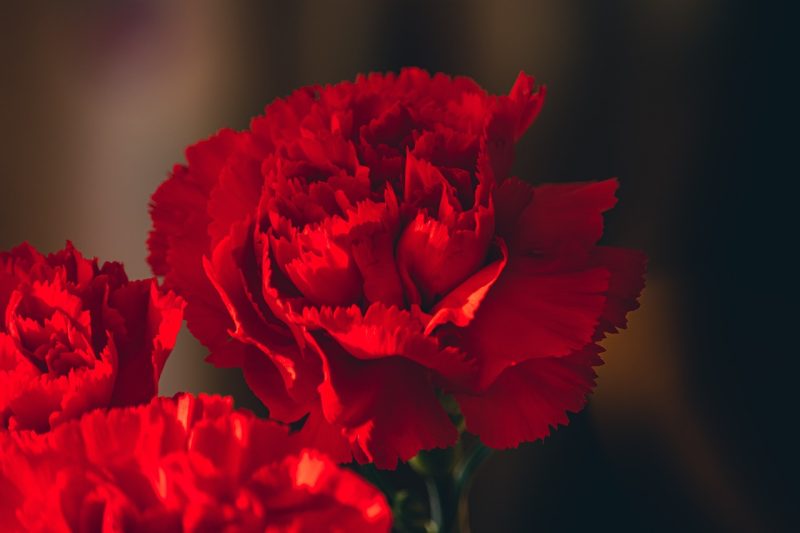 Carnations, particularly the Dianthus species, are well-celebrated flowers that come in a dazzling variety of colors and sizes. Known for their delightful, clove-like fragrance, these flowers symbolize love and admiration, making them a popular choice in gardens and floral arrangements.
Carnations, particularly the Dianthus species, are well-celebrated flowers that come in a dazzling variety of colors and sizes. Known for their delightful, clove-like fragrance, these flowers symbolize love and admiration, making them a popular choice in gardens and floral arrangements.
The resilient structure of carnation leaves deters slugs from consuming them, allowing these flowers to thrive despite pest activity. Additionally, their aesthetic appeal and long blooming season contribute to well-maintained gardens.
Carnations prefer full sun and must be planted in well-drained soil to avoid rot. Their drought tolerance and ease of care make them a favorite among gardeners. With their vibrant display and robust nature, carnations shine in gardens, attracting not only human admirers but also beneficial pollinators.
Catchflies (Lychnis)
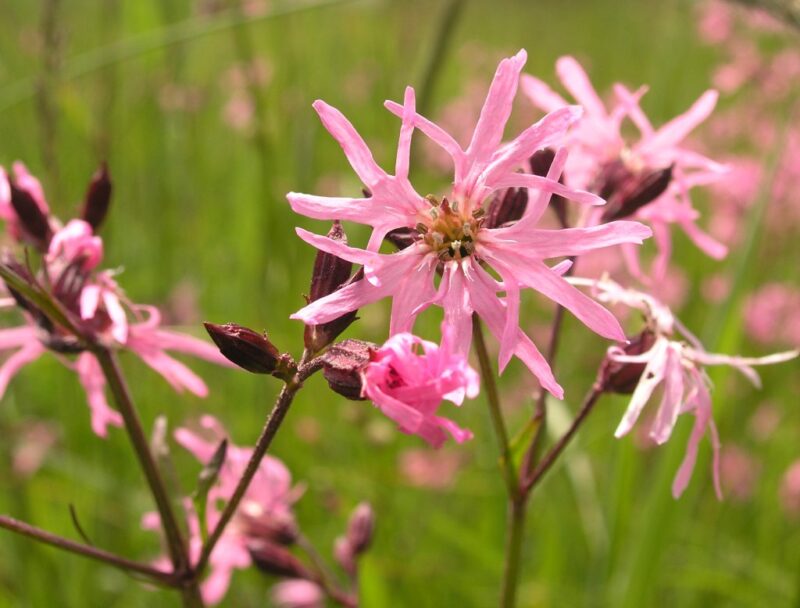
Catchflies, particularly from the Lychnis, are beloved for their vibrant flowers and sticky, glandular stems. Their bright reds and pinks provide eye-catching accents, adding beauty to any garden.
While slugs can be drawn to various foliage types, the sticky nature of catchflies can deter these pests while allowing the flowers to prosper. The unusual texture of their stems provides a unique defensive mechanism, ensuring they fare well against slug predation.
Catchflies tend to thrive in well-drained soil and prefer full sun, making them a perfect addition to sunny spots in garden borders or rockeries. Their blooming period peaks in late spring through summer, attracting pollinators while providing a delightful spectacle of color and texture.
Catnip (Nepeta cataria)
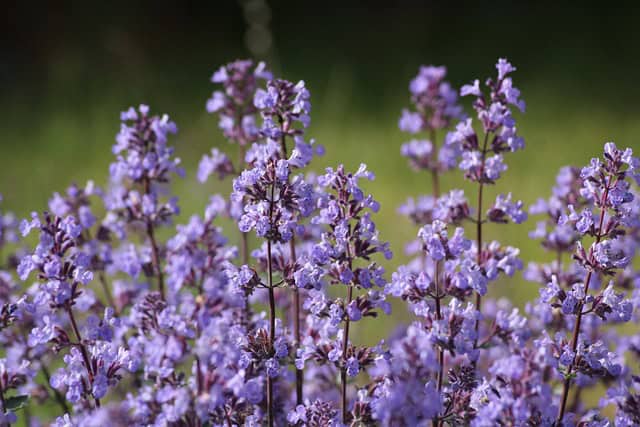
Catnip, or Nepeta cataria, is well-known for attracting cats, but it also has substantial gardening virtues. This perennial herb, with its gray-green linen, offers tall spikes of lavender-blue flowers that bloom throughout the summer, making it a popular choice for herb gardens.
The strong aroma emitted by catnip leaves tends to repel slugs, creating a natural barrier against these pests. Consequently, gardeners can enjoy the beauty of catnip while knowing that it possesses unique features that enhance its resilience against common garden threats.
Catnip prefers full sun and well-draining soil, allowing it to flourish with minimal care. Its drought resistance once established makes it an efficient choice for low-maintenance gardens, providing both visual appeal and a delightful scent. Additionally, catnip supports local wildlife, attracting bees and other beneficial pollinators while adding an aromatic aspect to your garden.
Centranthus
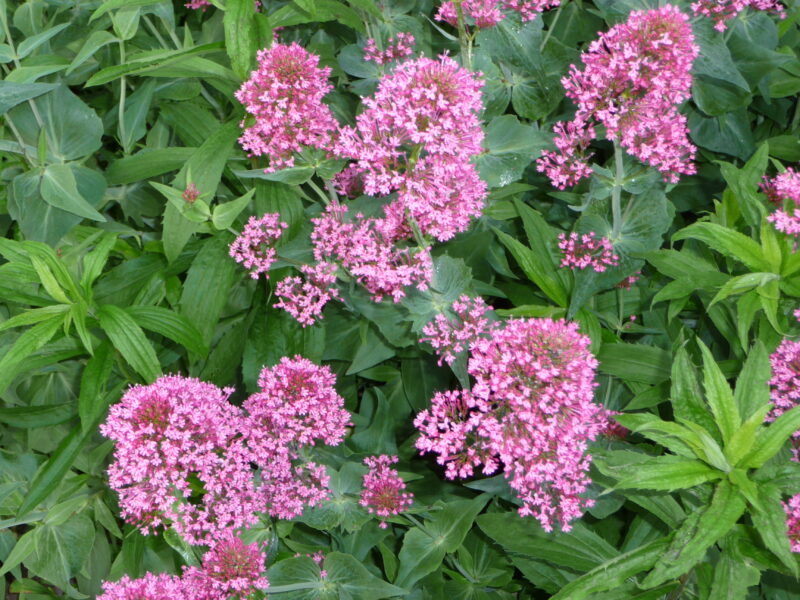
The Centranthus, including species like Red Valerian, showcases spiky flower clusters that attract attention. These plants bear beautiful red, pink, or white flowers characterized by a sweet fragrance that appeals to various pollinators.
Plants from the Centranthus effectively resist slugs due to their thick, textured leaves, which dissuade these pests from munching on their foliage. This natural resilience allows them to thrive in areas where slug pressure is prevalent.
Centranthus typically flourishes in well-drained soil, enjoying full sun to partial shade. Once established, they are drought-tolerant, making them ideal for low-maintenance gardens. Their ability to attract bees and butterflies while resisting slug damage signifies their vital role in diverse garden ecosystems.
China aster (Callistephus)
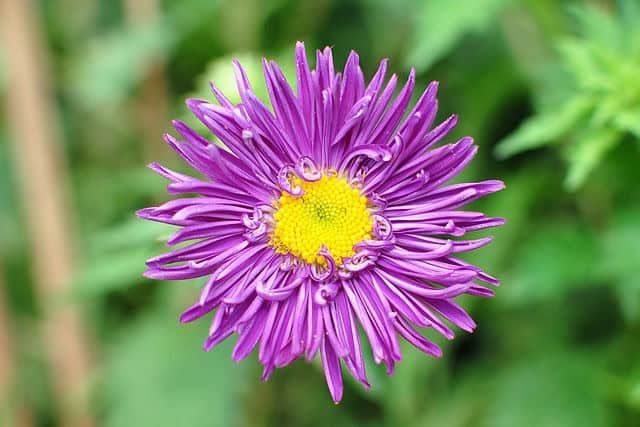
China asters, or Callistephus, are well-known annuals that produce striking flowers in various colors. Their bushy growth and vibrant blooms from late summer to fall invigorate gardens, creating visual allure during a season when many plants begin to fade.
With a hardiness that varies by cultivar, some China asters show resilience against slugs. The sturdiness of their leaves can lead to a higher likelihood of survival amid slug pressure, allowing these beautiful flowers to continue dazzling in the garden.
China asters prefer sunny conditions and well-drained soils, thriving when watered adequately. They are excellent for providing seasonal color in flower beds and containers while attracting pollinators. Their cheerful blooms, with a slightly fuzzy texture, make them a delightful addition to gardens aiming to resist pest activity while maintaining vibrant aesthetics.
Christmas Rose (Helleborus niger)
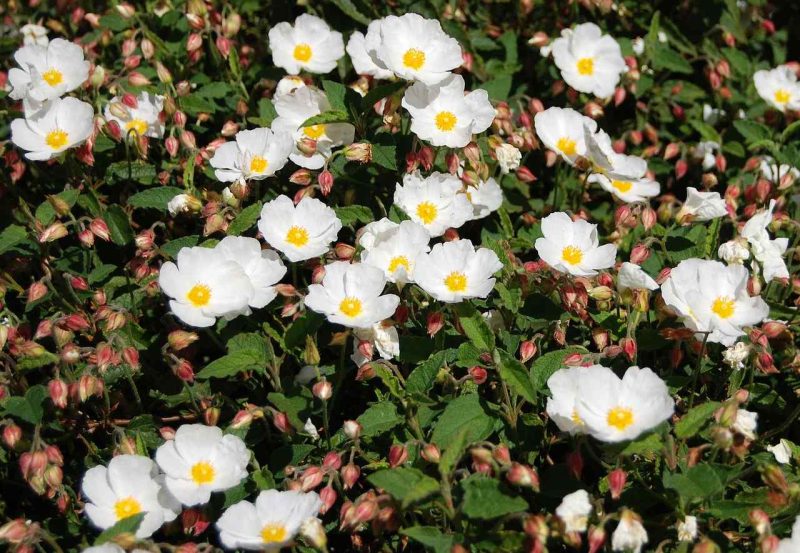
The Christmas rose, or Helleborus niger, brings an air of enchantment with its evergreen leaves and pure white, cup-shaped flowers that bloom in late winter to early spring. Loved for their resilience and early blooms, these perennial plants are a perfect choice for gardens looking to showcase winter interest.
Helleborus niger naturally resists slugs due to its bitter-tasting foliage and tough texture. This quality enables the plant to thrive despite typical slug-infested conditions, ensuring that these lovely blooms can withstand winter and spring.
For optimal growth, Christmas roses prefer well-drained, rich soils and partial shade. They perform exceptionally well in woodland environments, showcasing their elegance without excessive care. As early bloomers, they not only light up early spring but also provide essential nectar for emerging pollinators, enriching the garden’s ecosystem while providing unparalleled seasonal beauty.
Cinquefoils (Potentilla)
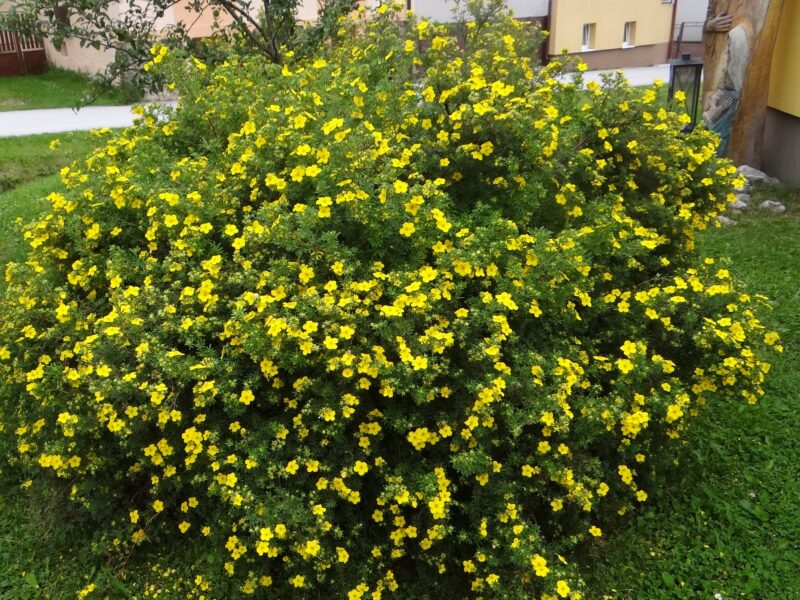
Cinquefoils, belonging to the Potentilla, are hardy and adaptable perennials known for their beautiful, five-petaled flowers in shades of yellow, white, and pink. These plants are valued for their resilience and long blooming period, offering cheerful flowers from spring to fall.
Their fibrous foliage can deter slugs from consuming the leaves, making Cinquefoils a reliable option in gardens commonly targeted by these pests. Consequently, gardeners can revel in the plant’s tenacity while enjoying its vibrant and cheerful display.
Cinquefoils prefer well-drained soils and will thrive in full sun to partial shade. They are particularly drought-resistant, making them excellent for rock gardens or areas with less water. Additionally, Cinquefoils serve as ground covers while attracting beneficial insects, enhancing the overall aesthetic and ecological stability of the landscape.
Clove Pink (Dianthus caryophyllus)
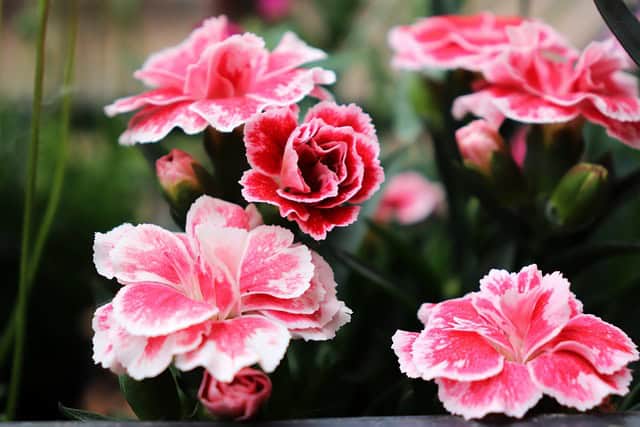
The Clove Pink, or Dianthus caryophyllus, is a delightful perennial known for its vibrant blooms and clove-scented foliage. These fragrant flowering plants, often seen in borders and containers, have a marvelous ability to captivate garden enthusiasts.
In terms of slug resistance, Clove Pink’s tough texture and aromatic leaves make them less appealing to slugs, allowing them to flourish even amidst pest invasions. This quality ensures that the colorful, fragrant flowers delight visitors while thriving throughout the growing season.
Clove Pink prefers well-drained soil and full sun, providing optimal conditions for vibrant blooming. They are surprisingly drought-tolerant once established, making them low-maintenance allies in gardens. As a bonus, their delightful fragrance can enhance the overall sensory experience in any garden, while their charm adds timeless beauty.
Cohosh (Cimicifuga)
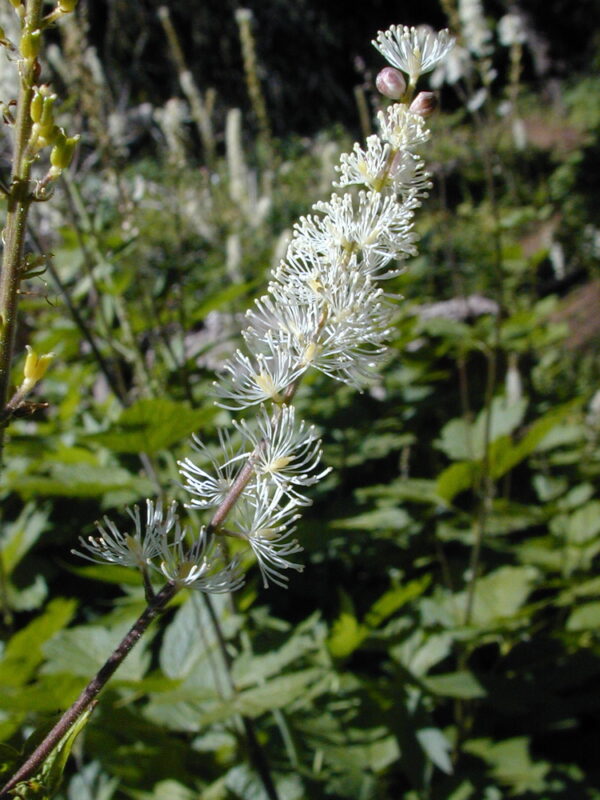
Cohosh, particularly the Cimicifuga, includes plants commonly referred to as bugbane. These perennials are cherished for their impressive foliage and stunning, fragrant white flowers that bloom in late summer to fall.
One of the strengths of Cohosh lies in its effective slug resistance. The somewhat bitter-tasting and fibrous foliage makes this plant unappealing to many pests, including slugs, allowing Cohosh to thrive in less-than-ideal conditions.
Cohosh typically flourishes in rich, well-drained soil under partial to full shade, making it ideal for woodland gardens. This adaptability blends well within diverse planting schemes and attracts beneficial insects. With their dramatic height and unique architectural presence, Cohosh plants can elevate any gardening space while mitigating the challenges posed by slugs.
Comfrey (Symphytum)
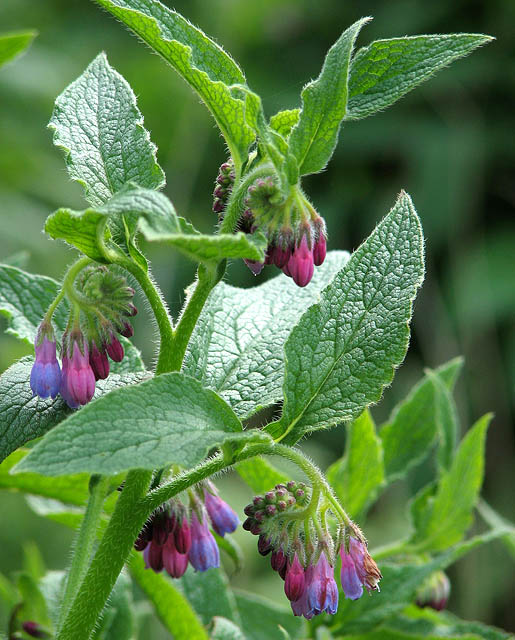
Comfrey is a powerful perennial herb known for its large, broad leaves and bell-shaped flowers, usually found in shades of purple, blue, and pink. Revered for its beneficial uses and nutrient-rich leaves, it contains compounds that can enhance soil health and attract pollinators.
Though slugs may occasionally target Comfrey, its formidable size and robust nature often give it an edge against these pests. Thick leaves create a natural barrier, ensuring the plant can grow strong even in pest-prone areas.
Comfrey thrives in well-drained soil with plenty of sunlight; however, it can also tolerate partial shade. Once established, Comfrey’s ability to grow in various conditions makes it a valuable addition to gardens focused on soil improvement and sustainability. Its large leaves act as a dynamic ground cover, promoting thriving growth while simultaneously contributing to the overall ecology.
Coneflowers (Echinacea)
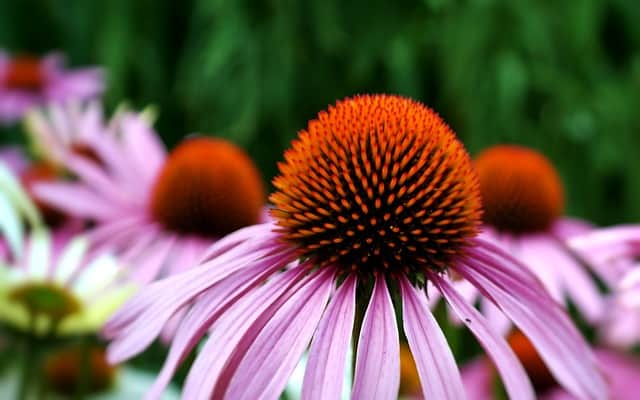
Coneflowers belong to the Echinacea, celebrated for their striking daisies with prominent central cones and vibrant petals that can vary from pink to purple. Known for medicinal properties and broad appeal, these perennials have gained popularity for their resilience in various environments.
Though some coneflower varieties may attract slugs, many cultivars display resistance due to their robust growth and thorny foliage. Their tougher structure provides a barrier, allowing coneflower plants to thrive amid slug activity.
Echinacea thrives in full sun and well-drained soil, demonstrating remarkable drought tolerance once established. Their lengthy blooming period extends into the autumn months, drawing in bees and butterflies while contributing to a vibrant garden ecosystem. Whether used in medicinal preparations or as ornamental plants, coneflowers are a compelling choice for any garden.
Coral Bells (Heuchera)
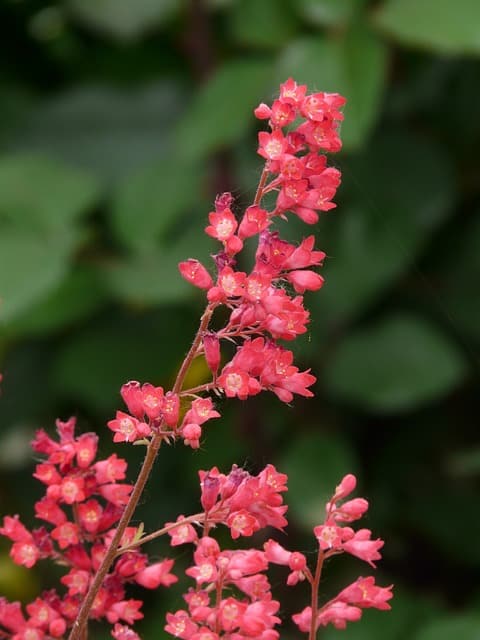
Coral Bells, from the Heuchera, are renowned for their stunning foliage and delicate flower spikes. Available in a plethora of colors, from deep burgundy to bright green, these perennials are used to grace beds and borders, offering unique textures and hues.
Many Coral Bell cultivars display slug resistance due to their thicker leaves and adaptability. This characteristic helps mitigate damage from pests while allowing these charming plants to exhibit their delightful qualities.
These plants flourish in well-drained soils with partial shade to full sunlight, benefiting from consistent moisture without soggy roots. In addition to adding color and charm to gardens, Coral Bells are a favorite among pollinators, enhancing biodiversity and connectivity in your outdoor space.
Corn Marigold (Glebionis segetum)
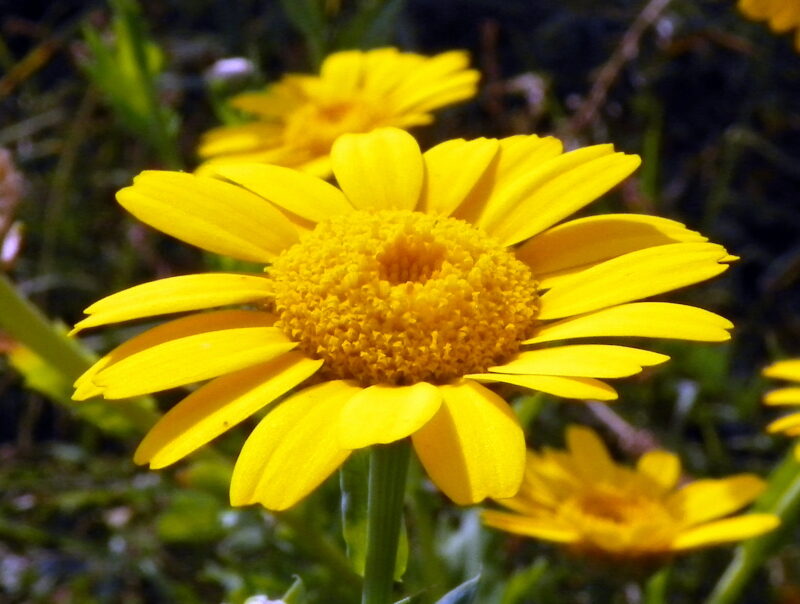
Corn Marigold, known scientifically as Glebionis segetum, is an annual flower celebrated for its beautiful yellow blossoms adorned with dark centers. Commonly seen in wildflower meadows and agricultural fields, this plant offers a burst of sunshine wherever it grows.
Their natural defenses against slugs stem from their fibrous and somewhat tough foliage, which makes them less desirable as food for these pests. This quality allows Corn Marigold to flourish despite any foraging by slugs in the garden.
These flowers prefer well-drained soils and can handle a variety of growing conditions. Corn Marigold is particularly well adapted to sunny sites, receiving adequate sunlight to produce their cheerful blooms. Their blooms attract butterflies and other beneficial insects, supporting the local ecosystem while elevating the overall beauty of the design.
Cotton Thistle (Onopordum acanthium)
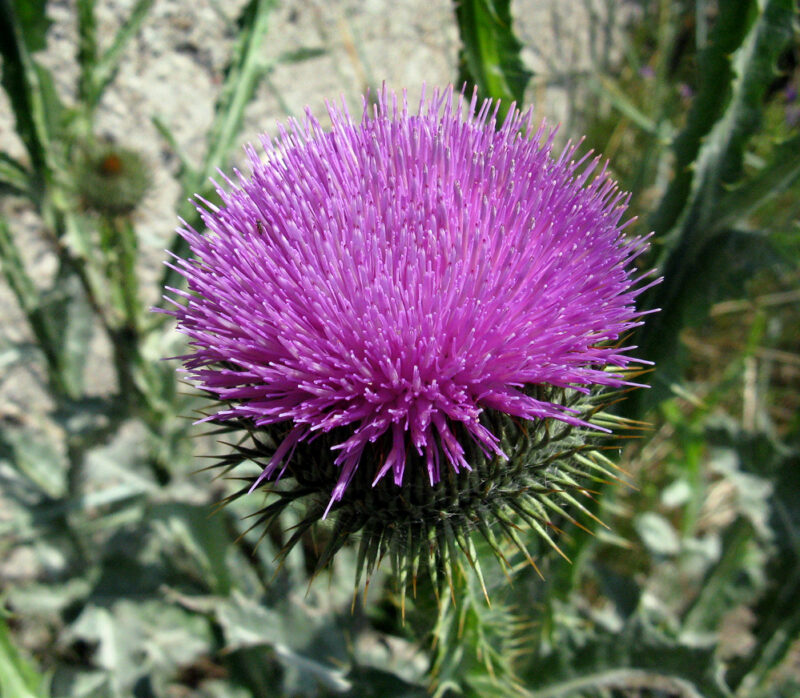
Cotton thistle, or Scotch thistle, is a biennial plant known for its tall stature and striking purple flowers. Its deeply lobed leaves are covered in fine, cottony hairs, contributing to its distinctive appearance.
While cotton thistle can be a stunning addition to gardens due to its dramatic blooms and ability to attract pollinators, it is also considered a weed in many regions, which can lead to slug infestations as they prefer lush, overgrown areas. Its spiny texture deters many pests, including slugs, making it more resilient in slug-prone environments.
Cotton thistles thrive best in full sun and well-drained soils, and they can adapt to various soil types. However, due to their aggressive growth, it’s essential to manage their spread to prevent them from overwhelming other plants in the garden.
Cowslip (Primula veris)
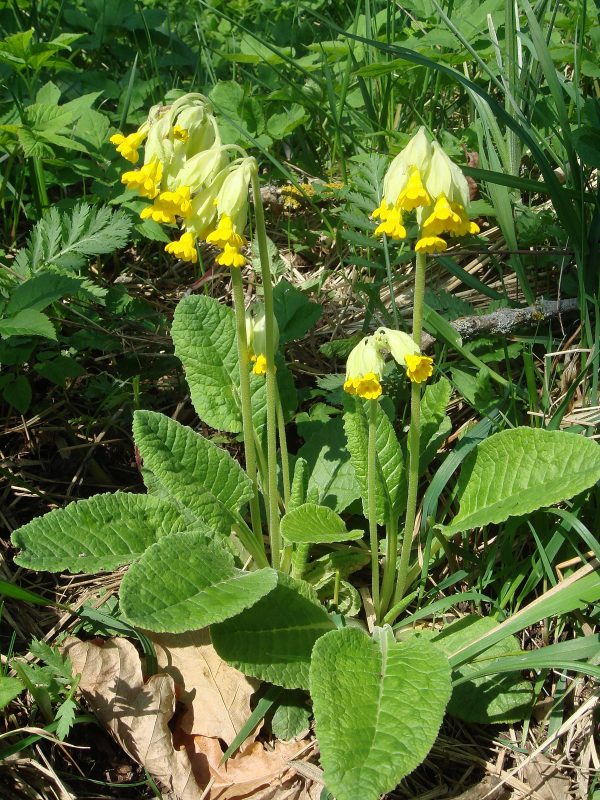
Cowslip, scientifically known as Primula veris, is a perennial flowering plant recognized for its charming clusters of yellow, fragrant flowers that appear in spring. It’s commonly found in fields and woodland edges, bringing a cheerful touch of color to gardens.
Cowslip possesses a hardy structure that can help fend off slugs, making it a reliable choice for gardens susceptible to pest problems. Its slightly hairy leaves can deter slugs from munching on them.
These plants prefer moist, well-drained soil and thrive best in partial shade. When planted in a naturalistic setting, cowslips often self-seed, enhancing the garden’s biodiversity while providing vital resources for pollinators during the early spring.
Cranesbills (Geranium)
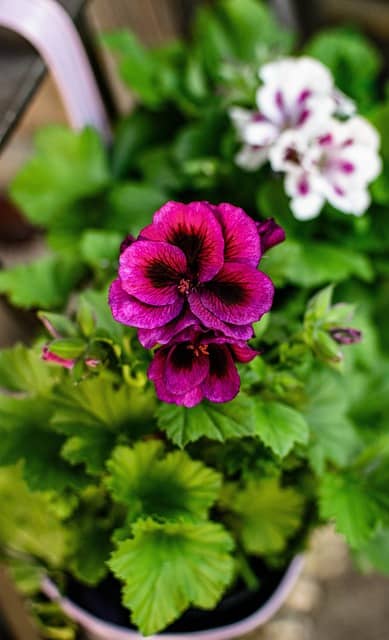
Cranesbills, from the Geranium, are a diverse group of flowering perennials that offer beautiful, often deeply lobed leaves and an array of colorful blooms ranging from blue to pink. Their impressive foliage provides visual interest even when they are not in flower.
Some cranesbill varieties have built-in resistance to slugs due to their less palatable leaves. This resilient structure helps them thrive in gardens where slugs might pose a more significant threat to other plants.
Cranesbills prefer moderately fertile, well-drained soil and full sun to partial shade. They adapt well to a variety of garden settings, from borders to rock gardens, and can be excellent for attracting pollinators like bees and butterflies.
Creeping Phlox (Phlox subulata)
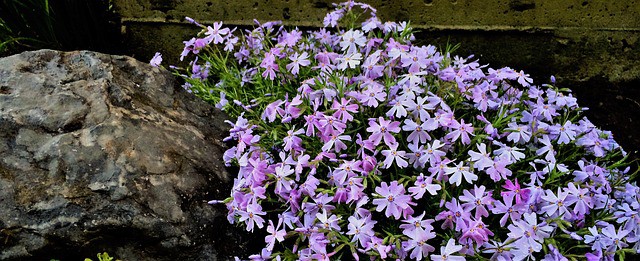
Creeping phlox, also known as moss pink or mountain phlox, is a beloved groundcover perennial famous for its stunning carpet of blooms that can cover garden beds in vibrant colors during the spring. The flowers come in shades of pink, purple, and white, creating a spectacular visual display.
Creeping phlox has a thick, hardy texture, making it less appealing to slugs. Its dense mat of foliage can provide an effective barrier, allowing it to thrive in conditions that might otherwise encourage slug activity.
This plant prefers well-drained, sandy, or rocky soils in full sun. It’s an excellent choice for sunny borders, rock gardens, and slopes, where it can effectively prevent soil erosion while enhancing the beauty of the landscape.
Curry Plant (Helichrysum italicum)
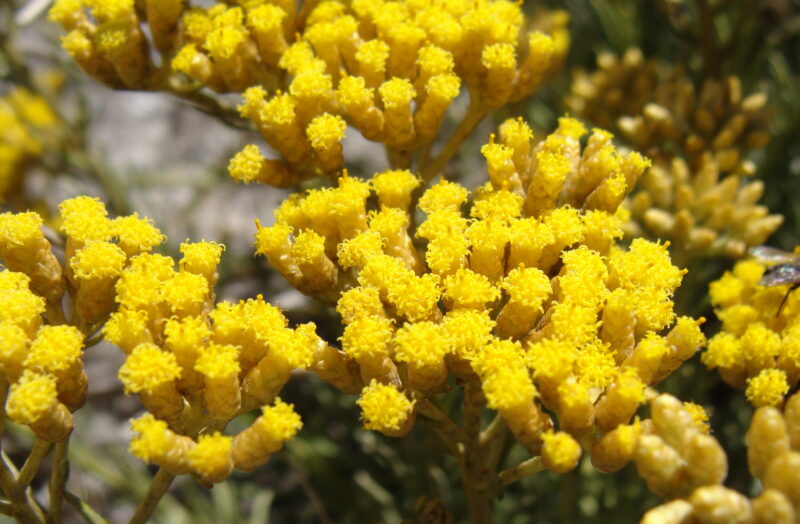
The curry plant, or Helichrysum italicum, is an aromatic perennial herb native to the Mediterranean region. Its striking silvery foliage and yellow, button-like flowers contribute to its aesthetic appeal. The plant is well-known for its curry-like scent, which has culinary and medicinal applications.
The robustness and aromatic nature of curry plants can help deter slugs and other pests, enabling it to flourish in gardens where slugs might typically thrive on less robust plants.
Curry plants prefer well-drained soil and full sun, making them ideal for Mediterranean-style gardens, rock gardens, or herb beds. Their drought resistance once established means they require minimal care, providing an aromatic addition to any garden.
Cyclamen
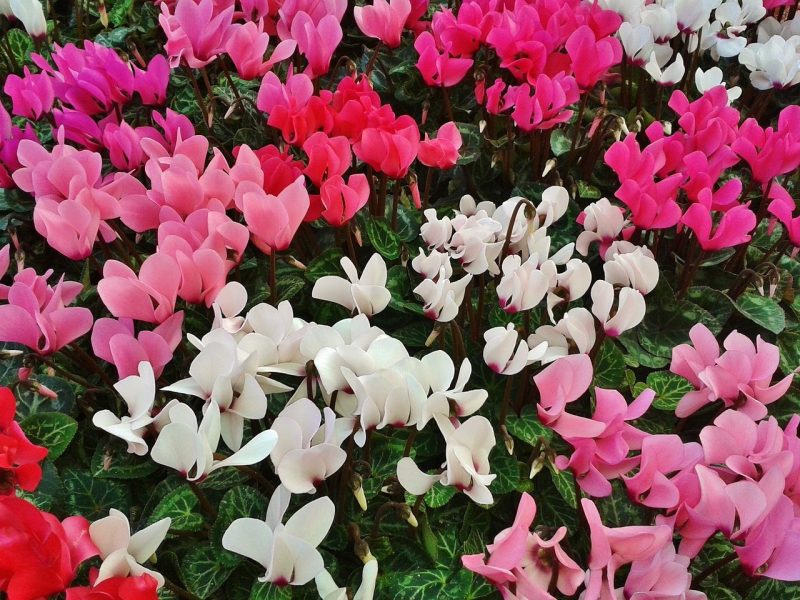
Cyclamen are delightful, tuberous perennials celebrated for their unique, heart-shaped leaves and drooping flowers that come in shades of pink, white, and purple. They offer a charming addition to shaded areas, blooming in winter and early spring.
Cyclamen possess a somewhat bitter taste which can deter slugs, allowing them to thrive even in environments where these pests might present an issue.
These plants prefer acidic, well-drained soils in partial to full shade. Cyclamen are ideal for woodland gardens or shaded borders, where they can naturalize and create a charming display of blooms amidst the greenery.
Cymbalaria muralis (Ivy-Leaved Toadflax)
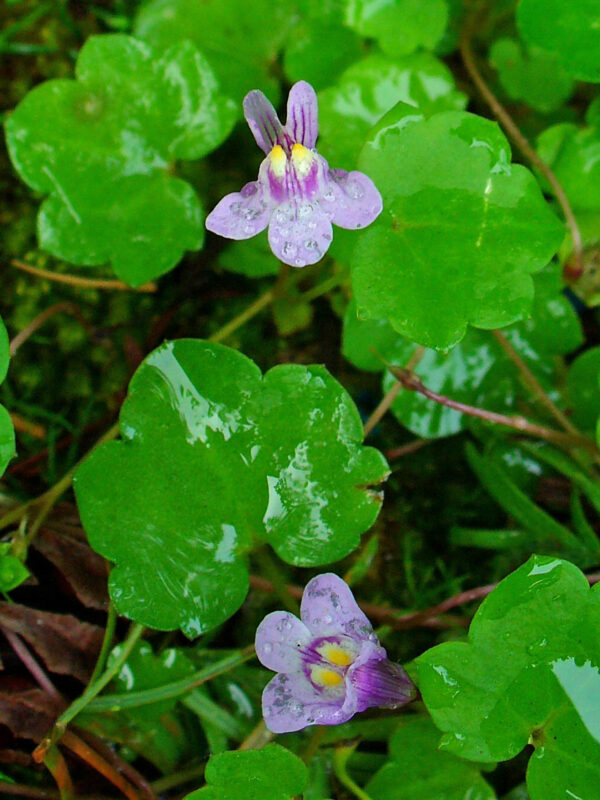
Cymbalaria muralis, or ivy-leaved toadflax, is a charming trailing perennial that thrives in crevices, walls, and rocky gardens. Its small, heart-shaped foliage and delicate purple flowers resemble miniature snapdragons, adding whimsy to any space.
The tough, slightly hairy leaves of ivy-leaved toadflax can help resist slugs, allowing this resilient plant to grow well even where slugs might feast upon more tender foliage.
Cymbalaria prefers well-drained soils, often flourishing in urban gardens or rocky terrains, making it a great choice for vertical gardens, wall pockets, and mixed borders.
Daisy (Bellis perennis)
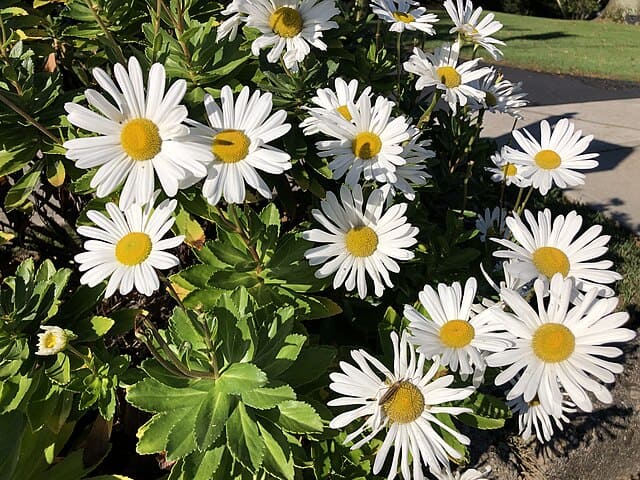
The common daisy, or Bellis perennis, is a beloved perennial known for its classic white petals and sunny yellow centers. Easily recognizable, daisies embody a sense of simplicity and charm, often used to symbolize innocence.
Daisies have a resilient structure that not only enhances their aesthetic appeal but also provides some resistance to slug activity. Their thicker leaves create an uninviting texture for slugs.
These plants thrive in full sun and well-drained soils, making them well-suited for cottage gardens, meadows, and wildflower plots, where their cheerful blooms delight enthusiasts of all ages.
Dalmatian Bellflower (Campanula portenschlagiana)
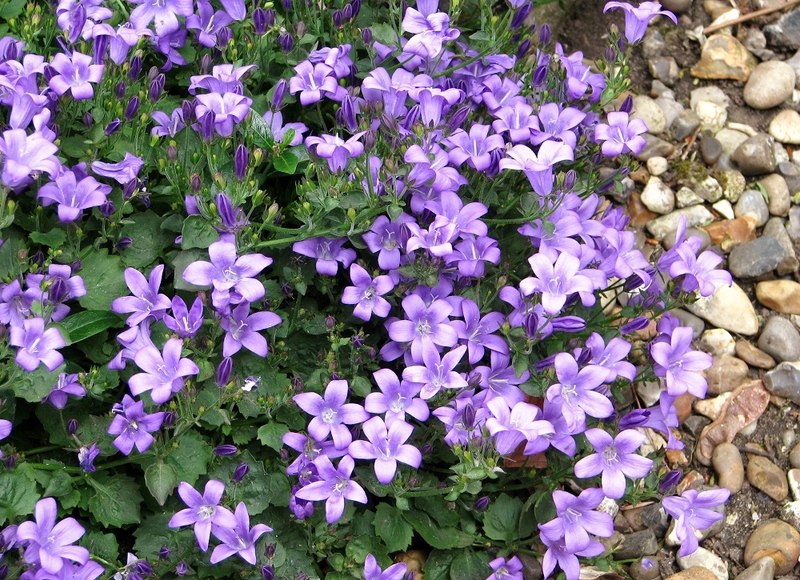
Dalmatian bellflower, or Campanula portenschlagiana, is a beautiful perennial that features cascading clusters of purple-blue flowers. These plants create a stunning ground cover that can brighten shady or partially sunny areas in gardens.
The tough, fibrous structure of Dalmatian bellflower can deter slugs, enabling overall resilience. This quality allows them to flourish in areas where slug activity is prevalent.
These bellflowers thrive in well-drained soil and perform best in partial to full shade. Their trailing habit makes them excellent for cascading over walls, rocks, and containers, making them a versatile and beautiful addition to any garden design.
Dame’s Gilliflower (Hesperis matronalis)
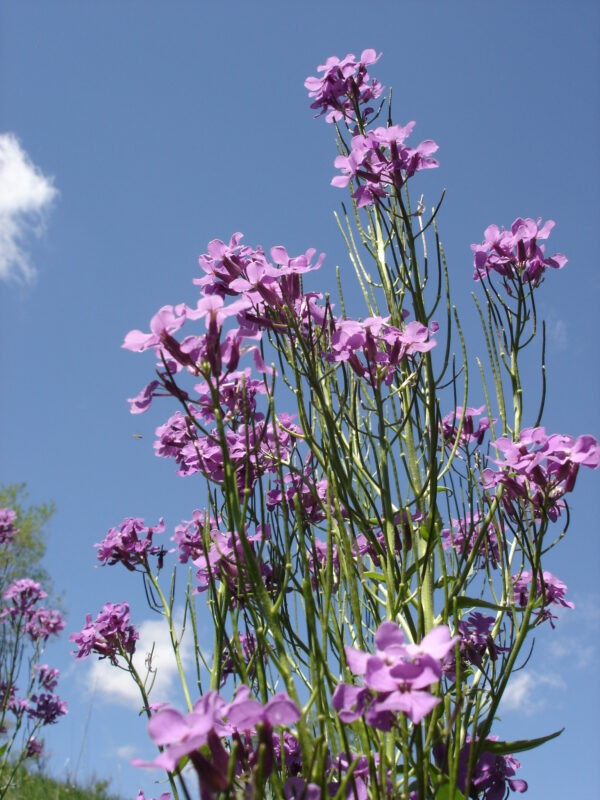
Dame’s gilliflower, or Hesperis matronalis, is a fragrant perennial that showcases clusters of four-petaled flowers in shades of purple, white, and pink. Often referred to as dame’s rocket, this plant infuses gardens with sweet scents during the late spring and early summer.
Hesperis may attract slugs, but its fibrous leaves can provide some degree of resistance, helping them endure the presence of these pests.
Dame’s gilliflower prefers well-drained, fertile soil in full sun to partial shade. They often naturalize, making them a charming choice for cottage gardens or mixed perennial borders, where their fragrance and beauty can be fully appreciated by both human and pollinator visitors.
Dane’s Blood (Pulsatilla vulgaris)
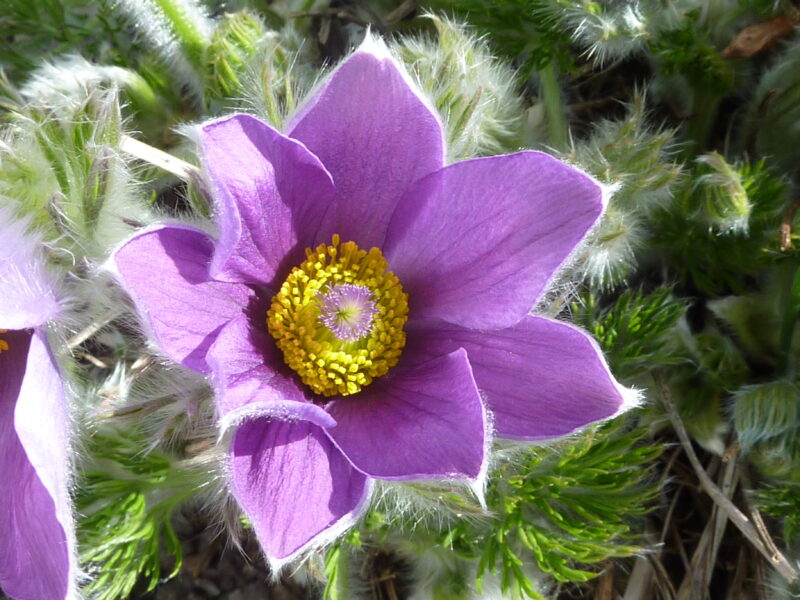
Dane’s blood, or Pulsatilla vulgaris, is a spring-blooming perennial known for its striking violet flowers and finely divided, fern-like foliage. Commonly referred to as European pasqueflower, it brings a unique beauty in early spring.
Dane’s blood exhibits a tough protective layer on its leaves that helps it resist slug damage. Though slugs may occasionally nibble on this plant, its resilience makes it a great choice for gardens that face common slug pressures.
This plant prefers well-drained soil and full sun, making it a delightful addition to rock gardens or sunny borders, where it can provide vital early spring nectar for pollinators emerging from winter.
Daylilies (Hemerocallis)
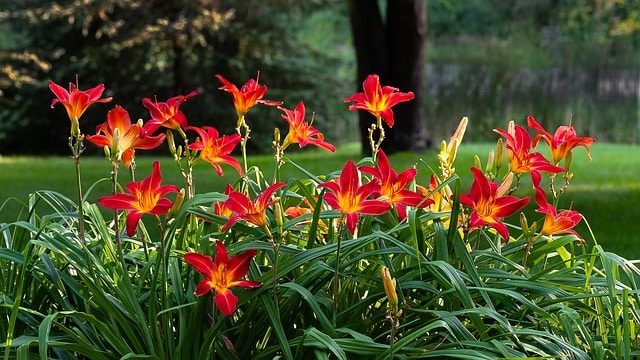
Daylilies, classified under the Hemerocallis, are perennials renowned for their spectacular blooms, which come in a vast array of colors and forms. They are a gardener’s favorite due to their adaptability and robustness.
Daylilies generally withstand slug pressure better than many other plants due to their thick foliage and toughness, often successfully resisting slug infestations while maintaining their visual appeal.
These plants thrive in various soils and prefer full to partial sun. Their drought tolerance and ability to bloom prolifically through the growing season enhance their consideration in gardens, providing weeks of cheerful flowers while attracting pollinators.
Dense Blazing Star (Liatris spicata)
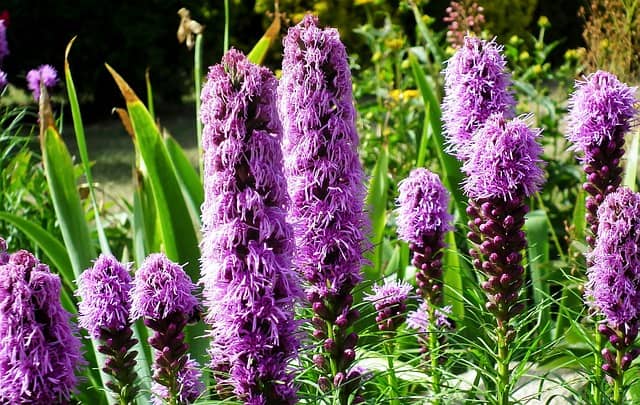
Dense blazing star, or Liatris spicata, is a perennial flower known for its tall spikes of purple flowers that bloom from the top down in late summer. This unique aspect of flowering design makes it a standout in garden beds.
Some species within the Liatris may display varying degrees of vulnerability to slugs, as their growth conditions can influence pest activity. However, healthy plants typically manage to resist common slug issues.
These blazing stars prefer well-drained soils in full sun, thriving in prairies and open areas. They are notably drought-resistant once established, supporting not only their growth but also attracting butterflies and other pollinators to the garden.
Sweet William (Dianthus barbatus)
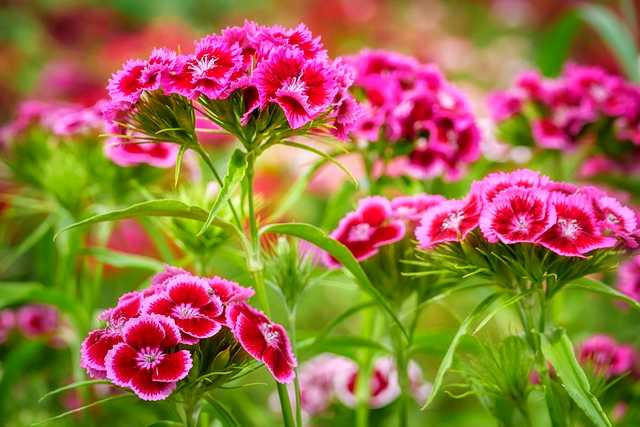
Sweet William, known scientifically as Dianthus barbatus, is a biennial or short-lived perennial favored for its bright clusters of ruffled flowers and spicy fragrance. These plants come in various hues, adding bursts of color and charm to garden beds.
Sweet William’s dense, fibrous structure and aromatic nature can deter slugs, allowing them to flourish in pest-prone areas with minimal damage.
These flowers prefer well-drained soil and grow best in full sun. They often self-seed, providing a delightful repeat display season after season while attracting a variety of pollinators to the garden.
Common Pink (Dianthus plumarius)
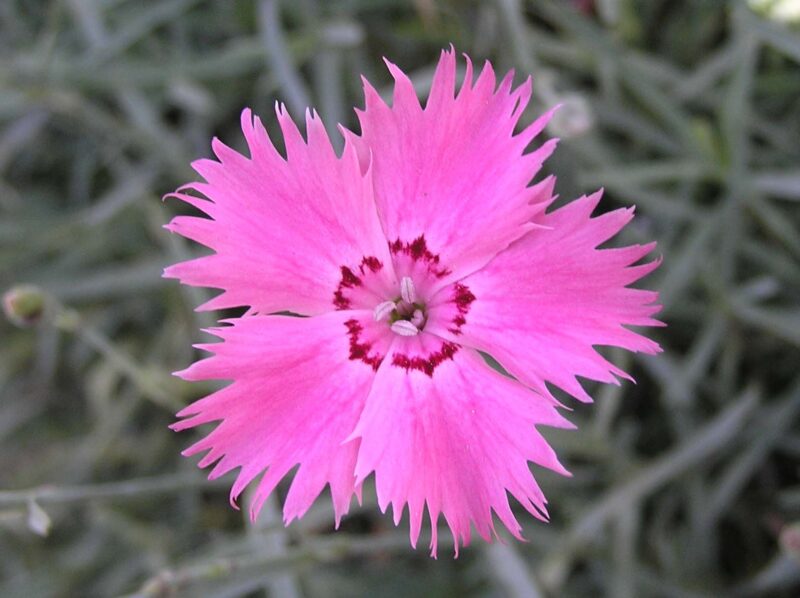
Common pink, or Dianthus plumarius, is a charming perennial known for its frilled petals and delightful scent. Available in lovely shades of pink, red, and white, these flowers are often used in borders and rock gardens for their visual and olfactory appeal.
Their toughness and fibrous structure help common pinks withstand slug activity, making them a good choice for gardens often plagued by these pests.
Well-drained soil and full sun are preferred conditions, allowing common pinks to thrive. Additionally, their ability to attract butterflies and other beneficial insects ensures they contribute to ecological balance while adding beauty to any garden environment.
Dog Violet (Viola riviniana)
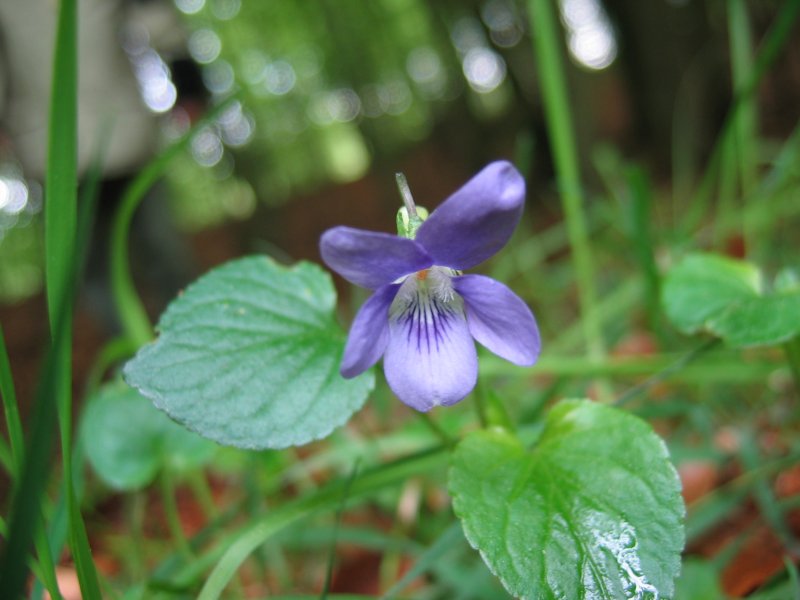
Dog violet, or Viola riviniana, is a perennial wildflower distinguished by its delicate, heart-shaped leaves and charming purple flowers. These violets are often found in woodland areas and are beloved for their understated beauty and fragrance.
While slugs may occasionally target dog violets, their tough foliage provides some level of resistance, making them a somewhat reliable addition to gardens with occasional slug activity.
Dog violets flourish best in moist, well-drained soils and partial to full shade. They are perfect for naturalizing in woodland gardens or shady borders, where their lovely blooms can grace the area in spring.
Dotted Loosestrife (Lysimachia punctata)
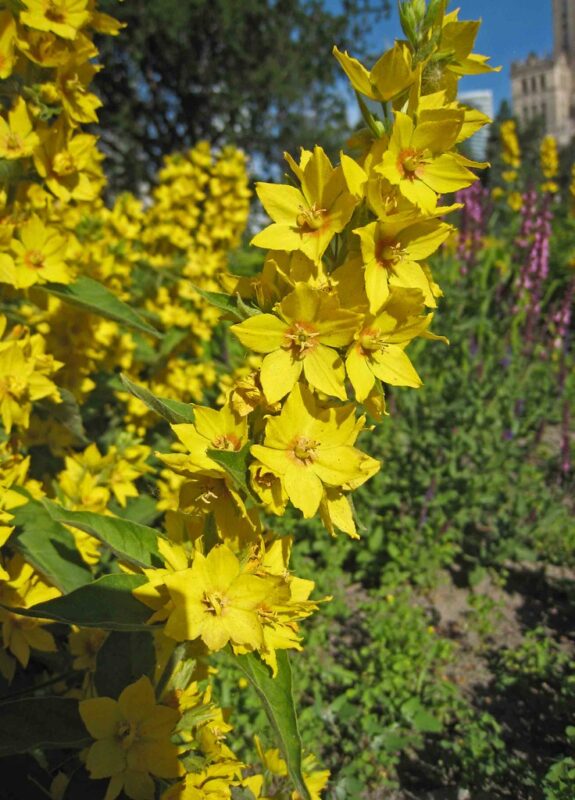
Dotted loosestrife, or Lysimachia punctata, features striking spikes of yellow flowers that bloom in the summer, making it a vibrant addition to garden borders and water-oriented landscapes.
This plant possesses a vigorous growth habit and produces tougher foliage that can resist slug damage, enabling it to thrive even in areas where slugs may pose a threat.
Dotted loosestrife prefers moist, well-drained soils and full sun to partial shade. It’s particularly appreciated for its ability to tolerate wet conditions, making it suitable for rain gardens or near pond edges, where its blooms attract pollinators while providing visual interest.
Erigeron
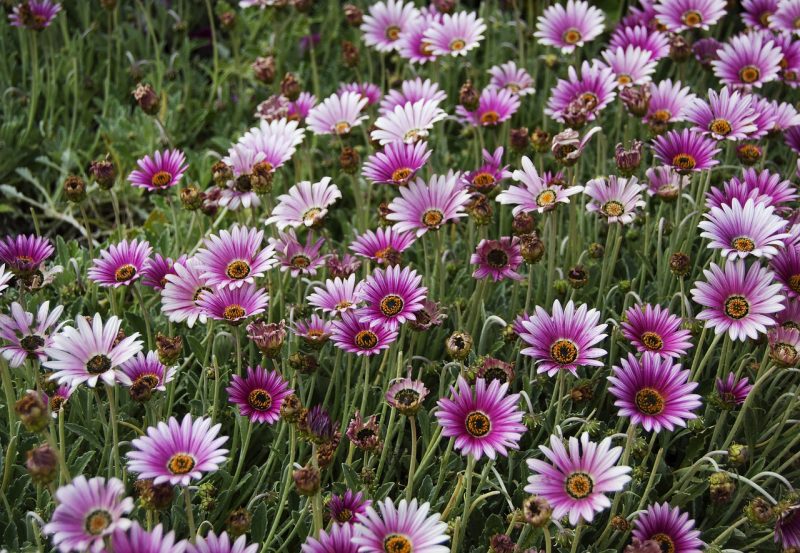
Erigeron, commonly known as fleabane, encompasses various species known for their cheerful, daisy-like flowers, which typically bloom from spring to summer. These resilient perennials are often used to cushion garden beds or as wildflowers in meadows.
The fibrous texture of fleabane leaves can deter slug activity, providing some natural resistance and aiding their success in gardens affected by pests.
Erigeron species prefer well-drained soils and thrive in full sun but can adapt to partial shade. This versatility allows them to flourish in diverse garden settings, contributing to colorful displays while supporting local ecosystems by attracting pollinators.
Evening Primrose (Oenothera)
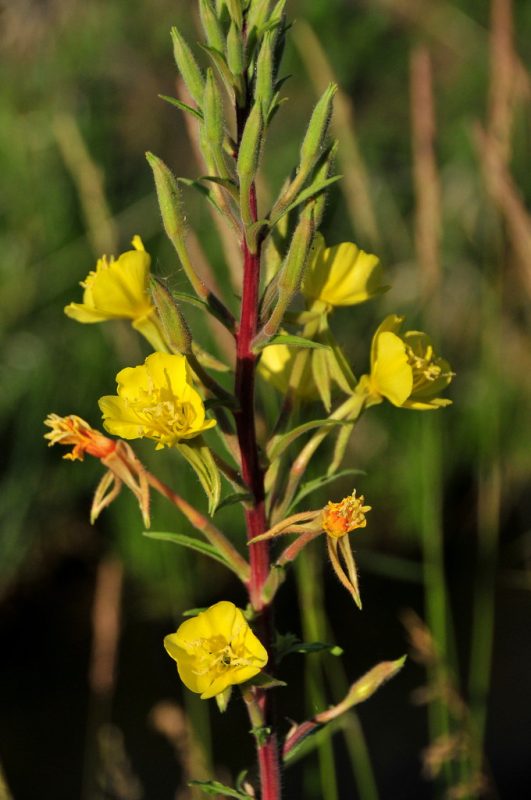
Evening primrose, from the Oenothera, is a perennial plant celebrated for its large, bright yellow flowers that bloom in the evening and throughout the night. These charming flowers often attract nighttime pollinators like moths.
While evening primrose may attract slugs to some extent, their tougher foliage can provide resilience against significant damage, allowing them to thrive in various garden settings.
These plants thrive best in well-drained soils and full sun, making them ideal for sunny borders, wildflower gardens, or meadows. Their ability to naturalize and spread creates delightful swathes of color and fragrance in late spring and early summer gardens.
Everlasting (Antennaria)
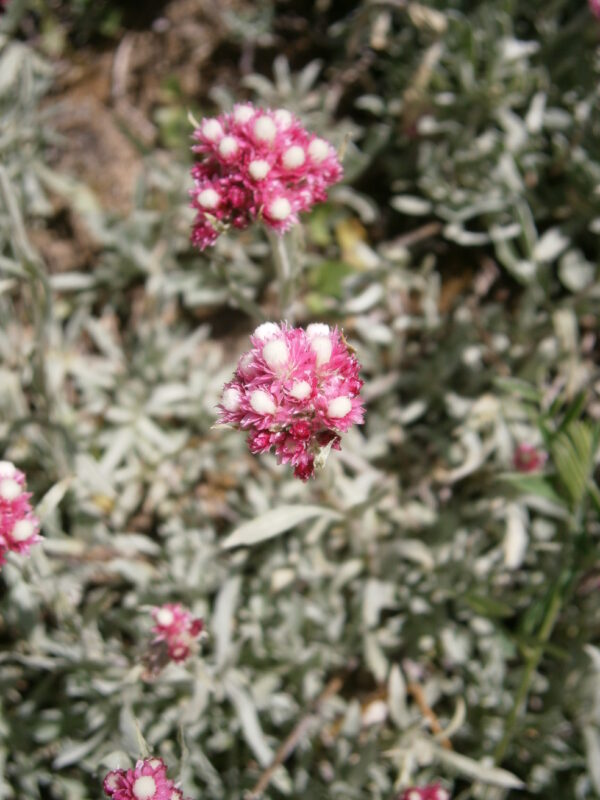
Everlasting, or Antennaria, is a perennial plant commonly found in grassy meadows and open areas. Renowned for its woolly, gray-green foliage and button-like flower heads, it brings texture and charm to gardens.
The fibrous and somewhat aromatic leaves of everlastings deter slugs, providing a level of natural resistance. This quality allows these plants to thrive even when pests may be threatening other garden varieties.
Everlastings prefer well-drained soil and full sun, making them suitable for dry gardens or rock gardens. Their resilience and unique appearance offer wonderful opportunities for creating visually intriguing landscapes that also support local wildlife.
False Goat’s Beard (Astilbe)
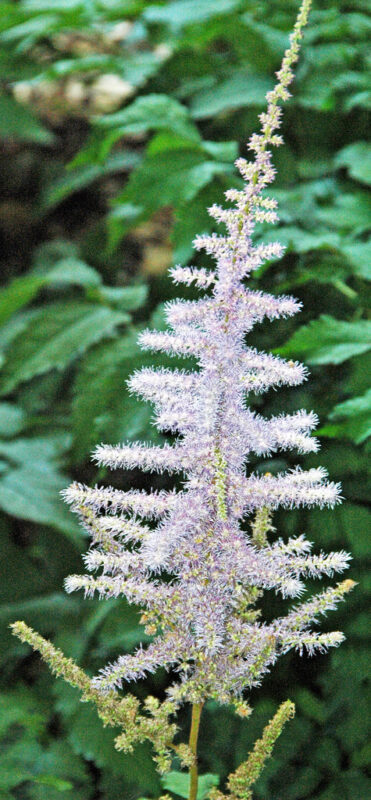
False goat’s beard, from the Astilbe, is a perennial that features fluffy flower spikes in shades of white, pink, and red. These striking blooms provide a delightful display in summer gardens and are often found in shady or woodland settings.
The robust foliage typically helps deter slugs, making these plants less susceptible to unwanted herbivory while flourishing in damp conditions where other plants may struggle.
Astilbes thrive in moist, well-drained soils in partial to full shade, thus becoming essential in shaded borders or beside water features. They not only offer outstanding visual appeal but also attract pollinators, enhancing garden biodiversity.
Fern-Leaved Beggarticks (Bidens)
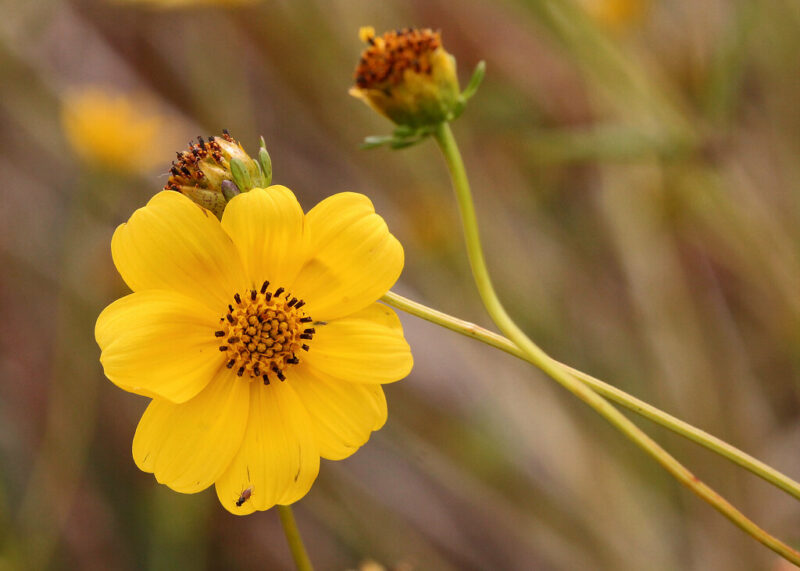
Fern-leaved beggarticks (sometimes referred to in other contexts or floral designs in botany) may be a reference to Bidens plants characterized by their distinctive foliage and bright yellow flowers. These plants can be used as ground covers around ponds and wet areas, providing greenery and color.
The somewhat tough texture of their leaves may help them withstand slug activity more effectively than other garden varieties. However, it’s essential to keep an eye on their growth, as some species can spread aggressively.
These flowers thrive in moist soils and full sun, making them excellent for gardens with wetter settings. Their ability to attract pollinators enhances the ecological harmony of the garden landscape while providing visual interest.
Festuca (e.g., Blue Fescue)
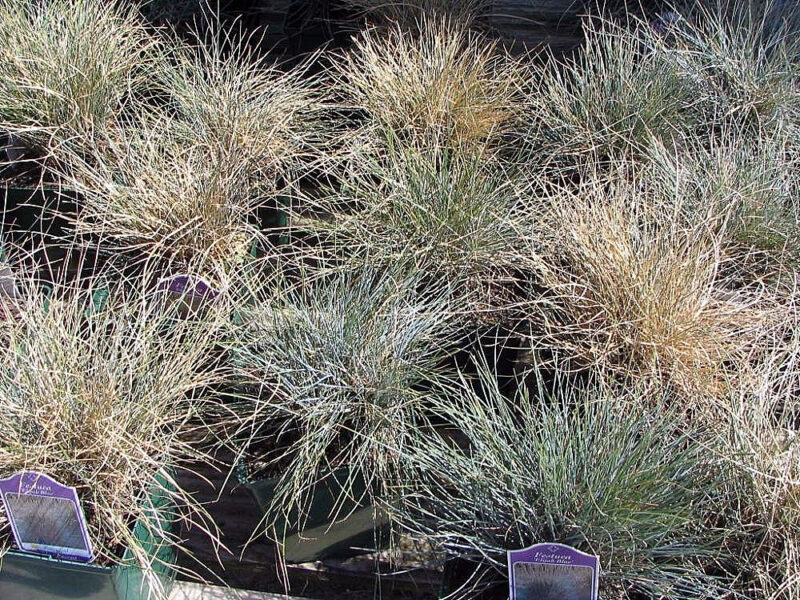
Festuca, such as blue fescue, includes various hardy grasses appreciated for their decorative quality and durability. Their fine, blade-like leaves provide texture and structure to garden designs, effectively contrasting with flowering plants.
The tough and slightly coarse texture of fescue grasses can deter slugs, enabling them to prosper even in gardens with pest pressures. This resilience is essential for maintaining a healthy lawn or ornamental grass setting.
Fescue prefers well-drained soils and full sun, although many species exhibit tolerance to partial shade. Their ability to withstand drought conditions and adapt to different garden settings makes them versatile inclusions for borders, rock gardens, or ornamental lawns.
Feverfew (Tanacetum parthenium)
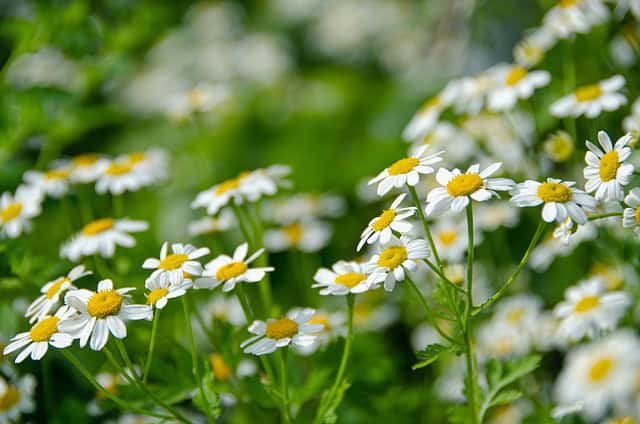
Feverfew, scientifically known as Tanacetum parthenium, is a perennial herb known for its medicinal properties and attractive daisy-like flowers. Its blooms, primarily white with yellow centers, can brighten any garden space and offer insect-repelling properties.
The bitter taste of feverfew and its aromatic foliage often deter slugs, allowing this herb to thrive even in conditions where they might pose a problem.
Feverfew prefers well-drained soils and full sun, making it an excellent choice for herb gardens or as border plants. Its showy blooms and hardiness make it a practical choice for aesthetic appeal and as a medicinal herb.
Fleabane (Erigeron annuus)
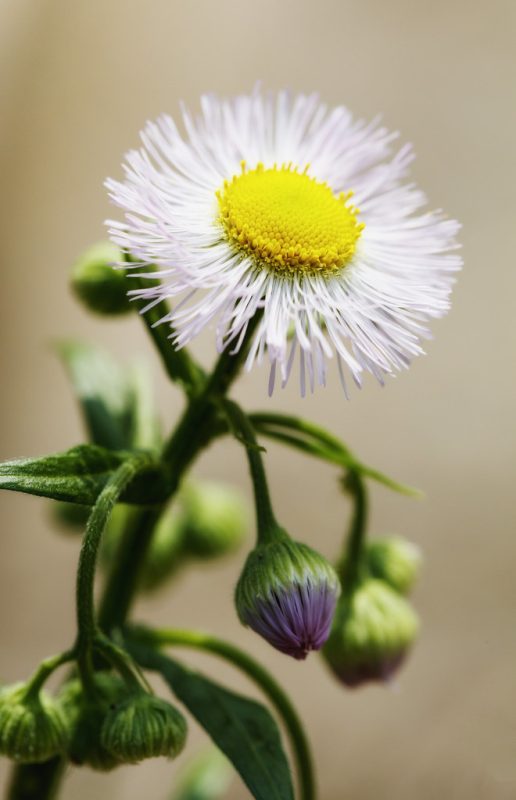
Fleabane, specifically Erigeron annuus, is a daisy-like perennial known for its delicate flowers and adaptability. These plants bloom from late spring through summer, creating lovely displays in garden beds and meadows.
The tough, fibrous leaves of fleabane can dissuade slugs from munching on them, allowing these cheerful plants to prevail in gardens prone to slug pressures.
Fleabane prefers well-drained soils and full sun but can tolerate various growing conditions. Its adaptability and ability to support pollinators make it a popular choice in cottage gardens, wildflower meadows, and as a resilient ground cover.
Fountain Grass (Pennisetum alopecuroides)
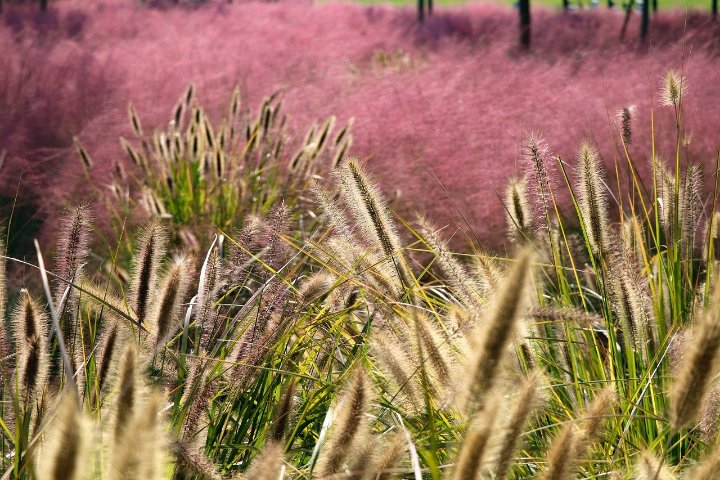
Fountain grass, also known as Chinese pennisetum or dwarf fountain grass, is a perennial ornamental grass characterized by its graceful, arching form and fluffy, feathery flower spikes. The flowers appear in late summer and create a soft, airy effect in garden beds.
Fountain grass has a tough structure, making it less appealing to slugs. This hardiness allows it to thrive in gardens where slugs may be an issue.
This plant prefers well-drained soils in full sun. It works well in borders, mass plantings, and as a container plant, providing movement and texture throughout the garden.
Fuchsia
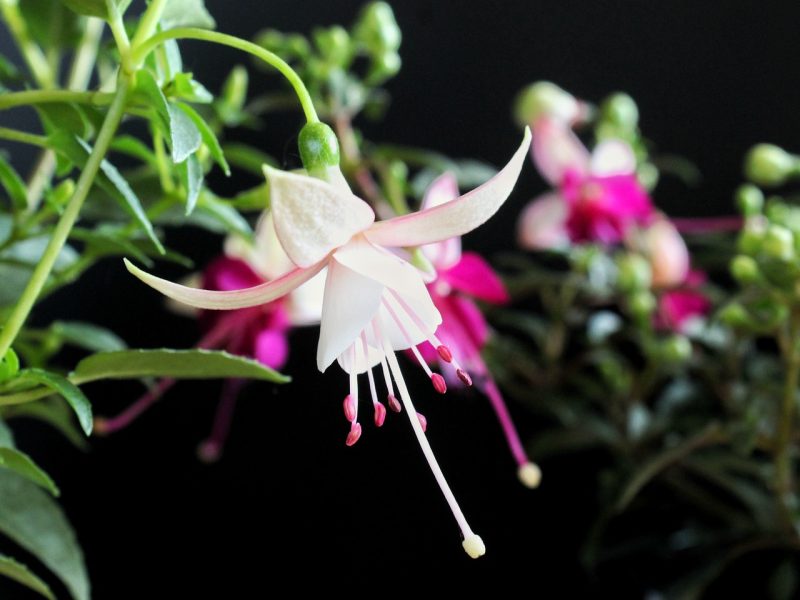
Fuchsia is a of flowering plants known for their striking, pendulous flowers in vibrant shades of pink, purple, and red. Fuchsias are often used in hanging baskets and containers due to their cascading growth habit.
While fuchsias can attract slugs, their vulnerability often depends on local conditions. The fleshy leaves make them somewhat appealing to slugs, but they can thrive in well-maintained gardens with slug control measures.
Fuchsias prefer well-drained, fertile soil and partial shade to full sun. They are ideal for shaded borders and hanging baskets in patio settings, providing colorful blooms that attract hummingbirds and pollinators.
Fumaria (Fumitory)
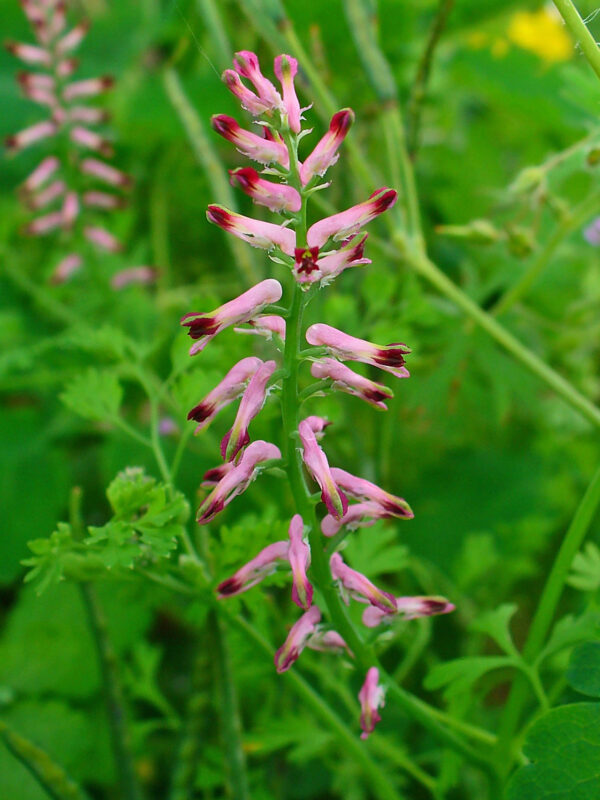
Fumaria, commonly known as fumitory or fumewort, includes small, delicate flowering plants often found in meadows and open woods. They are characterized by their fern-like leaves and tubular flowers, usually in shades of pink or purple.
Fumitory plants can attract slugs due to their softer and more tender foliage, so careful management is recommended if grown in areas vulnerable to slug infestations.
These plants usually prefer well-drained soils and partial shade. They can serve as ground cover and are suitable for wildflower gardens or naturalized settings where their subtle beauty can shine.
Gamanders (Teucrium)
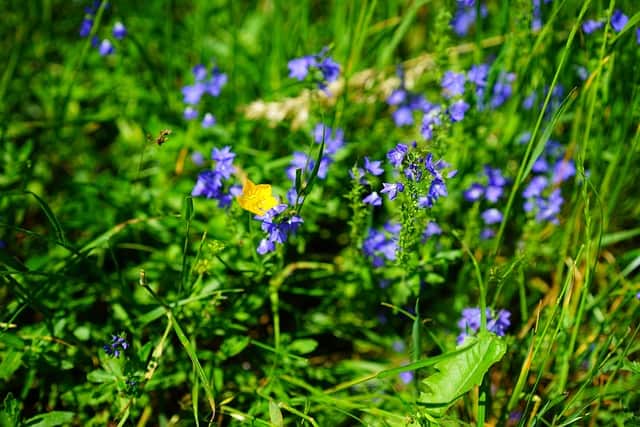
Gamanders, belonging to the Teucrium, are aromatic perennials with various species boasting small flowers. They are often found in dry habitats and are favored for their resilience and low maintenance.
The tough, aromatic foliage of gamanders serves as a deterrent against slugs, helping them thrive even in slug-prone gardens.
Gamanders prefer well-drained, dry soils in full sun. They’re excellent choices for rock gardens, dry borders, or as ground covers in sunny areas, where their understated beauty and fragrant scent can add charm.
Garden Cosmos (Cosmos bipinnatus)
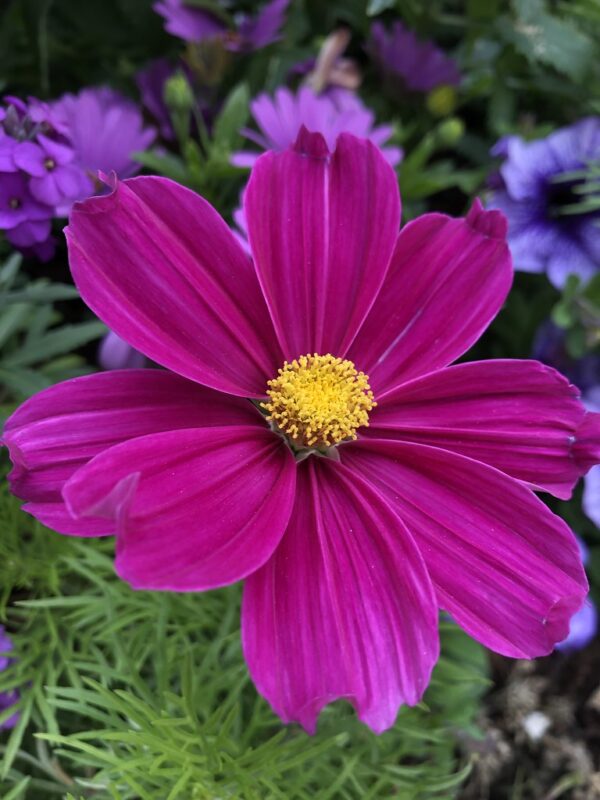
Garden cosmos, known scientifically as Cosmos bipinnatus, is an annual or perennial flower praised for its bright, daisy-like blooms that come in various colors, including pink, white, and purple. They commonly bloom from mid-summer until the first frost.
These flowers generally exhibit some resistance to slug damage due to their sturdy structure and hairy leaves, making them a preferred choice in gardens where slugs are problematic.
Cosmos thrive in well-drained soils with full sun and can tolerate poor soil conditions, making them great for wildflower gardens, mixed borders, or sunny spots in landscapes.
Gazania
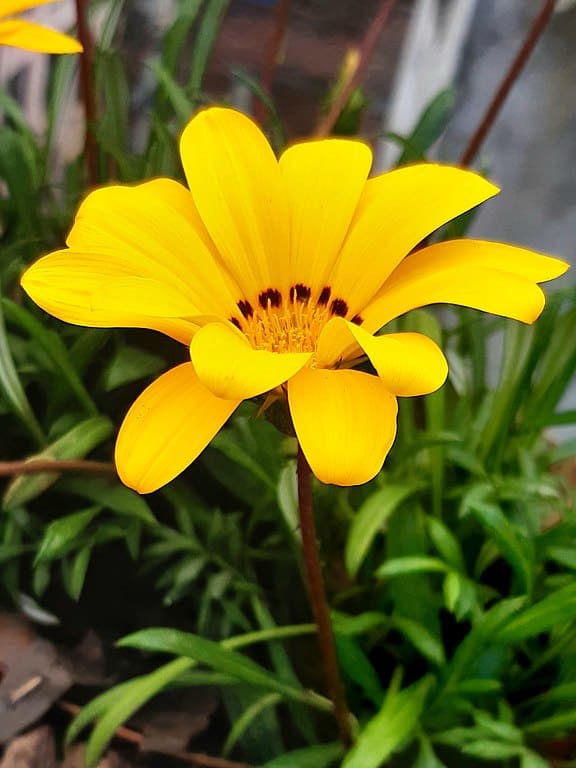
Gazania is a of flowering plants known for their vibrant, daisy-like blooms with striking patterns. These hardy and drought-tolerant plants bloom profusely in sunny environments, adding color to gardens.
While slugs may target younger plants, many gazania species are relatively resistant due to their thick foliage and tough texture.
Gazania prefers well-drained, sandy soil and thrives in full sun. They are ideal for rock gardens or areas that receive full sunlight, offering continuous blooms throughout summer.
Giant Onion (Allium giganteum)
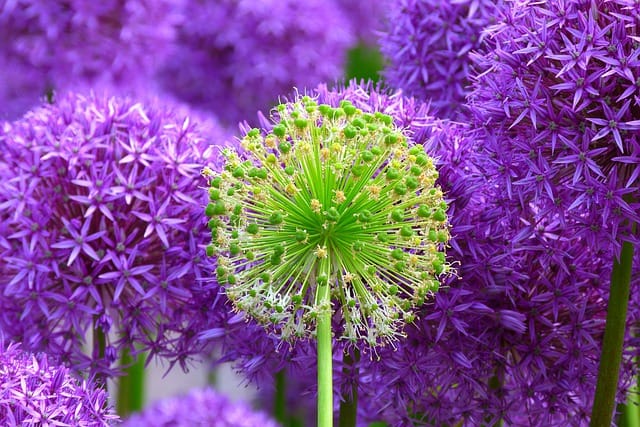
Giant onion, or Allium giganteum, is a striking bulbous perennial known for its impressive globe-shaped clusters of purple flowers that bloom in late spring to early summer. These tall flowers create a stunning vertical interest in borders and garden beds.
Giant onions possess a tough texture that typically deters slugs, allowing them to grow well even in areas prone to pest problems.
They prefer well-drained soil and full sun, thriving as focal points or in mixed perennial borders where they can attract pollinators with their unique blooms.
Gladiolus
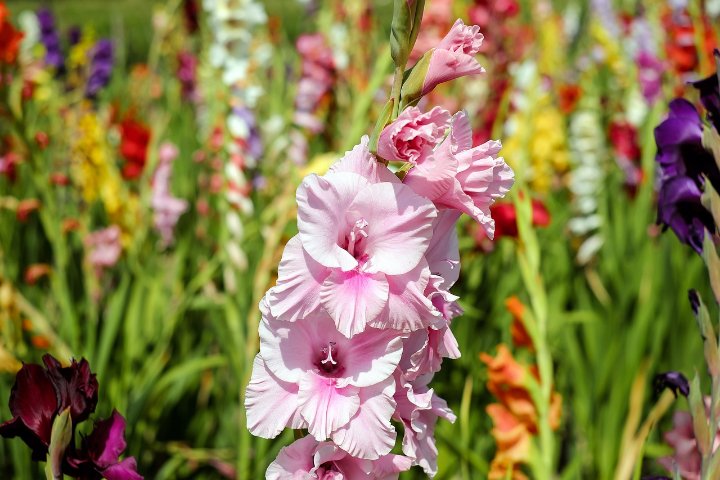
Gladiolus, commonly referred to as gladioli, is a of flowering plants known for their tall flower spikes filled with showy blooms in vibrant colors. They are popular in gardens for their dramatic vertical growth and long-lasting cut flowers.
While gladiolus can sometimes attract slugs, they are generally resilient due to their fibrous structure. Implementing good garden practices can help reduce pests and promote healthy plants.
Gladioli prefer well-drained soil and full sun, thriving in borders or as standalone garden features. They are often planted as bulbs in the spring to produce stunning summer displays.
Globe Thistles (Echinops)
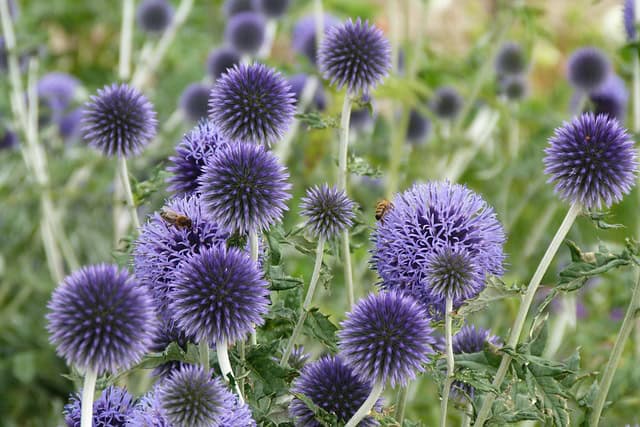
Globe thistles, or Echinops, are spiky, globe-shaped flowers that add visual interest to garden landscapes. They produce stunning blue to purple flower heads on tall stems, blooming in late summer.
The tough foliage and spiny flower heads generally deter slugs, allowing globe thistles to flourish in gardens facing pest challenges.
These plants prefer well-drained soil and full sun, making them well-suited for cottage gardens, perennial borders, or wildflower meadows, where they attract bees and other beneficial pollinators.
Globeflower (Trollius europaeus)
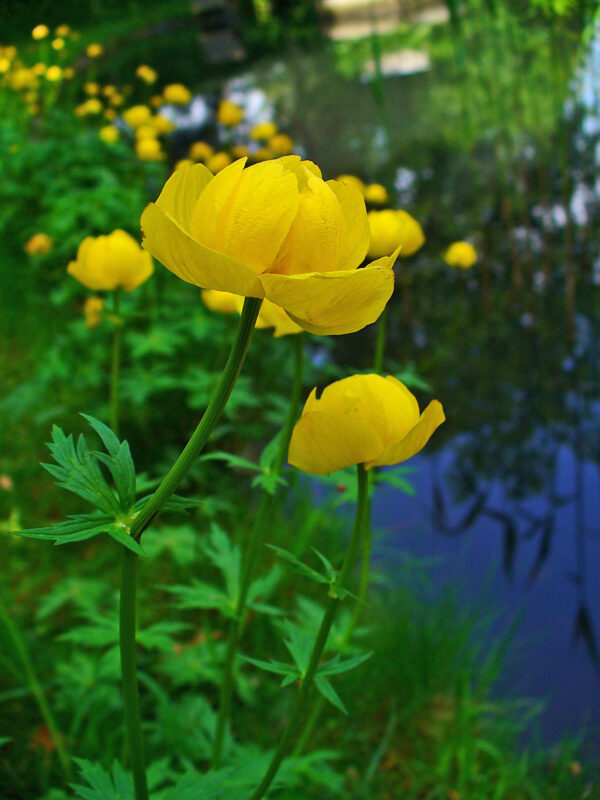
Globeflower, also known as Trollius europaeus, is a perennial with large, golden-yellow ball-shaped flowers that bloom in spring to early summer. They create a cheerful display in cottage gardens and natural settings.
Globeflowers exhibit some resistance to slugs due to their tough, hairy leaves, which tend to be less palatable.
These plants prefer consistently moist, well-drained soils and thrive in full sun to partial shade, making them ideal for moist woodland gardens or areas near water features.
Goatsbeards (Aruncus)
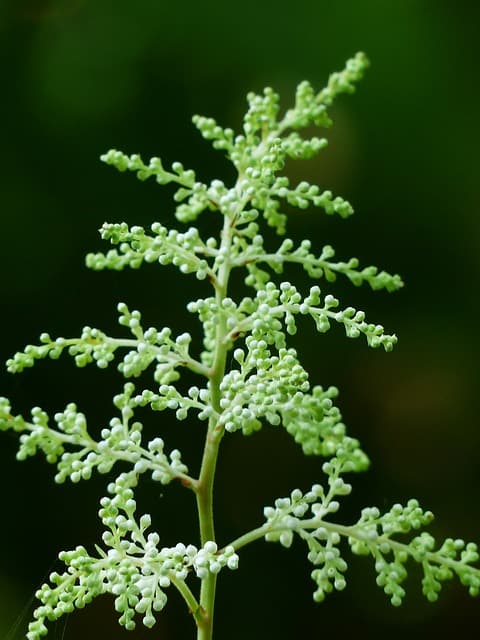
Goatsbeards, belonging to the Aruncus, are ornamental perennials known for their feathery, plume-like flower clusters. They produce beautiful feathery white or cream flowers and dominate shady areas with their lush foliage.
The dense foliage of goatsbeards often provides some protection against slugs, allowing them to thrive in areas where these pests might otherwise pose a challenge.
Goatsbeards thrive in consistently moist, well-drained soil and partial to full shade, making them excellent choices for woodland gardens and shaded borders, contributing texture and drama to the landscape.
Golden Starthistle (Centaurea solstitialis)
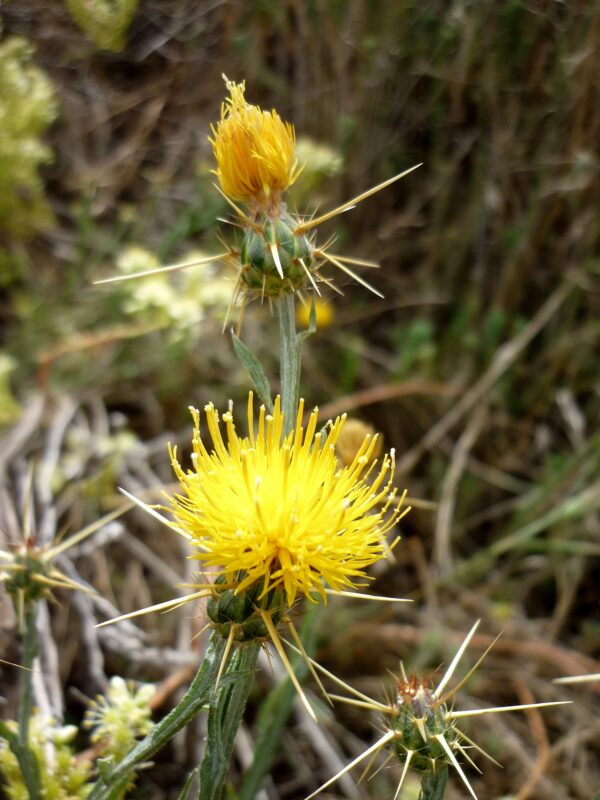
Golden starthistle is a flowering plant known for its distinctive yellow blooms and spiky flower heads. Although visually striking, it is often considered an invasive species in many areas due to its ability to spread rapidly.
While it is resilient in general, golden starthistle can attract slugs, especially in overgrown or disturbed areas. Proper management is required to control its spread while ensuring healthy growth.
The plant prefers well-drained soils and full sun, thriving in disturbed areas, roadsides, and wastelands. Care should be taken to prevent it from overtaking more desired plant species.
Goldenrod (Solidago)
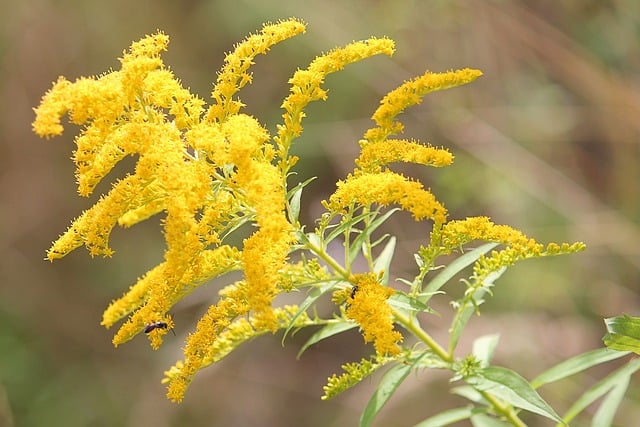
Goldenrod, from the Solidago, is a perennial plant known for its vibrant yellow flower clusters that bloom in late summer and fall. They provide an essential food source for pollinators during this period.
Goldenrod has a sturdy structure that can often withstand slug activity, allowing it to thrive in gardens with occasional pest pressures.
These plants grow best in well-drained soils in full sun, making them well-suited for meadows, wildflower gardens, or as border plants. They are invaluable for supporting local wildlife while adding striking seasonal color.
Grape Hyacinth (Muscari)
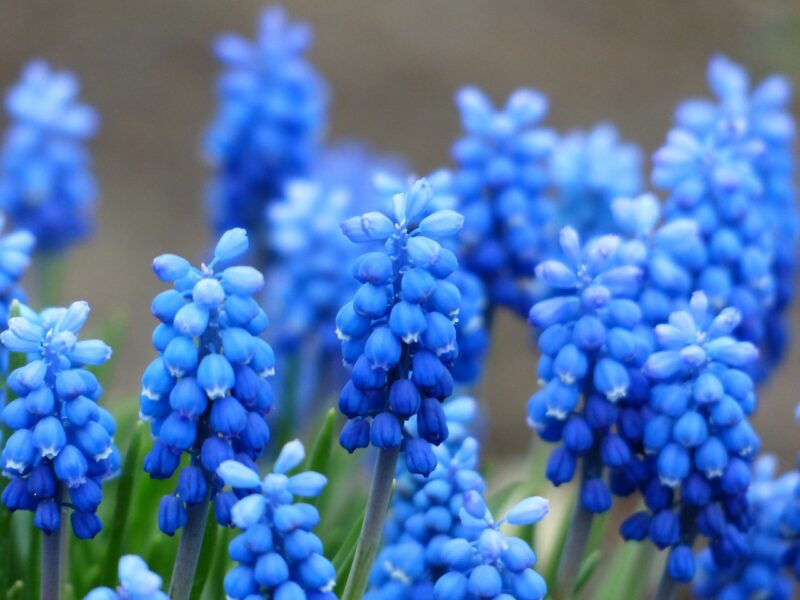
Grape hyacinth, known scientifically as Muscari, features dense clusters of small, urn-shaped flowers that bloom in shades of blue, purple, and white in spring. They form delightful carpets in gardens and naturalized areas.
Grape hyacinths typically exhibit good slug resistance due to their tougher foliage, allowing them to thrive even in gardens where slugs may be prevalent.
These plants prefer well-drained soil and full sun to partial shade, making them suitable for rock gardens, borders, and woodland settings, providing lovely early-season blooms.
Great Mullein (Verbascum thapsus)
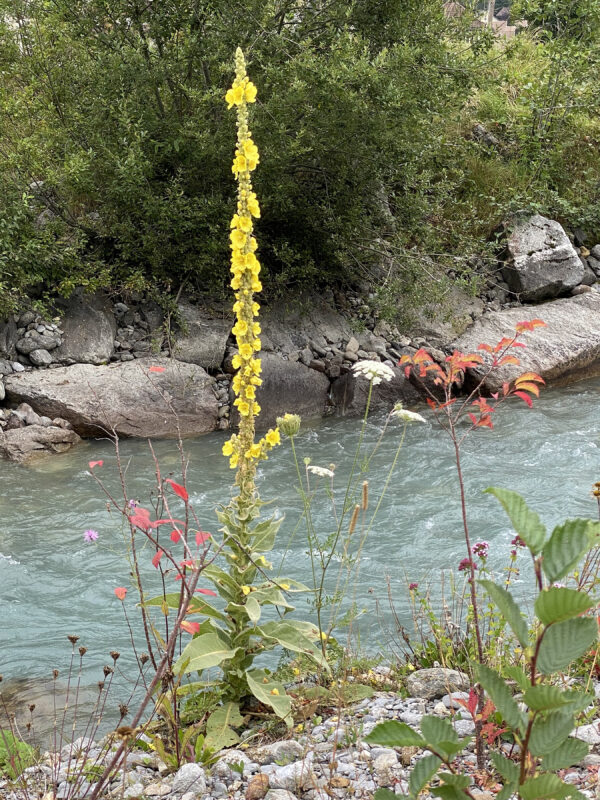
Great mullein, or Verbascum thapsus, is a biennial flowering plant known for its tall spikes of yellow flowers that bloom in summer. The large, fuzzy leaves are a distinctive characteristic of this plant, which is often found in disturbed areas.
While great mullein’s robust structure can help resist slug damage, younger plants may be vulnerable. Regular monitoring is advisable in gardens known for slug activity.
Great mullein prefers well-drained soils in full sun and thrives in various settings, including wildflower meadows, open fields, or cottage gardens where it can add height and interest.
Heartleaf (Brunnera macrophylla)
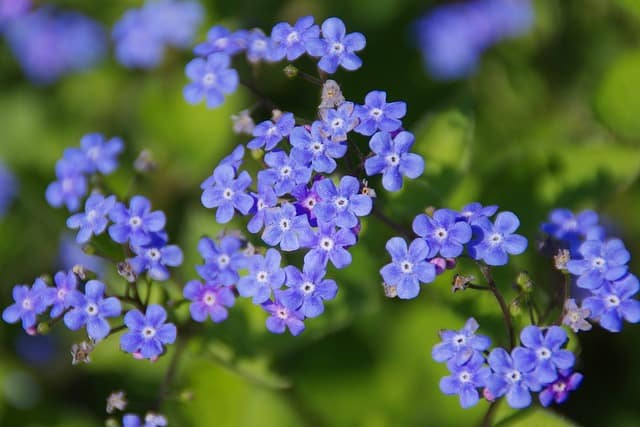
Heartleaf, or Brunnera macrophylla, is a perennial known for its beautiful, heart-shaped leaves and small, forget-me-not-like blue flowers that bloom in spring. This plant is often used in shady gardens for its attractive foliage.
Heartleaf exhibits good resilience against slugs due to its thicker leaves, which can deter these pests from damaging the plant.
These plants prefer moist, well-drained soils in partial to full shade, thriving in woodland gardens or shaded borders where they can add charm and color to the understory.
Helipterum
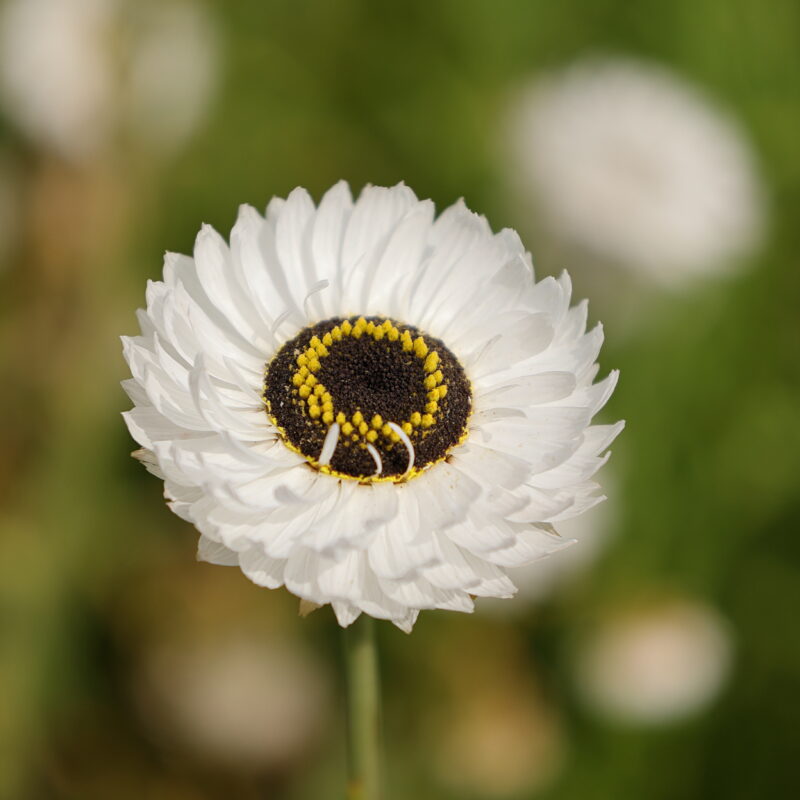
Helipterum, including varieties such as silver bells and Australian strawflower, features beautiful papery, daisy-like flowers that provide striking color and texture to gardens. They are known for their long-lasting blooms, often used in dry arrangements.
While some species may experience slug pressure, their tough and somewhat leathery leaves can deter excessive herbivory, allowing them to thrive in many gardens.
Helipterum prefers well-drained soils and full sun, thriving in garden borders or rocky areas. Their drought resistance and adaptability make them favorable in various garden styles, supporting pollinators in the process.
Hepatica nobilis (Anemone americana)
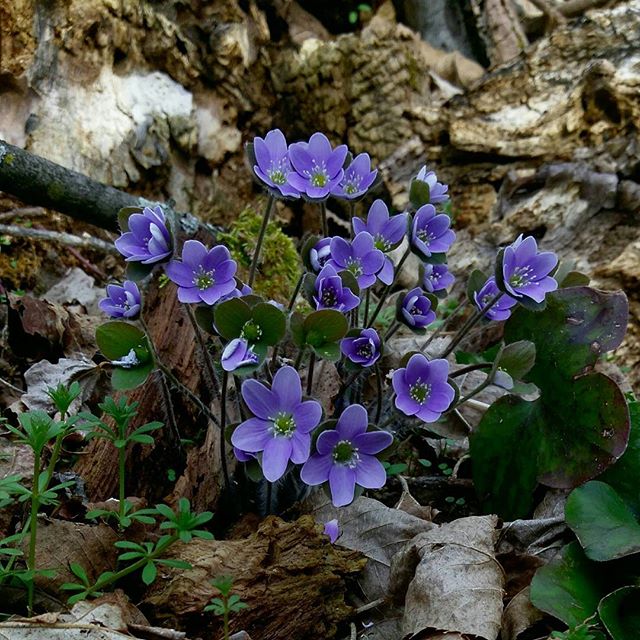
Hepatica nobilis, often known as Anemone americana or liverleaf, is a spring-blooming perennial that showcases lovely, delicate flowers in shades of blue, purple, or white. The deeply lobed leaves are also attractive, providing interest throughout the growing season.
This plant is somewhat vulnerable to slugs, especially in damp conditions. It’s advisable to protect them with mulch or other deterrents in areas known for high slug activity.
Hepatica prefers moist, rich, well-drained soils in partial to full shade, making it ideal for woodland gardens or shaded borders, where its early spring blooms can brighten the landscape.
Himalayan Meadow Primrose (Primula rosea)
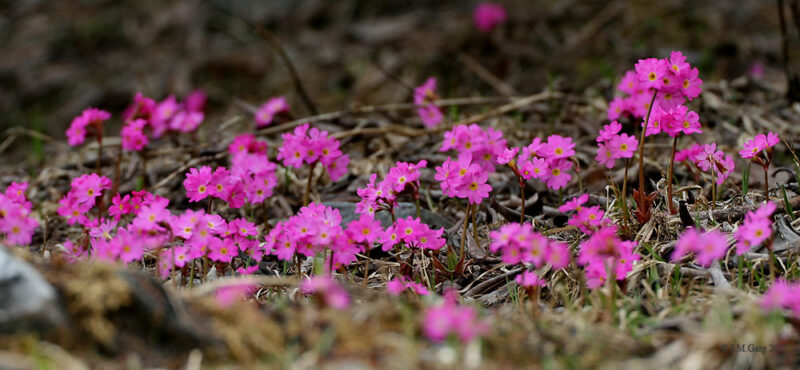
Himalayan meadow primrose, or Primula rosea, is a striking perennial known for its rosy, cup-shaped flowers that bloom in spring. These plants often thrive in cooler, moist conditions, bringing color to shady gardens.
Himalayan meadow primrose exhibits good resilience to slug activity due to their thicker leaves, which can deter slugs from feeding on them.
These plants prefer well-drained, moist soils in partial shade, thriving in alpine or woodland gardens, where they can create captivating displays while supporting local pollinators.
Hollyhocks (Alcea)
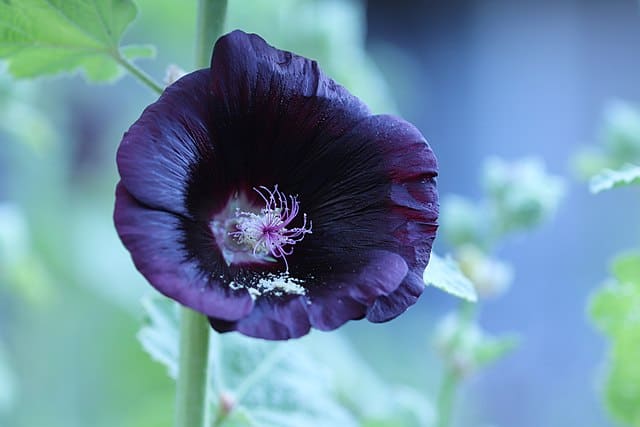
Hollyhocks, belonging to the Alcea, are tall perennial plants known for their impressive spikes of flowers that come in a variety of colors. They often serve as classic cottage garden favorites, providing vertical interest and vibrant blooms.
While hollyhocks can attract slugs, they generally maintain good resilience due to their fibrous stems and leaves, especially if grown in well-maintained garden conditions.
Hollyhocks prefer well-drained soil and full sun, thriving in borders and cottage gardens where their height can make a significant visual impact while attracting pollinators.
Honeysuckles (Lonicera caprifolium)
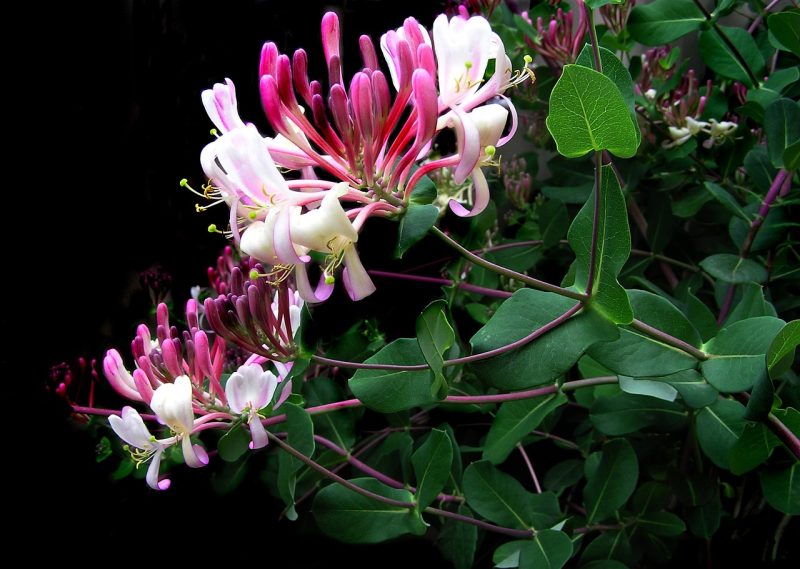
Honeysuckles, primarily Lonicera caprifolium, are climbing vines known for their fragrant, tubular flowers that attract hummingbirds and other pollinators. These plants offer delightful visual and olfactory experiences in gardens.
Honeysuckles may attract slugs, particularly when young and tender. Implementing good care can help promote their health while keeping pests at bay.
Growing best in well-drained soil and full sun to partial shade, honeysuckles are versatile garden plants suited for trellises, fences, and arbors while enhancing garden biodiversity.
Horned Violet (Viola cornuta)
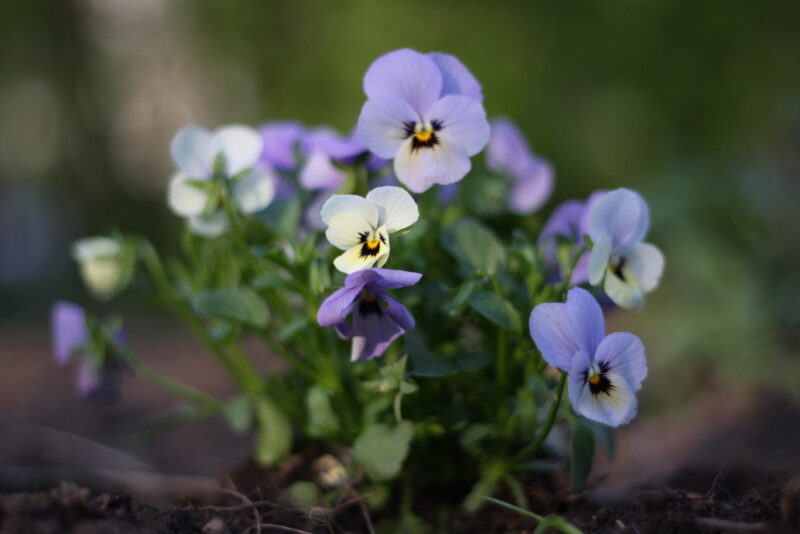
Horned violet, or Viola cornuta, is a perennial flower known for its unique horn-like petals and charming, colorful blooms. These plants are often found in alpine and gardening settings, adding delicate beauty.
Horned violets may be somewhat vulnerable to slugs, especially in damp conditions. Careful monitoring and protective measures can help manage their health in slug-prone gardens.
They prefer well-drained soil, thriving in full sun to partial shade, making them suitable for containers, rock gardens, and borders, providing delightful color in spring.
Houseleeks (Sempervivum)
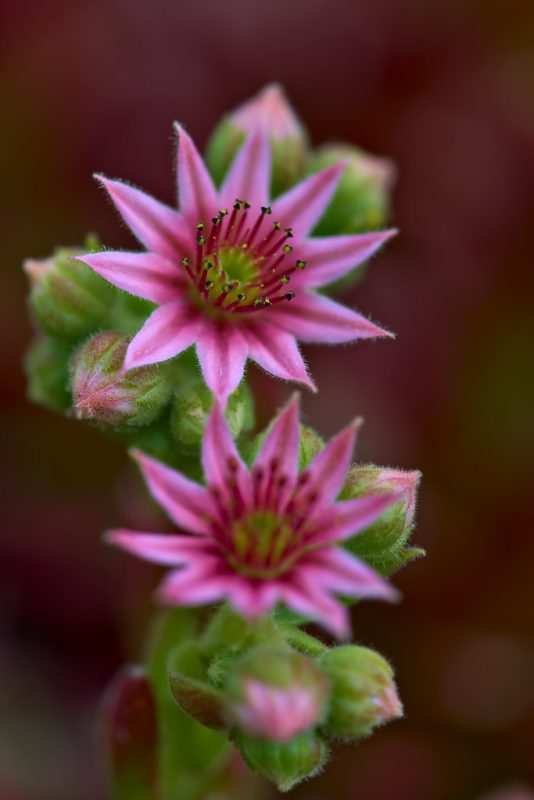
Houseleeks, or Sempervivum, also known as hen and chicks, are hardy succulents known for their rosette-forming growth habit and impressive drought resistance. They are often used in rock gardens for their captivating form and resilience.
The tough, fleshy foliage of houseleeks makes them generally unappealing to slugs, allowing them to thrive in conditions that may challenge other plants.
These plants prefer well-drained, rocky, or sandy soil in full sun, making them excellent choices for dry gardens, container plantings, or as ground cover, contributing unique textures and colors.
Hydrangea (Hortensia)
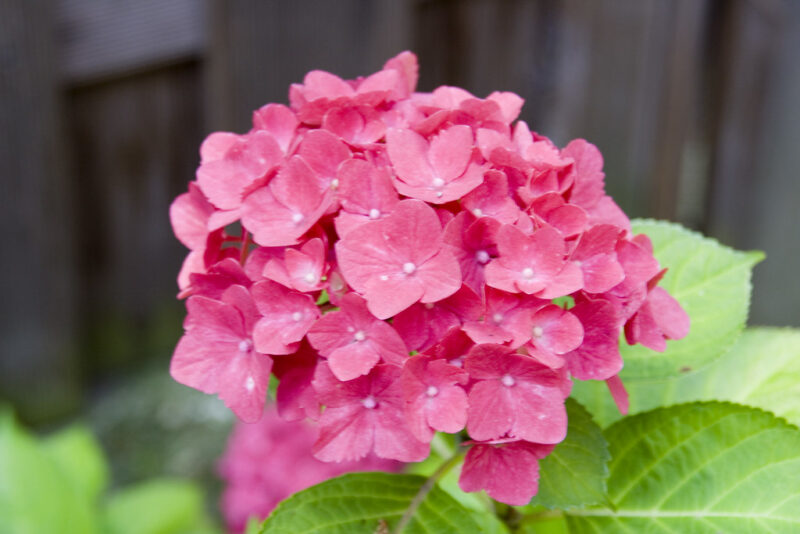
Hydrangea, particularly the hortensia variety, is a popular deciduous shrub known for its large and showy flower clusters that come in various colors, depending on the soil pH. These plants bring remarkable beauty to gardens and landscapes.
While hydrangeas can attract slugs, their thicker leaves provide some degree of resilience against slug damage. Ensuring proper garden management helps maintain their health amid potential slug problems.
Hydrangeas prefer well-drained, rich soils and thrive in partial to full shade. They are ideal for borders, shaded areas, or gardens where their dramatic foliage and blooms can create fantastic visual impact.
Hymenostemma (H. pseudanthemis)
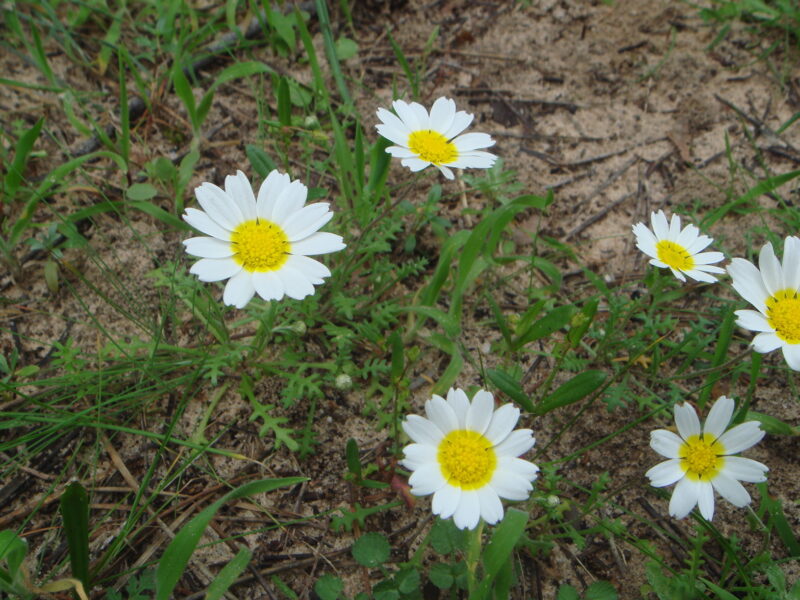
Hymenostemma, particularly Hymenostemma pseudanthemis, features unique daisy-like flowers that provide cheerful color in gardens. These plants are known for their ornamental value as well as their resilience.
Hymenostemma exhibits some protection against slugs due to their tougher foliage, allowing them to flourish in environments that may otherwise challenge more tender varieties.
These plants typically thrive in well-drained soil and full sun, making them suitable for borders or beds where they can provide seasonal color and attract pollinators.
Immortelle (Xeranthemum annuum)
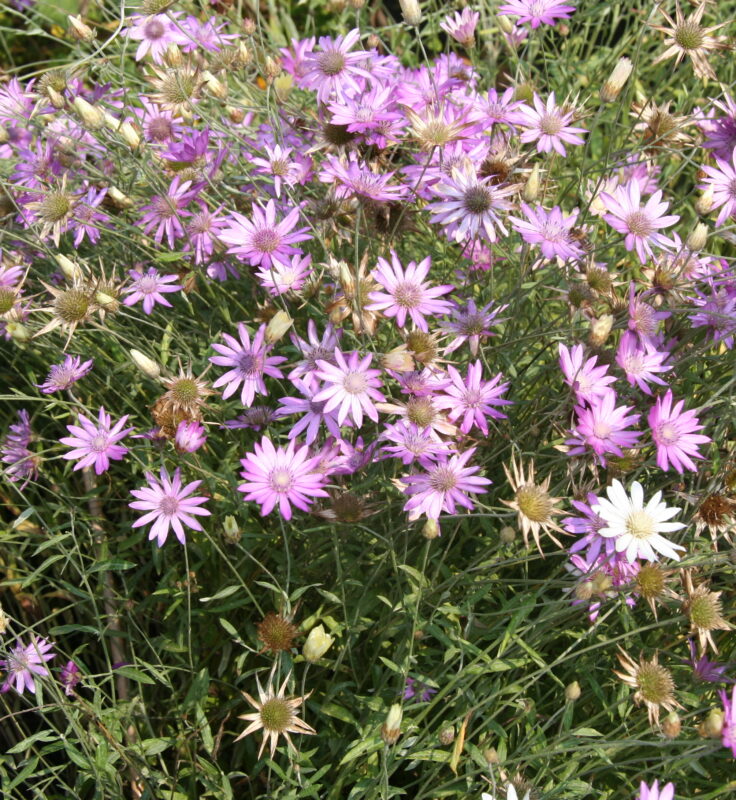
Immortelle, also known as annual everlasting, is a flowering plant prized for its long-lasting blooms that retain their color even when dried. The papery flowers are often used in dried arrangements and add a unique texture to garden displays.
Immortelle generally has some resistance to slugs due to its tougher, less palatable leaves.
This plant thrives in well-drained soil and full sun, making it suitable for cottage gardens, borders, and as a filler in flower beds.
Impatiens (I.)
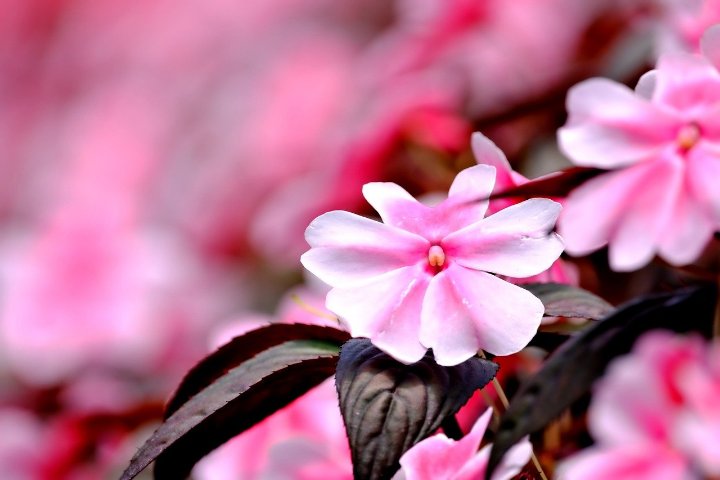
Impatiens are popular annual flowering plants known for their bright, colorful blooms and ability to thrive in shade. They produce attractive flowers in various colors and are commonly used in gardens, hanging baskets, and containers.
However, impatiens can be vulnerable to slug damage, particularly in damp conditions. Careful management can help protect them from slug incursions.
They prefer rich, well-drained soil with consistent moisture and partial to full shade. These plants are great for shady borders or as bedding plants where vibrant colors are desired.
Inula (e.g., Elecampane)
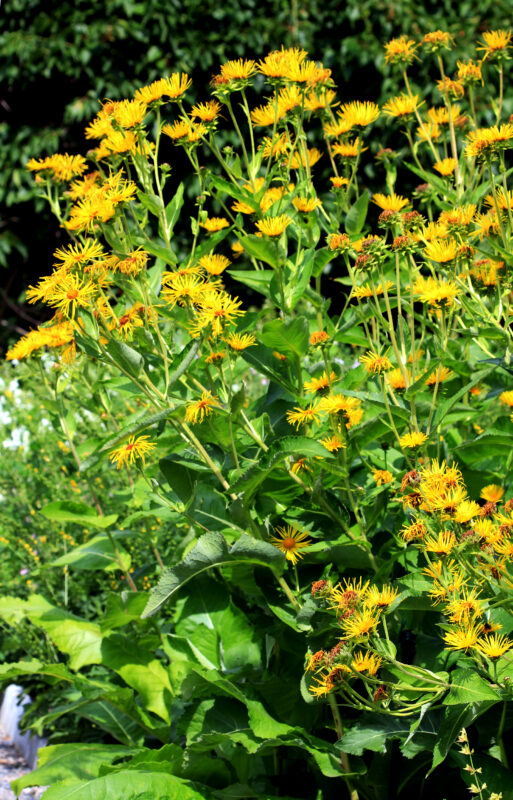
Inula, particularly Elecampane, is a of flowering plants known for their tall stems and bright yellow flowers. They have medicinal properties and are sometimes used in herbal remedies.
Inula plants are generally less attractive to slugs due to their tougher foliage.
These plants prefer well-drained soils in full sun, thriving in wildflower gardens, meadows, or naturalized areas where they can establish and spread.
Iris (I.)
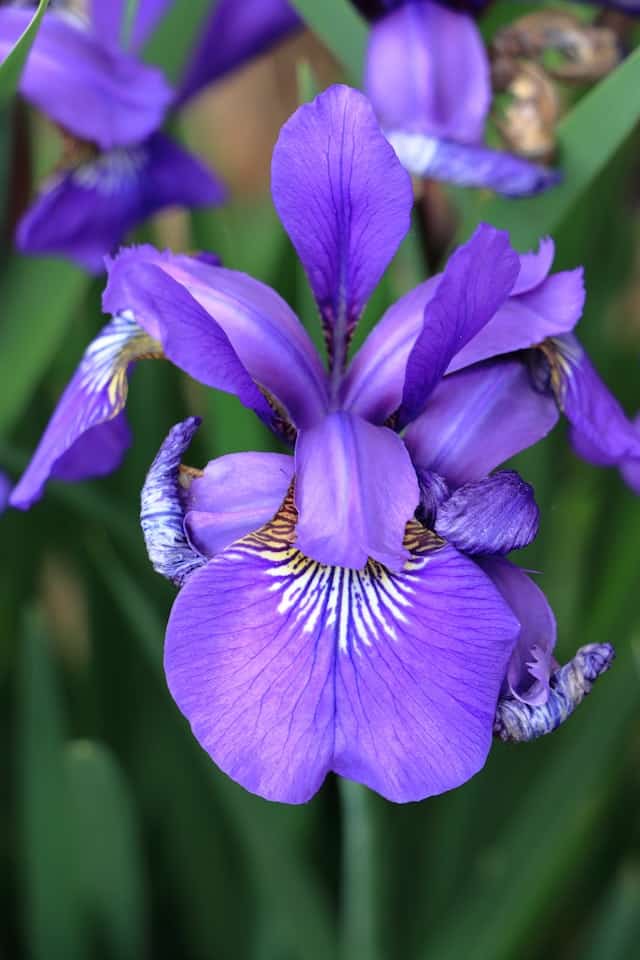
Iris is a diverse of flowering plants known for their striking blossoms in various colors and patterns, making them popular in gardens. However, slug resistance in iris can vary significantly depending on the specific variety and local conditions.
While many irises are tough and resilient, thinner-leaved types may attract slugs. Ensuring well-drained soil and good cultural practices can mitigate slug impact.
Irises prefer well-drained soils in full sun to partial shade, suited for borders, beds, or cottage gardens where their eye-catching blooms can shine.
Jacob’s Ladder (Polemonium)
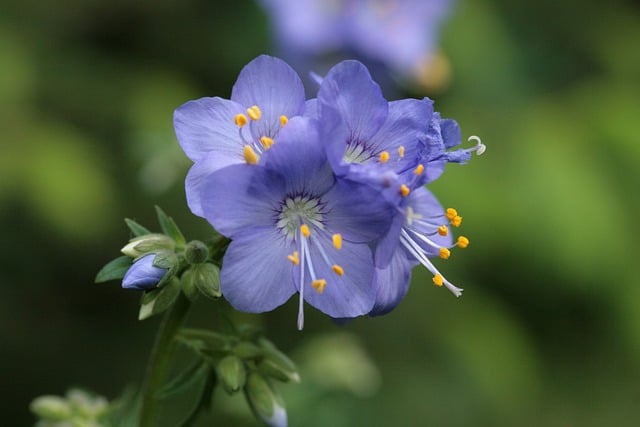
Jacob’s ladder is a perennial plant often characterized by its delicate, fern-like foliage and clusters of star-shaped blue or purple flowers that bloom in spring and early summer.
The dense foliage of Jacob’s ladder can provide some resistance against slugs, helping it thrive in different settings.
These plants prefer well-drained, fertile soil in partial shade, making them suitable for woodland gardens, shaded borders, and cottage gardens where their unique texture and color can add interest.
Japanese Iris (Iris ensata)
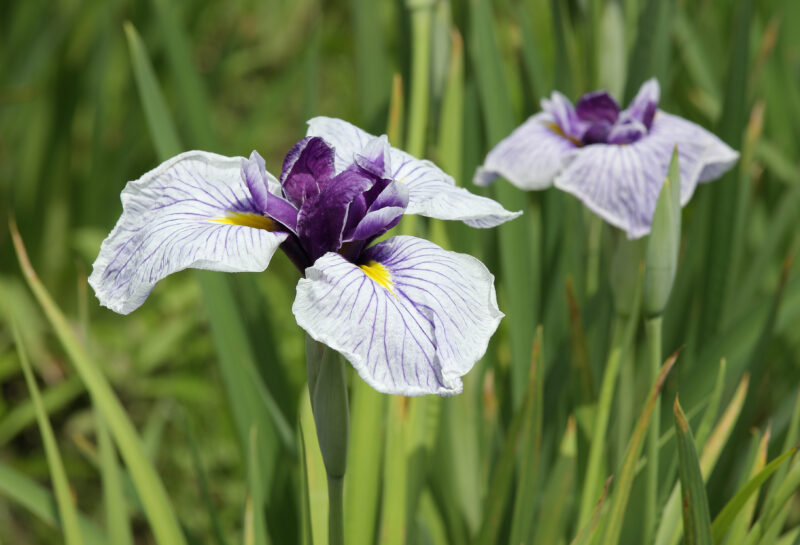
Japanese iris is known for its large, showy blooms that are available in a wide range of colors. These plants are often grown in water gardens or damp areas due to their enjoyment of consistent moisture.
Japanese irises can be somewhat vulnerable to slugs, particularly in overly wet conditions. Providing adequate garden management can help protect them.
They thrive in rich, well-drained soils and prefer full sun to partial shade. They work beautifully in water gardens, bog gardens, or as accents in perennial borders.
Japanese Meadowsweet (Spiraea japonica)
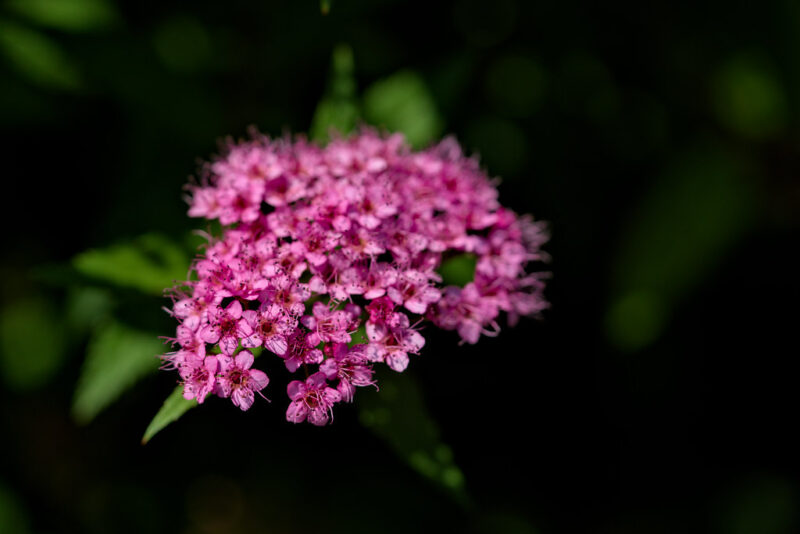
Japanese meadowsweet is a deciduous shrub popular for its clusters of small pink flowers and attractive foliage. This plant is often used for hedges or borders due to its hardiness and ornamental value.
Slugs may occasionally target young shoots, but with proper maintenance, meadowsweet can remain resilient in many garden settings.
It prefers well-drained soils and full sun to partial shade, thriving in mixed borders and flower gardens, adding charm and structure to the landscape.
Knapweeds (Centaurea)
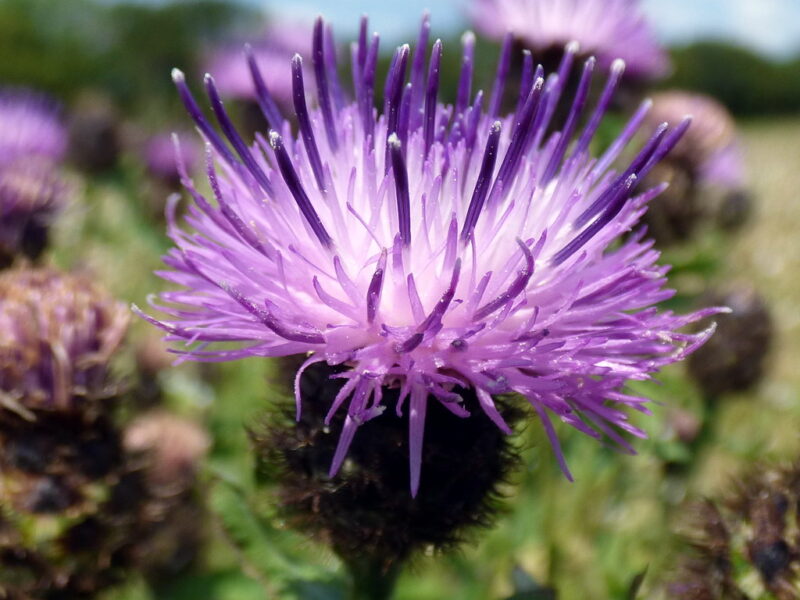
Knapweeds are a varied group of flowering plants known for their striking, resilient blooms that add color to gardens. They include many species, some of which may be invasive, while others serve as beautiful ornamental plants.
The tough, spiky nature of knapweeds often deters slugs, enabling them to thrive even in environments where pests are present.
These plants prefer well-drained soil and full sun, making them excellent for wildflower gardens, meadows, or border plantings.
Knotweed (Persicaria)
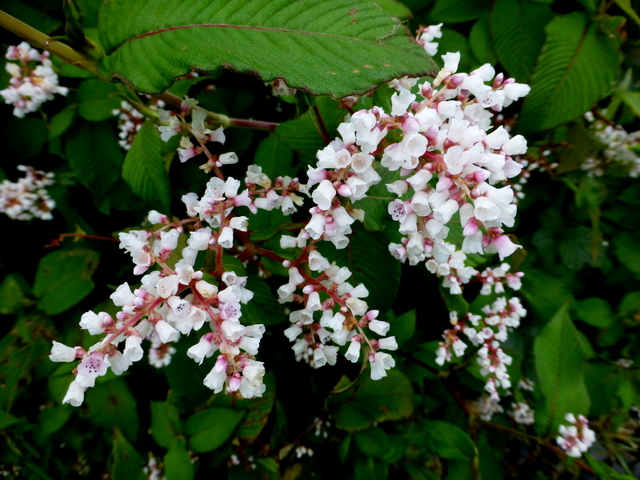
Knotweeds, especially those in the Persicaria, are hardy, often herbaceous perennials that produce clusters of small flowers. Some species can be invasive, so careful management is essential.
Knotweeds may vary in their resistance to slugs, but many species thrive with good garden care and practices.
These plants prefer moist, well-drained soils and can tolerate full sun to partial shade. They are suitable for cottage gardens, borders, and natural areas, adding texture and charm.
Lady’s Mantle (Alchemilla)
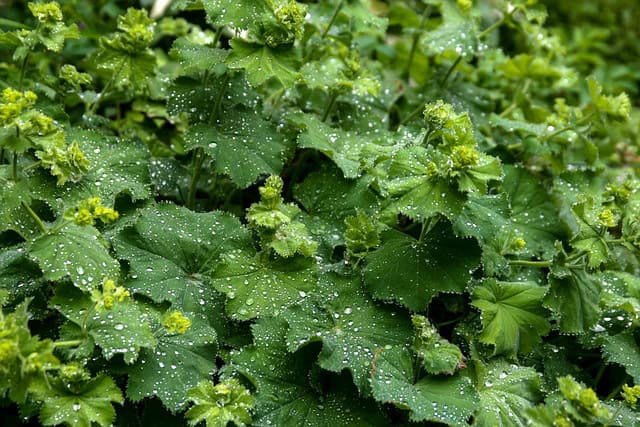
Lady’s mantle is a perennial plant known for its beautifully rounded leaves and small, drooping clusters of yellow-green flowers. It is often used in floral arrangements and serves as a lovely ground cover.
Lady’s mantle is highly regarded for its resistance to slugs due to its tough leaves, which slugs often avoid.
It prefers well-drained, slightly moist soil and thrives in partial to full shade, making it suitable for borders, rock gardens, and shaded areas where it can flourish beautifully.
Leucanthemum (L.)
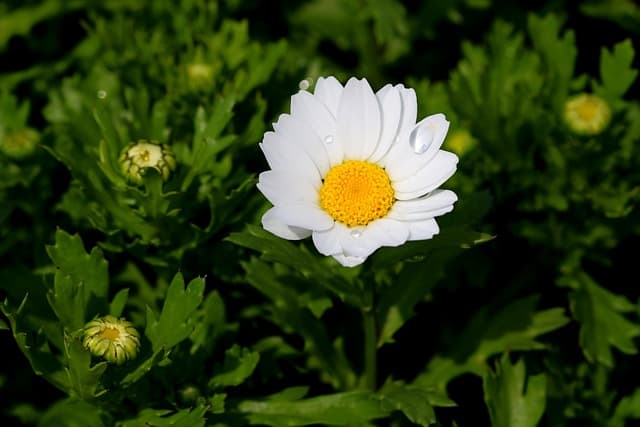
Leucanthemum, commonly known as daisies, features classic white flowers with yellow centers that are popular in sunny borders and cottage gardens. They are excellent for attracting pollinators.
The stiff foliage of leucanthemum provides good slug resistance, helping them thrive in various garden conditions.
These plants prefer well-drained soils in full sun, making them ideal for borders, meadows, or as cut flowers in floral arrangements.
Lily of the Valley (Convallaria majalis)
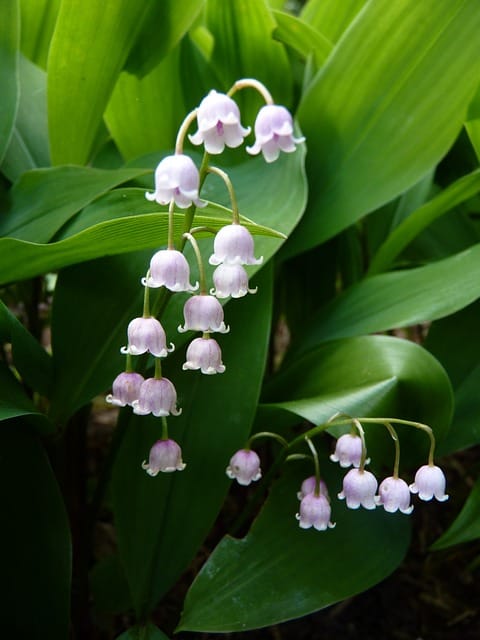
Lily of the valley, often referred to as May bells, is a beloved perennial known for its fragrant, bell-shaped white flowers and lush green foliage. This plant is often used for ground cover in shady areas.
Lily of the valley has some resistance to slug damage due to its toxic properties, making it a less attractive food source for slugs.
It thrives in well-drained, moist soil and prefers partial to full shade, making it suitable for woodland gardens and shady borders.
Linaria
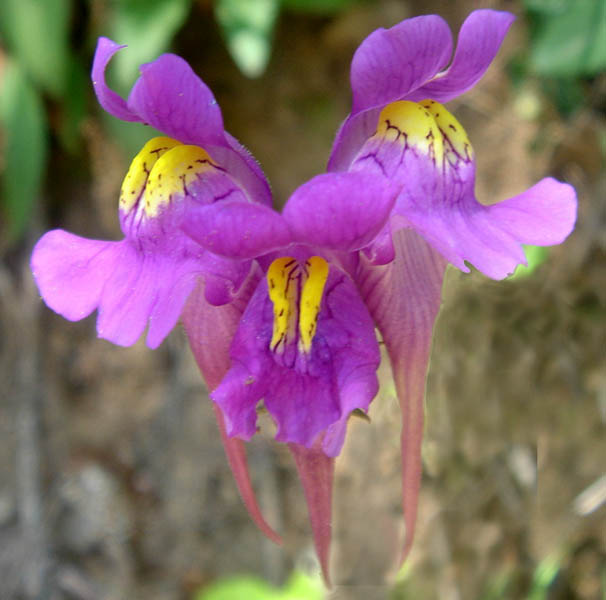
Linaria, also known as toadflax, includes a variety of flowering plants that are often used for their unique, snapdragon-like flowers. They can provide colorful blooms in gardens and are generally low maintenance.
While some Linaria species can attract slugs, many are hardy and resilient, especially when grown under favorable conditions.
These plants prefer well-drained soil and full sun, making them ideal for cottage gardens, borders, and wildflower meadows.
Lobelia
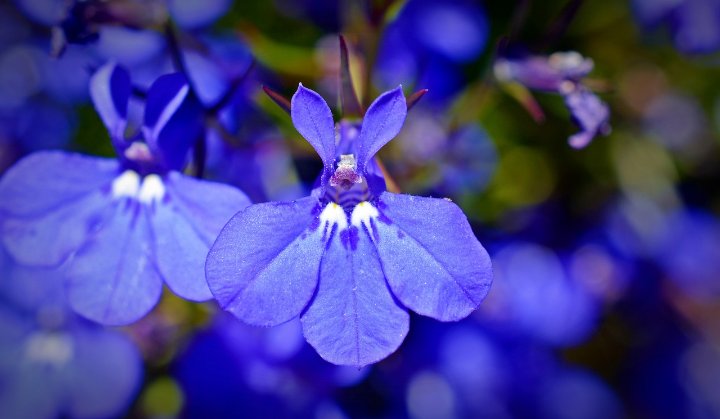
Lobelia is a diverse of plants known for their trailing or upright growth habits and vibrant blue or purple flowers. These plants are commonly used in hanging baskets, containers, and as ground cover.
Young lobelia plants may attract slugs, especially if grown in overly damp areas. Good cultural practices can help mitigate this risk.
Lobelia prefers well-drained soil and thrives in full sun to partial shade, working well in garden beds, borders, and containers for a burst of color.
Lobularia maritima (Sweet Alyssum)
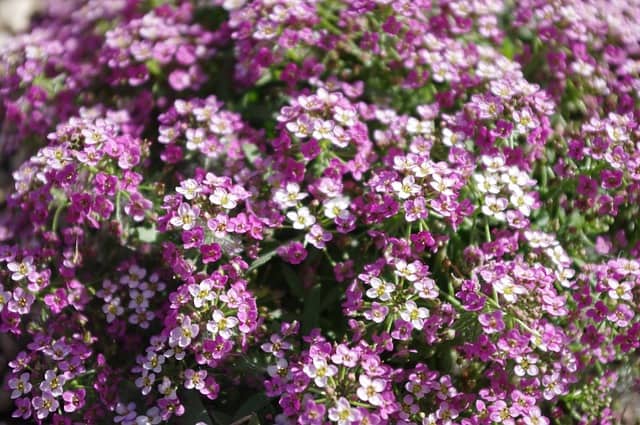
Lobularia maritima, commonly known as sweet alyssum, is a low-growing annual known for its clusters of tiny, fragrant flowers that can cover garden beds with a lovely sweet scent.
The toughness of sweet alyssum’s foliage provides good resistance to slugs, allowing it to thrive in many garden situations.
This plant prefers well-drained soil and full sun to partial shade, making it suitable for borders, ground cover, and as filler in flower beds.
London Pride (Saxifraga x urbium)
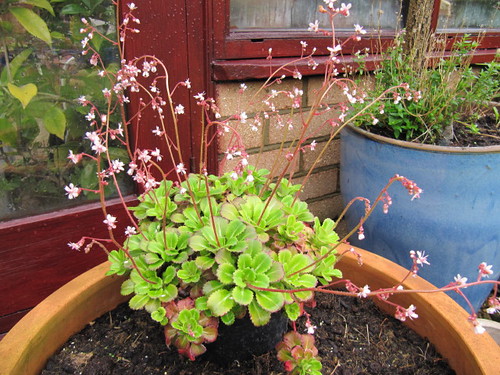
London pride, also known as whimsley and look-up-and-kiss-me, is a hardy perennial plant known for its charming rosettes and pink flower clusters. It adds aesthetic appeal to paths, rock gardens, and borders.
London pride generally has some resistance to slugs due to its thicker leaves.
This plant prefers well-drained soil and partial to full shade, thriving in a variety of settings, including rock gardens and woodland areas, providing ground cover and visual interest.
Loosestrife (Lysimachia)
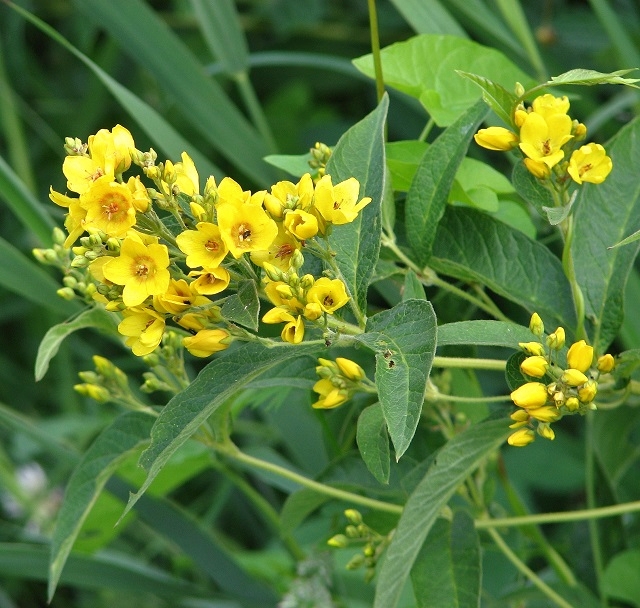
Loosestrife, particularly in the Lysimachia, includes many beautiful flowering perennial plants. They typically produce clusters of yellow or purple flowers that can create stunning visual displays in gardens.
Some loosestrife species can attract slugs, but many are hardy and can resist damage with proper care.
Loosestrife prefers moist to wet soils and full sun to partial shade, thriving in borders, rain gardens, or along water features in landscapes.
Love-in-a-Mist (Nigella damascena)

Love-in-a-mist is an annual flowering plant known for its delicate, spider-like blooms surrounded by finely divided foliage, creating a misty appearance. It typically comes in shades of blue, white, or pink.
Love-in-a-mist can be somewhat vulnerable to slugs, especially when young. Careful management can help protect them in slug-prone gardens.
This plant thrives in well-drained soil and prefers full sun, making it excellent for cottage gardens, borders, or as an ornamental in wildflower mixes.
Maiden Pink (Dianthus deltoides)
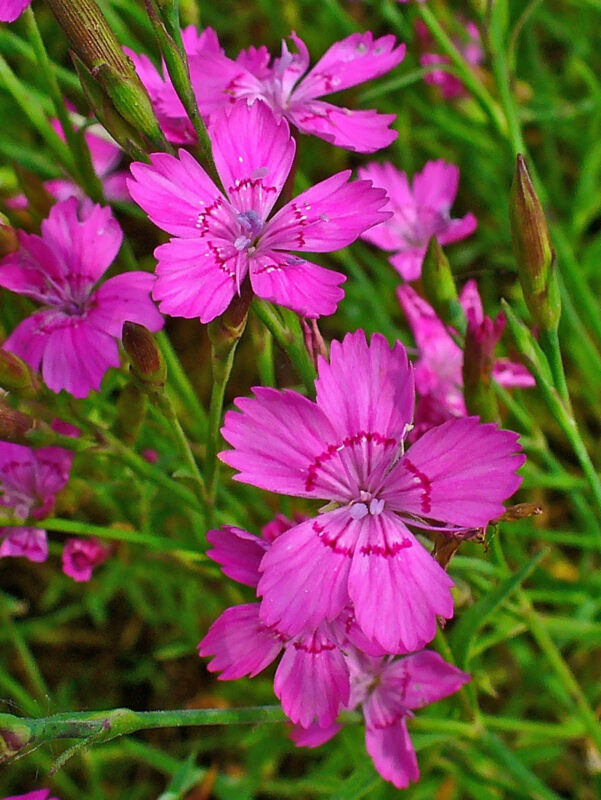
Maiden pink is a perennial plant known for its bright, fragrant pink flowers and gray-green foliage. It is often used as ground cover and in rock gardens for its eye-catching blooms.
Maiden pink exhibits some resistance to slugs due to its tougher foliage.
These plants prefer well-drained soil in full sun, making them suitable for rock gardens, borders, and cottage gardens, where they can provide lovely, colorful displays.
Mallow (Malva)
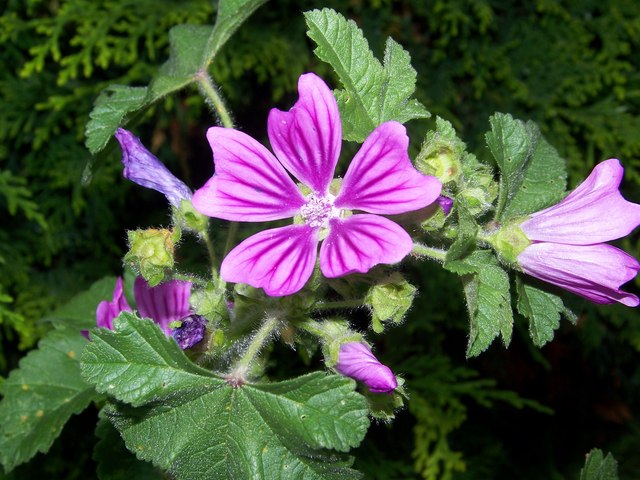
Mallows belong to the Malva and are characterized by their large, showy flowers, often in shades of pink, purple, or white. They are typically easy to grow and make excellent border plants.
Mallows can sometimes attract slugs, particularly young plants, but they generally have decent resilience due to their robust foliage.
These plants prefer well-drained soils in full sun, thriving in cottage gardens, perennial borders, and naturalized areas, providing vibrant blooms for extended periods.
Marigold (Calendula officinalis)
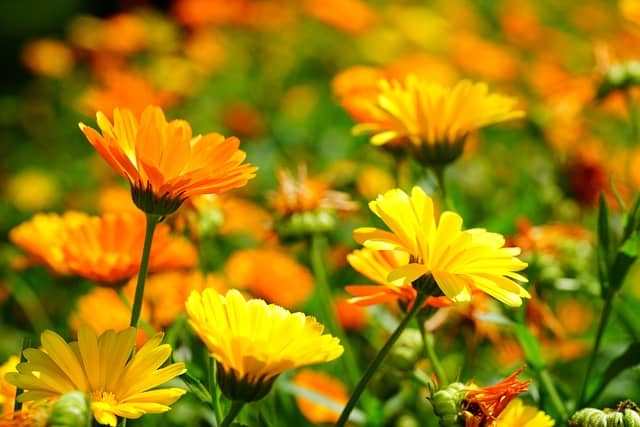
Marigold, particularly Calendula officinalis, is a brightly flowering annual known for its cheerful orange and yellow blooms. This plant is often used for its medicinal properties and in companion planting to deter pests.
Marigolds have a strong scent and tougher leaves, providing some resistance against slugs in garden settings.
These plants prefer well-drained soil and full sun, making them ideal for borders, containers, and as companions in vegetable gardens where their bright color can enhance the landscape.
Meadowsweet (Filipendula)

Meadowsweet is a perennial herb known for its attractive, frothy clusters of white or pink flowers that bloom in summer. It is commonly found in wet meadows and is valued for its fragrance and medicinal properties.
Meadowsweet exhibits some slug resistance due to its tougher foliage.
These plants prefer moist, well-drained soils and thrive in full sun to partial shade, making them suitable for moist woodland gardens, along riverbanks, or in naturalized areas.
Meconopsis
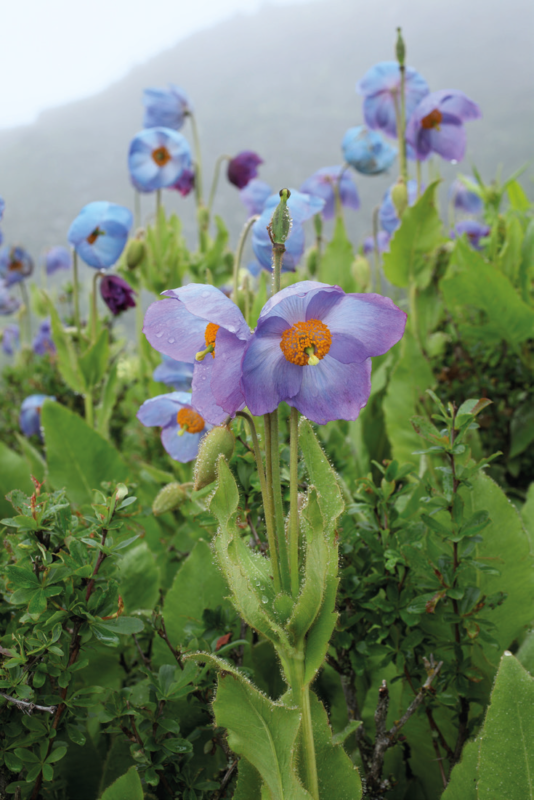
Meconopsis, commonly known as Himalayan poppy, features spectacular blue flowers that are often difficult to cultivate but are cherished for their stunning beauty. They require specific conditions to thrive.
Meconopsis plants can be somewhat vulnerable to slugs, particularly when young. Careful management can mitigate slug damage.
These plants prefer rich, well-drained, and slightly acidic soils in partial shade, thriving in woodland or alpine gardens where their unique colors will stand out.
Monarda (M.)
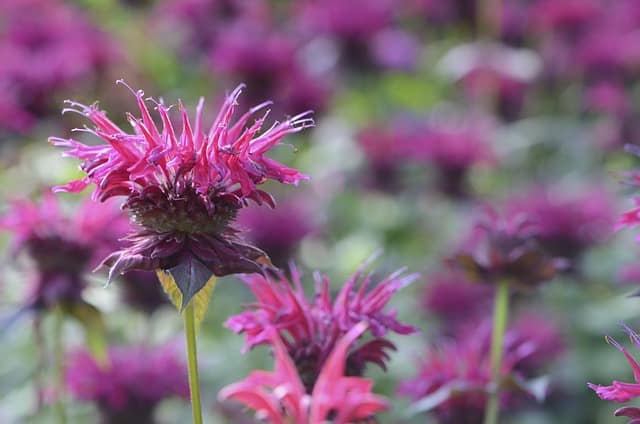
Monarda, commonly known as bee balm or horsemint, is known for its vibrant, tubular flowers and aromatic foliage. It is a favorite among pollinators and is often used in herbal teas.
Monarda plants generally have good resistance to slugs due to their aromatic, tougher foliage, which deters many pests.
They thrive in well-drained soils in full sun to partial shade and are suitable for borders, cottage gardens, and wildflower meadows, where they can attract bees and butterflies.
Moneywort (Lysimachia nummularia)
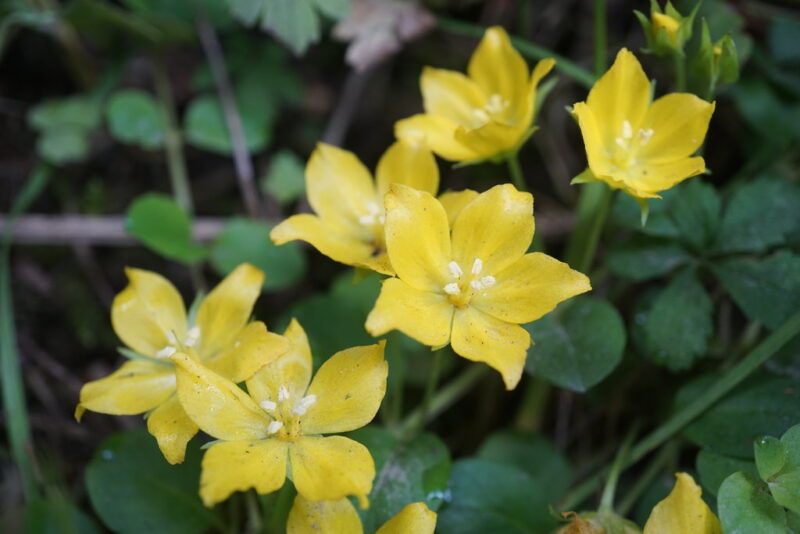
Moneywort, or creeping jenny, is a low-growing perennial often used as ground cover. It produces yellow flowers in spring and brings brilliant green foliage that turns golden in the fall.
Moneywort has some resistance to slugs due to its fast-growing nature and robust stem structure.
This plant prefers well-drained soil and thrives in full sun to partial shade, making it ideal for borders, rock gardens, or as ground cover in challenging areas.
Montbretia (Crocosmia)
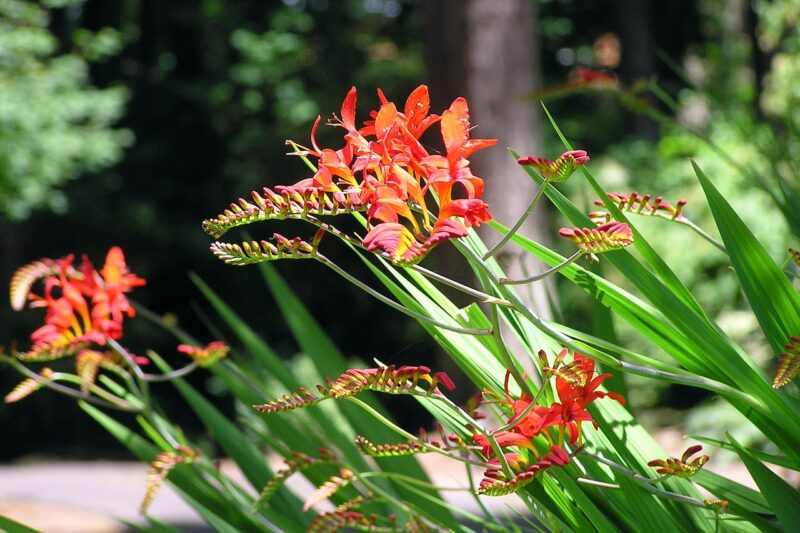
Montbretia, or Crocosmia, is a perennial with vibrant, tubular flowers that typically bloom in shades of orange, red, or yellow. It attracts hummingbirds and adds a bright splash to any garden.
Although they may not be highly preferred by slugs, young plants can still be at risk. However, their vigorous growth often allows them to withstand some pest damage.
Montbretia thrives in well-drained soil and full sun, making it suitable for borders, sunny gardens, and as cut flowers in arrangements.
Mountain Aven (Dryas octopetala)
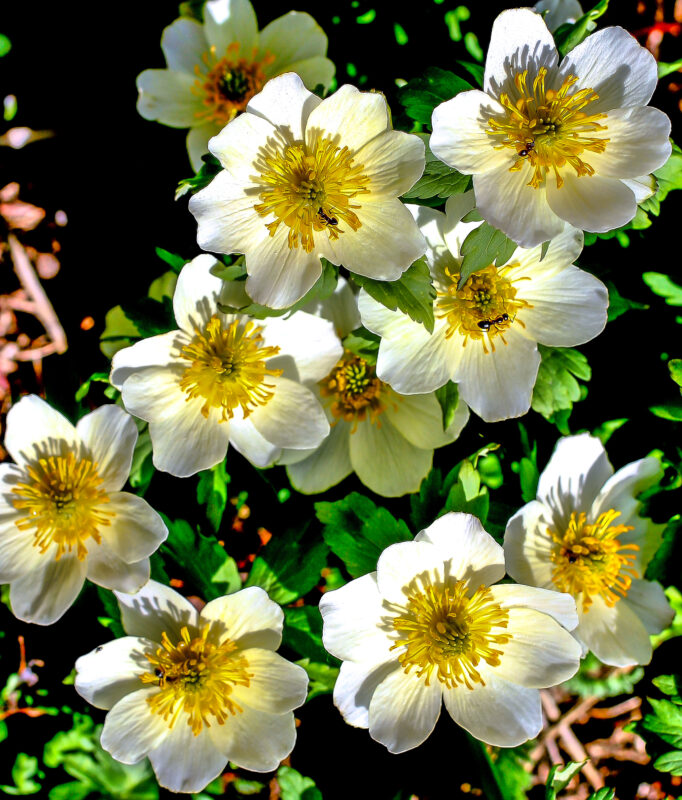
Mountain aven is a robust perennial often found in alpine or rocky conditions, characterized by its white, star-like flowers and distinctive foliage. It is a key plant in mountainous ecosystems.
Mountain aven is generally unappealing to slugs due to its tough leaves and woody base.
It prefers well-drained, sandy or rocky soils and tolerates full sun to partial shade, thriving in rock gardens, alpine gardens, or naturalized areas.
Myosotis (M., Forget-Me-Not)
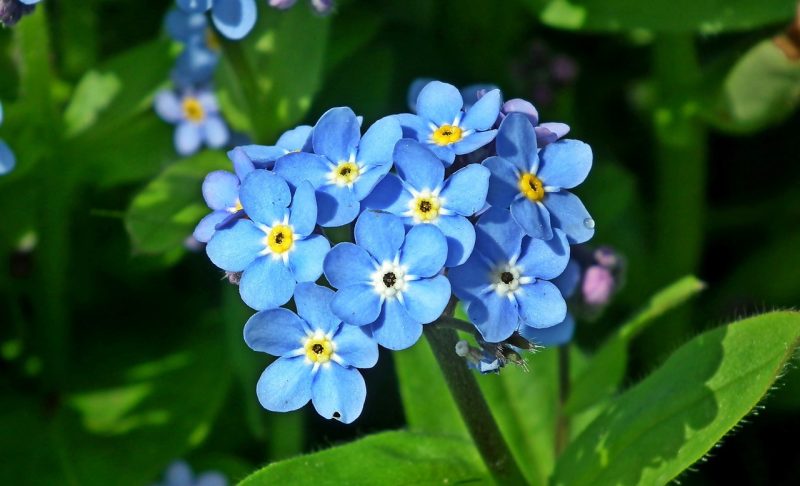
Myosotis, commonly known as forget-me-nots, are beloved for their small, delicate blue flowers that bloom in clusters. They are often associated with memories and sentimental value.
These plants may attract slugs, particularly under wet conditions, but their hardy nature can help mitigate damage.
Forget-me-nots thrive in moist, well-drained soils and prefer partial shade to full sun, making them suitable for woodland gardens, borders, and as edging plants.
Myrtle Spurge (Euphorbia myrsinites)
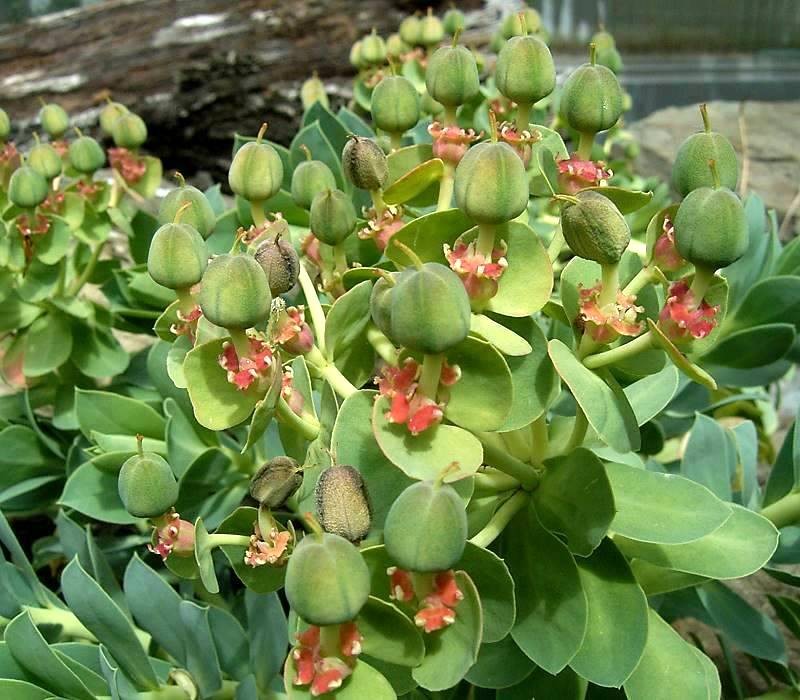
Myrtle spurge is a creeping perennial with fleshy, blue-green leaves and striking yellow-green flowers that bloom in the spring. It is used for ground cover in sunny locations.
Myrtle spurge is mildly toxic and often not favored by slugs, providing some natural resistance against pest damage.
It grows best in well-drained, dry soils and prefers full sun, making it ideal for rock gardens, borders, or xeriscaping.
Narcissus (N., Daffodils)
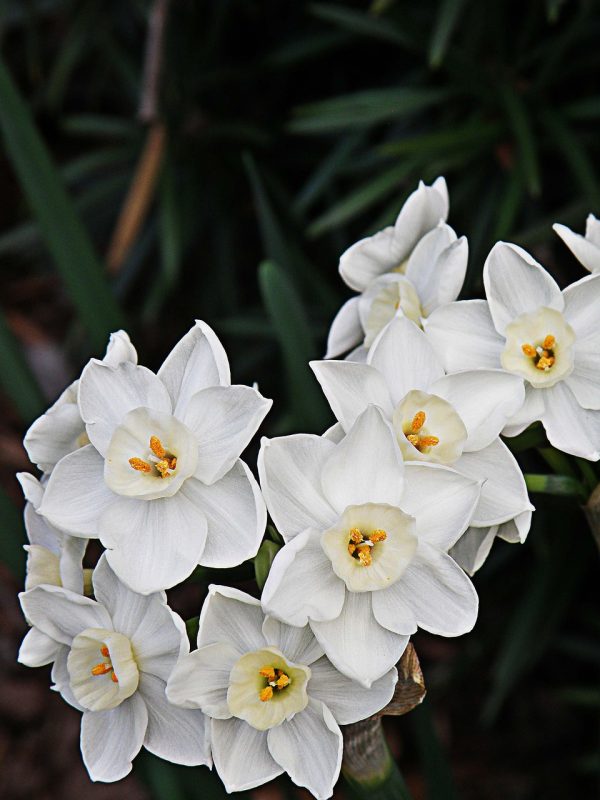
Narcissus, commonly known as daffodils, are spring-blooming bulbs well-known for their cheerful yellow and white flowers. They are often naturalized in gardens and known for being pest resistant.
Daffodils are toxic to slugs and many garden pests, making them very resistant to slug damage.
They prefer well-drained soil and full sun to partial shade, thriving in borders, naturalized areas, and as cut flowers.
Nasturtium (Tropaeolum)
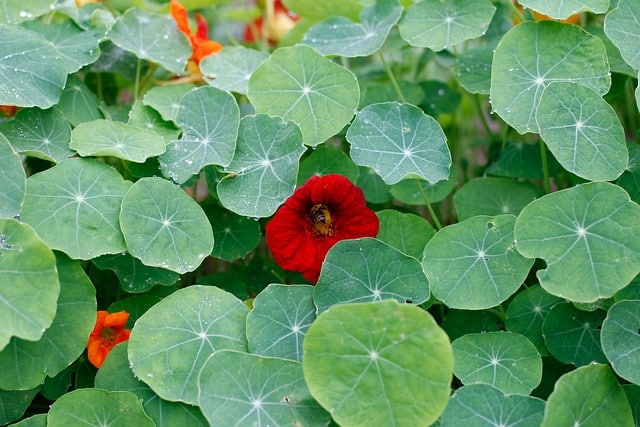
Nasturtiums are annual flowers known for their bright colors and unique, round leaves. They are often used in salads and culinary dishes due to their peppery flavor.
While nasturtiums can be attractive to slugs, they are also known for their rapid growth and ability to outcompete pests.
These plants thrive in well-drained soil and prefer full sun, making them great for borders, containers, or as edible ground cover.
Nemesia
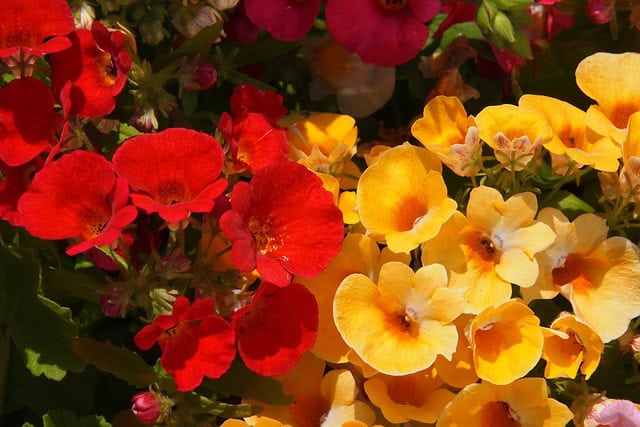
Nemesia is a of flowering plants that produces colorful blooms in various shades. They are often used in containers, borders, and hanging baskets for a pop of color.
Nemesia may attract slugs, especially in moist conditions, but with good garden management, their impact can be minimized.
They prefer well-drained soils and full sun to partial shade, flourishing in flower beds, borders, and as bedding plants.
Nicotiana (N. x sanderae)
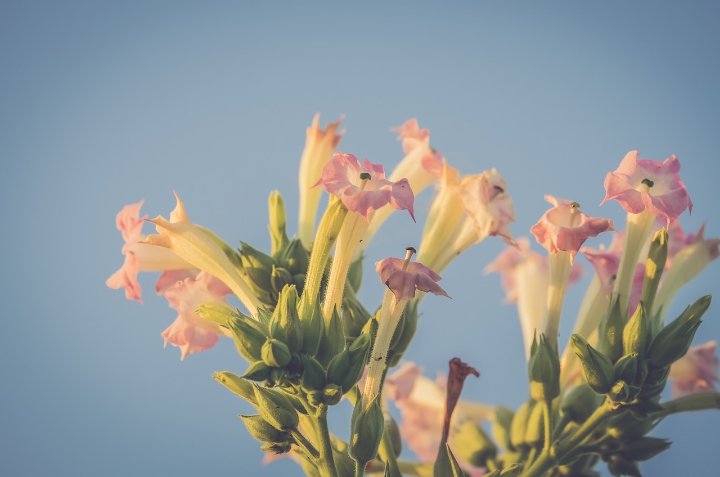
Nicotiana, particularly N. x sanderae, is an ornamental tobacco plant known for its attractive, tubular flowers that emit a pleasant fragrance, particularly in the evening.
Nicotiana plants can be somewhat vulnerable to slugs, but they are often resilient in well-maintained gardens.
These plants prefer well-drained soil and full sun, thriving in mixed borders or as accent plants where their fragrance can be appreciated.
Obedient Plant (Physostegia virginiana)
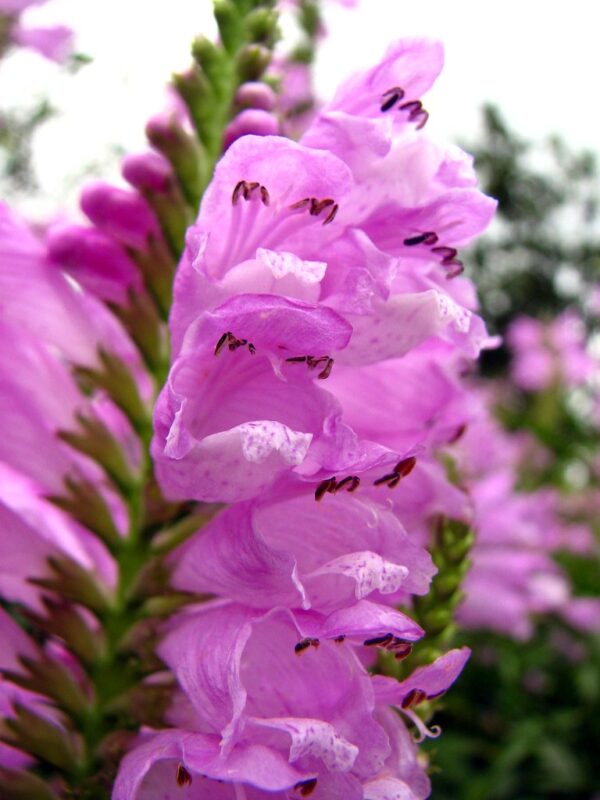
Obedient plant is a perennial known for its spikes of tubular flowers that can be repositioned, hence the name “obedient.” It attracts pollinators and adds vertical interest to borders.
Obedient plants exhibit some resistance to slugs due to their sturdy stems and foliage.
They prefer well-drained soil and full sun to partial shade, thriving in borders, rain gardens, or wildflower meadows.
Oriental Poppy (Papaver orientale)
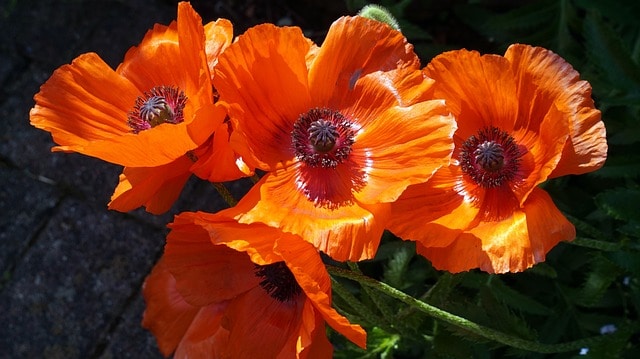
The Oriental poppy is a striking perennial known for its large, showy flowers that bloom in vibrant shades of red, pink, and orange. They are often grown for their dramatic appearance.
While young plants can be vulnerable to slugs, once established, Oriental poppies are generally resilient.
They prefer well-drained soil and full sun, making them excellent for borders, cottage gardens, and as cut flowers.
Pasque Flower (Pulsatilla)
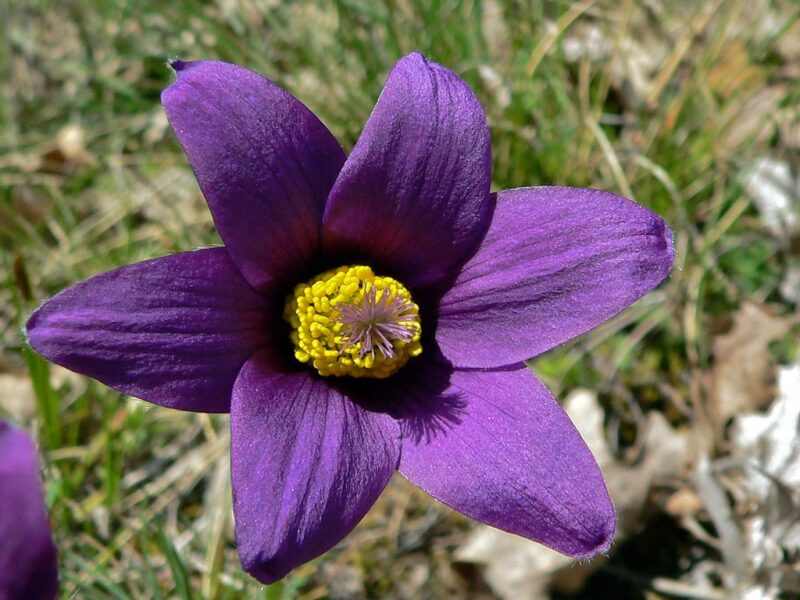
Pasque flowers are early bloomers with prized bell-shaped flowers that can vary in color. They are known for their feathery seed heads and can be one of the first flowers to appear in spring.
Pasque flowers have some resistance to slugs, primarily due to their hair-like foliage that can deter pests.
They thrive in well-drained soil and full sun to partial shade, suitable for rock gardens, wildflower gardens, and naturalized areas.
Peavines (Lathyrus)
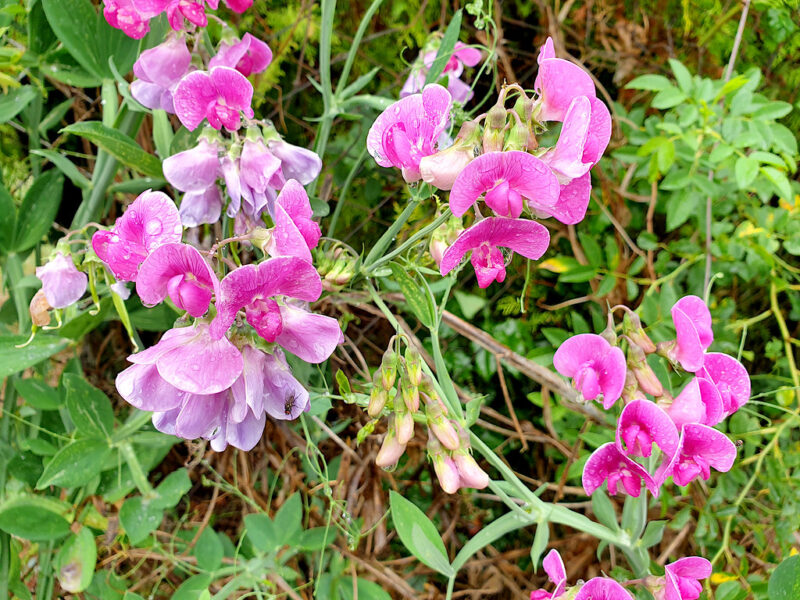
Peavines are a part of the Lathyrus and include various species of flowering plants, commonly known for their climbing habits and pea-like blossoms. They are appreciated for their ornamental and ecological value.
While young peavines may attract slugs, they often grow vigorously enough to withstand some pest damage.
These plants prefer well-drained soil and full sun, thriving in trellises, fences, or as ground cover where they can climb and spread.
Peony (Peonia)
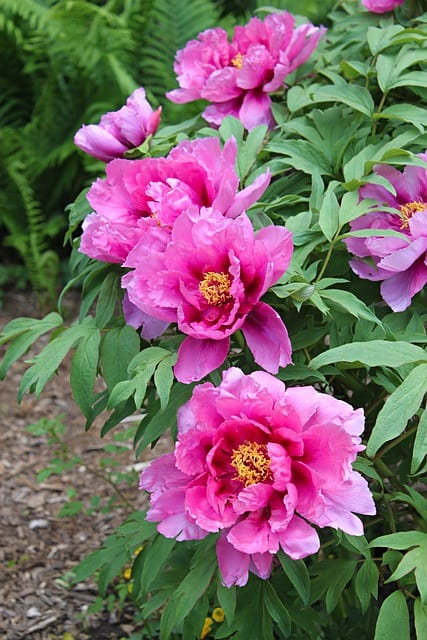
Peonies are cherished perennials known for their large, lush blooms that come in a variety of colors, predominantly pink, white, and red. They are long-lived and beloved in gardens.
Peonies generally exhibit excellent resistance to slugs, as their thick stems and leaves deter pests.
They prefer well-drained, nutrient-rich soils and thrive in full sun to partial shade, making them suitable for borders, cottage gardens, and as cut flowers.
Pericallis × hybrida (Cineraria)
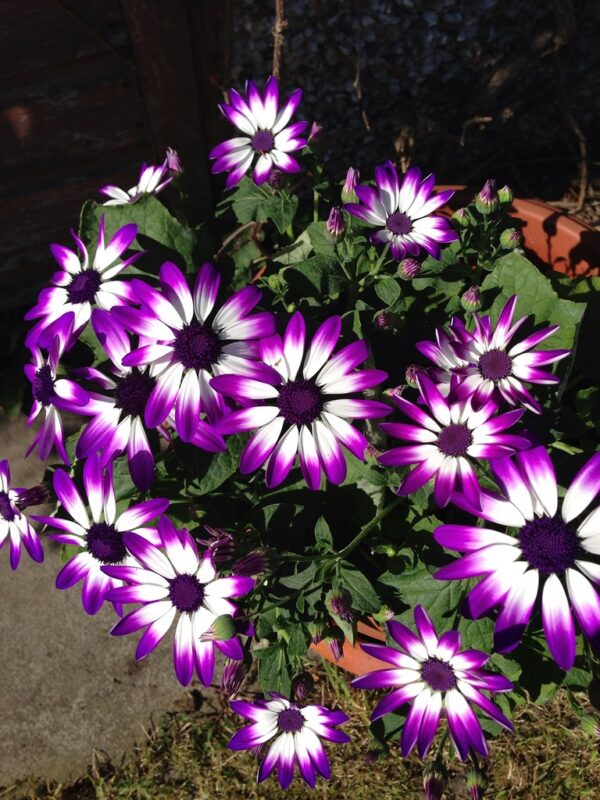
Pericallis × hybrida, commonly known as cineraria, is an ornamental plant appreciated for its bright, daisy-like flowers. They are often used in containers and as houseplants in cooler climates.
These plants may attract slugs, particularly when young, but their growth can often outpace potential damage.
They prefer well-drained soil and full sun, thriving in flower beds, borders, or as indoor patio plants.
Periwinkle (Vinca)
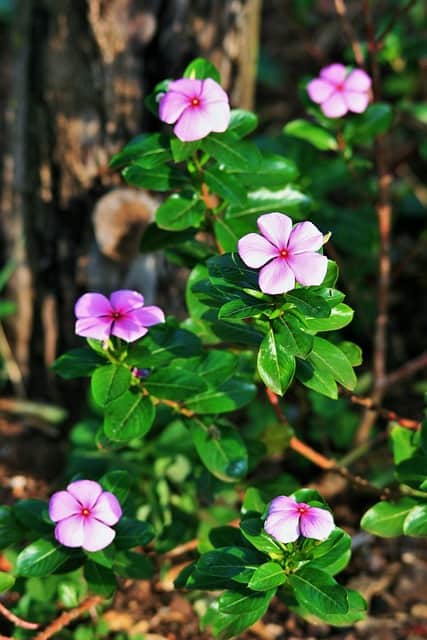
Periwinkle, belonging to the Vinca, is characterized by its trailing growth habit and attractive blue or purple flowers. It’s commonly used for ground cover in shaded areas.
Periwinkle is relatively resistant to slugs due to its tougher foliage and trailing nature.
These plants prefer well-drained soil and full sun to partial shade, thriving in ground cover applications, borders, and shaded gardens.
Perovskia
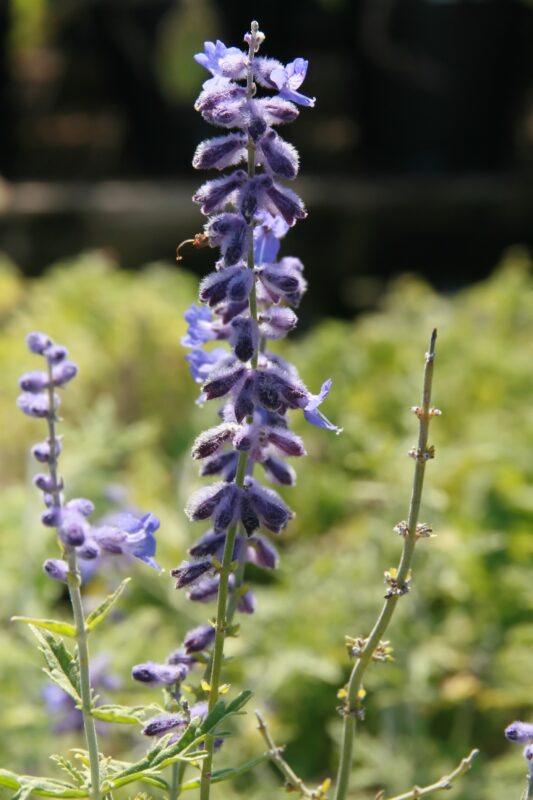
Perovskia, commonly known as Russian sage, is a herbaceous perennial known for its silvery foliage and spikes of fragrant purple flowers. It attracts pollinators and adds a soft texture to gardens.
Perovskia is resistant to slugs due to its aromatic leaves and generally resilient growth habit.
This plant thrives in well-drained soil and full sun, making it excellent for borders, cottage gardens, and drought-tolerant landscapes.
Phlox
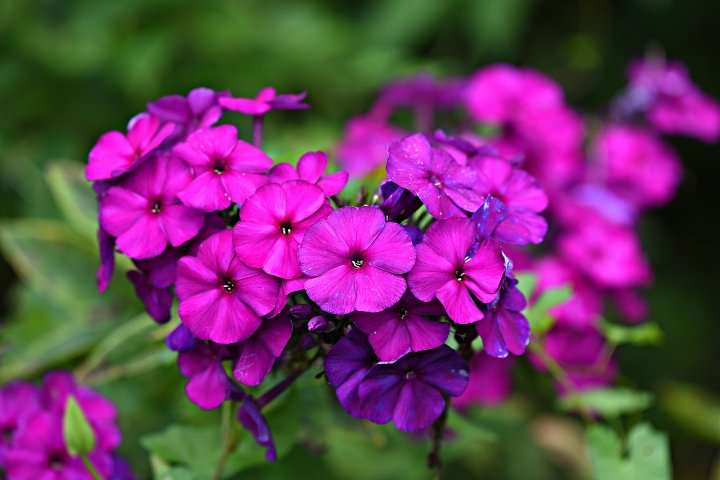
Phlox is a diverse of flowering plants that produce clusters of colorful, fragrant flowers. They are often used in garden borders and attract butterflies and bees.
Phlox can attract slugs, particularly in damp conditions, but with good care, their impact can be managed.
These plants thrive in well-drained soil and prefer full sun to partial shade, making them superb for cottage gardens, wildflower meadows, and mixed borders.
Pilewort (Ficaria verna)
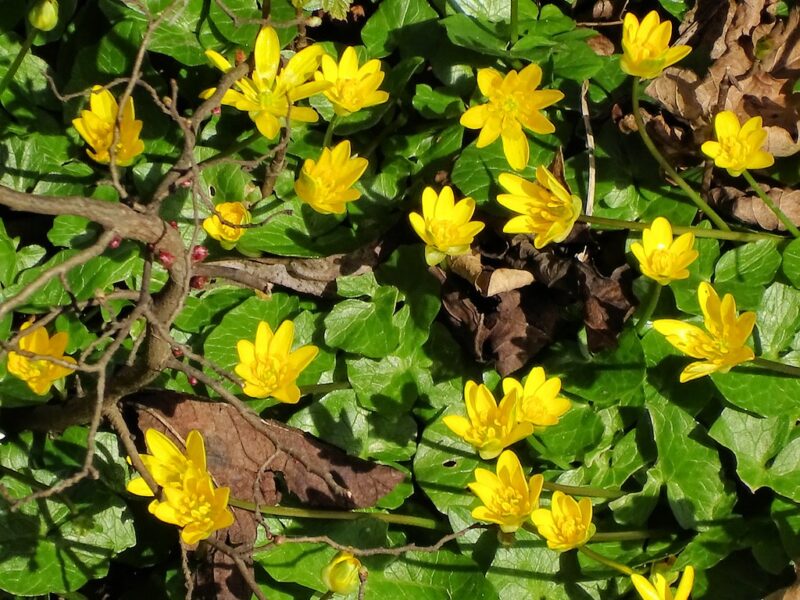
Pilewort, or lesser celandine, is a perennial known for its bright yellow flowers that herald spring. It can form dense mats and is often seen in woodland settings.
Although pilewort can attract slugs due to its soft, succulent leaves, its rapid growth can help compensate for potential damage.
These plants prefer moist, well-drained soils and thrive in full sun to partial shade, making them suitable for woodland gardens, shady borders, and naturalized areas.
Platycodon grandiflorus (Balloon Flower)
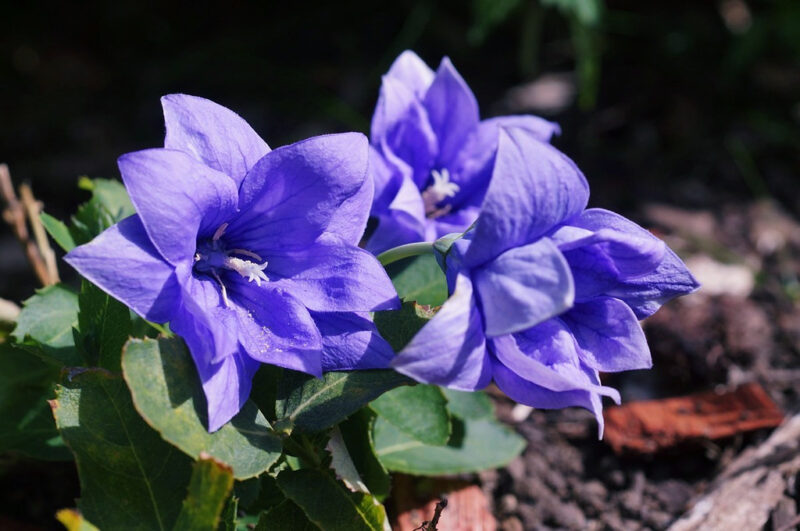
Platycodon grandiflorus, known as balloon flower, features unique balloon-like buds that open into star-shaped flowers. They are hardy perennials offering long-lasting blooms.
These plants typically show some resistance to slugs due to their thicker foliage.
They prefer well-drained soils and full sun, thriving in borders, cottage gardens, and mixed perennial beds where their unique flowers can add interest.
Plume-Poppy (Macleaya cordata)
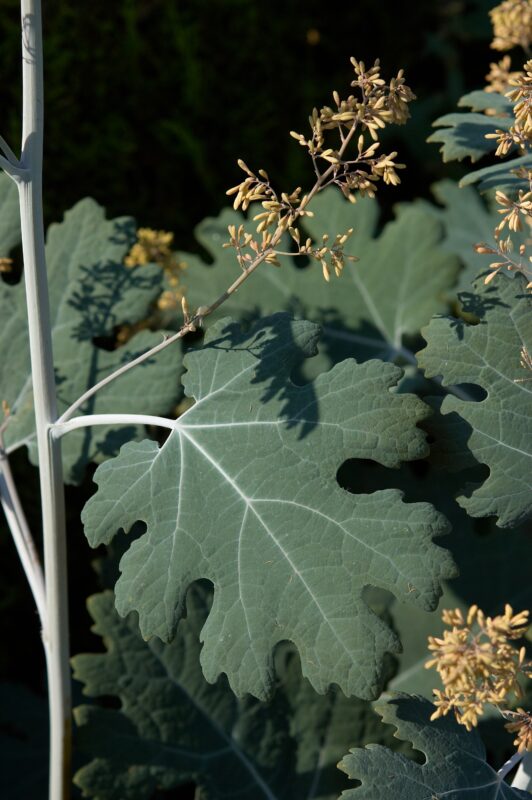
Plume-poppy is a tall perennial known for its feathery flower spikes and broad leaves. It is often used as a backdrop in gardens due to its height and visual interest.
Plume-poppy tends to have good resistance to slugs, thanks to its stout and robust growth.
These plants prefer well-drained soils and full sun to partial shade, making them excellent for borders, backdrops, and naturalized areas.
Portulaca grandiflora (Moss Rose)
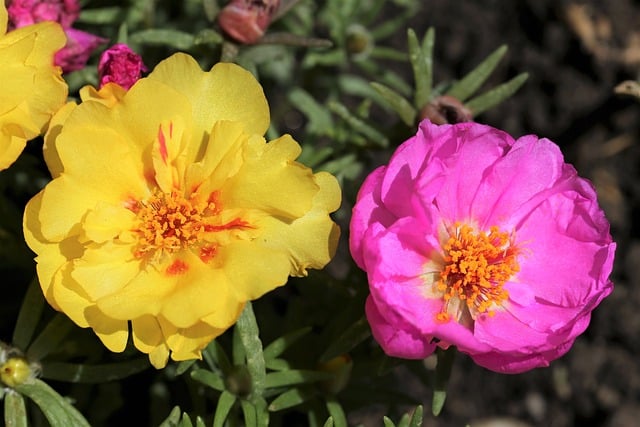
Portulaca grandiflora, also known as moss rose, is a succulent annual with vibrant flowers that open in sunny conditions. They are excellent for ground cover and containers.
Moss rose is resistant to slugs due to its thicker, fleshy leaves and low growing habit.
These plants thrive in well-drained, sandy soils and prefer full sun, making them ideal for rock gardens, borders, and containers.
Pot-of-Gold (Coreopsis verticillata)
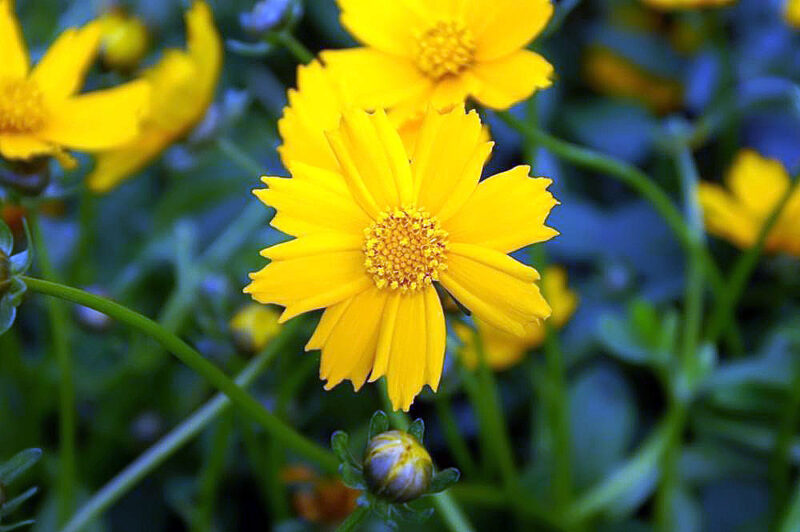
Pot-of-gold, or whorled tickseed, is a perennial known for its bright yellow flowers and resilient nature. It provides color and attracts pollinators in sunny gardens.
Pot-of-gold generally exhibits good slug resistance due to its tough foliage.
These plants prefer well-drained soils and full sun, thriving in borders, mixed gardens, and wildflower meadows.
Primroses (Primula)
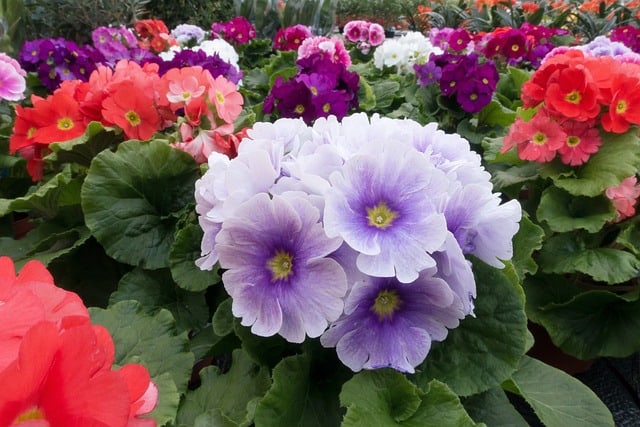
Primroses are charming perennials known for their delicate, early spring blooms in a variety of colors. Their vulnerability to slugs can depend on the specific species.
Some primrose varieties may attract slugs, but their hardiness can often allow them to survive moderate pest pressure.
They prefer rich, moist, well-drained soils and thrive in partial shade, making them suitable for woodland gardens, borders, and shaded areas.
Primula vialii
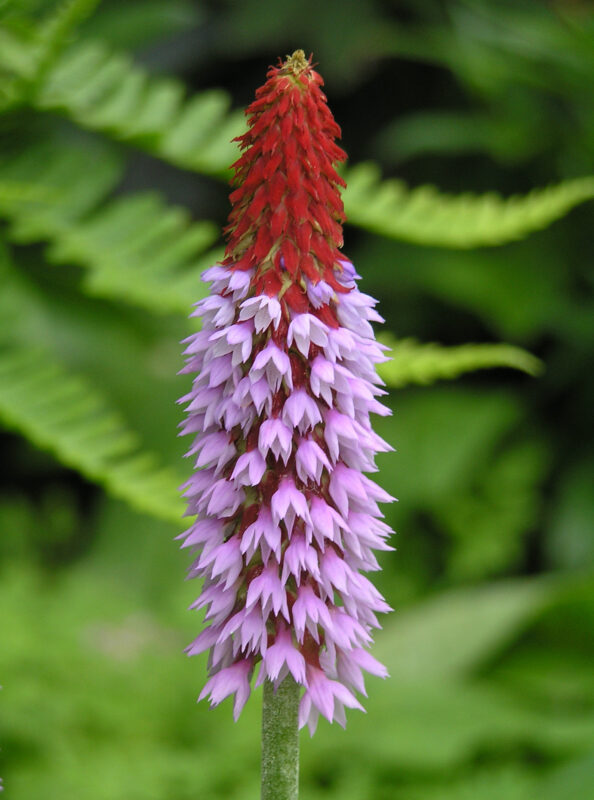
Primula vialii, also known as Tibetan primrose, features unique, tubular blooms arranged in a long spike. It is an eye-catching addition to shaded or semi-shaded areas.
While generally resilient, this species may encounter slug issues if not managed properly.
They thrive in moist, well-drained soils with partial to full shade, making them ideal for woodland gardens or shaded borders.
Purple Foxglove (Digitalis purpurea)
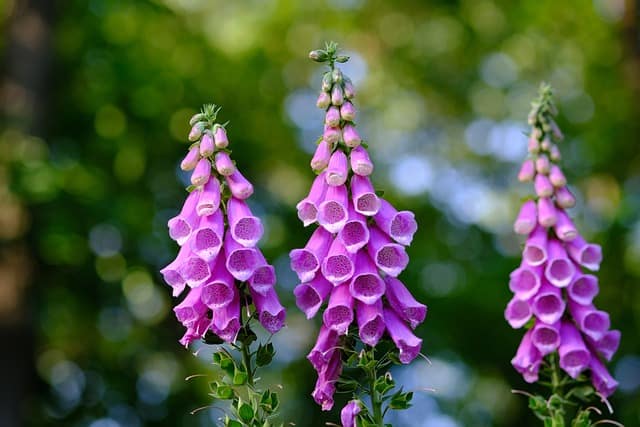
Purple foxglove is a biennial or perennial known for its tall, spiky blooms and trumpet-like flowers that are beloved by bees and other pollinators.
Foxgloves can attract slugs, particularly young plants, but their overall hardiness can help mitigate damage.
They prefer well-drained soil and partial to full sun, thriving in borders, woodland gardens, and cottage gardens where their height can create a stunning visual display.
Purple Mullein (Verbascum phoeniceum, Temptress Purple)
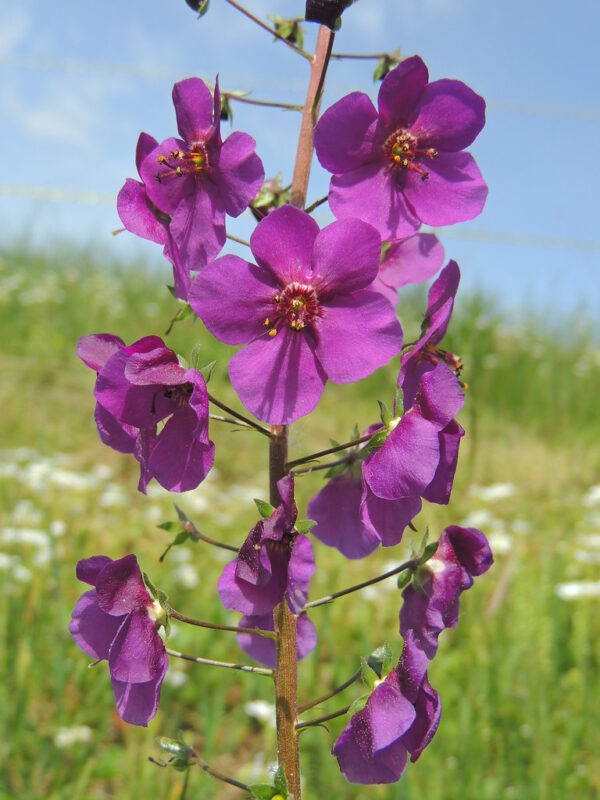
Purple mullein is a striking biennial plant known for its tall spikes adorned with purple flowers. It is often used in gardens for its dramatic vertical presence.
Although not highly palatable to slugs, young plants may be at risk until they establish a robust growth habit.
Purple mullein prefers well-drained, dry to average soil and full sun, making it ideal for borders, wildflower gardens, or naturalized areas.
Ragworts (Senecio, Groundsels)
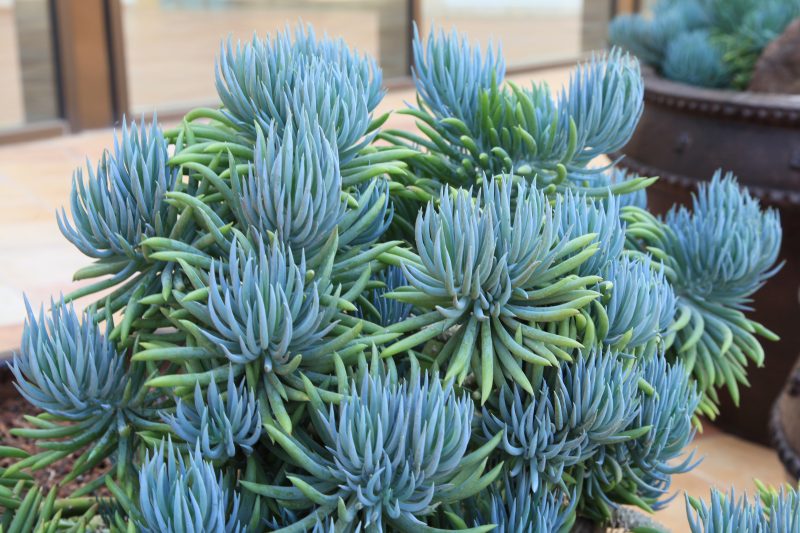
Ragworts are a diverse group of flowering plants often recognized by their bright yellow flowers. While they can attract a variety of pollinators, some species may be invasive and toxic to livestock.
Ragworts can be vulnerable to slugs, particularly in moist conditions, but they often grow in challenging environments where pests are less of a concern.
These plants thrive in well-drained soils and can tolerate poor conditions, making them suitable for wildflower meadows and informal gardens.
Rhododendrons
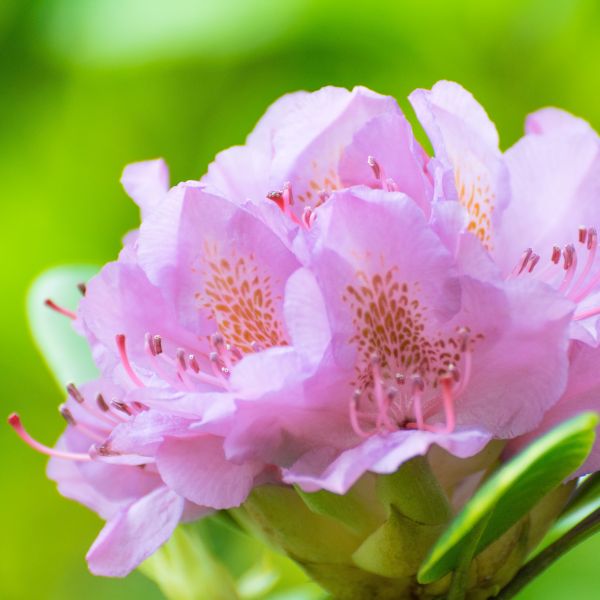
Rhododendrons are popular ornamental shrubs known for their large, colorful blooms and glossy foliage. They are highly prized in gardens and landscapes.
While they can attract slugs, their robust size and established root systems often allow them to withstand some pest pressure.
Rhododendrons prefer acidic, well-drained soils and thrive in partial to full shade, making them excellent for woodland gardens, borders, and foundation plantings.
Rockcress (Arabis)
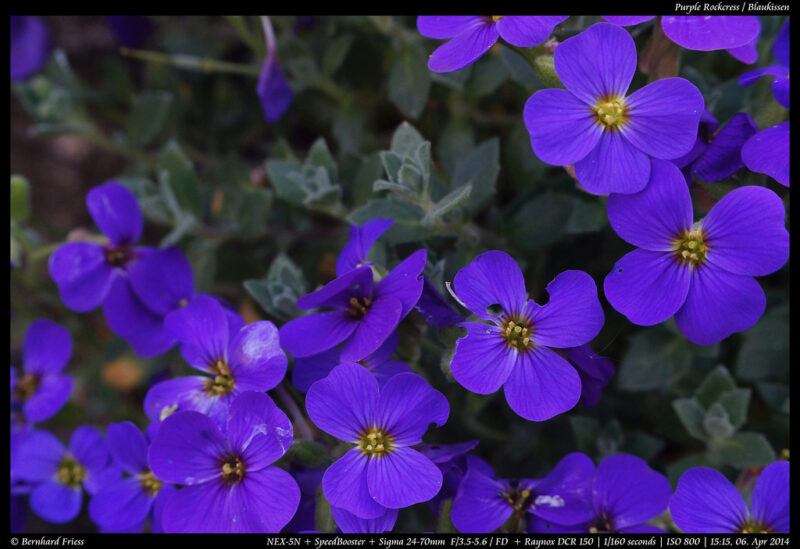
Rockcress is a low-growing perennial often found in rocky or alpine environments. It produces clusters of delicate flowers and is an excellent choice for ground cover.
Generally, rockcress is not a preferred food source for slugs, helping it to resist damage.
These plants prefer well-drained, rocky soils and full sun, thriving in rock gardens, borders, and as ground cover.
Rockrose (Helianthemum nummularium)
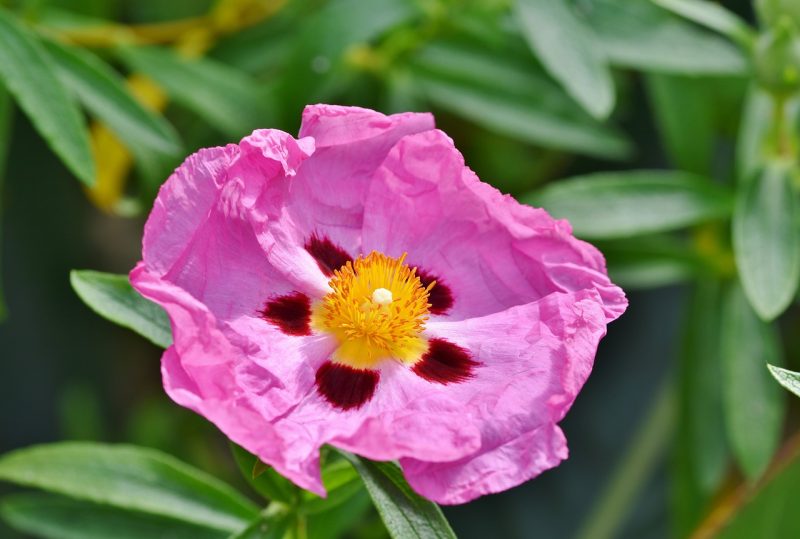
Rockrose is a hardy perennial characterized by its bright, showy flowers that bloom profusely in early summer. It is drought-tolerant and able to thrive in poor soils.
Rockrose tends to be resistant to slugs due to its tough, resinous leaves.
These plants thrive in well-drained, sandy or rocky soils and full sun, making them suitable for xeriscaping, rock gardens, and dry borders.
Rosa (R. – Depending on the Variety)
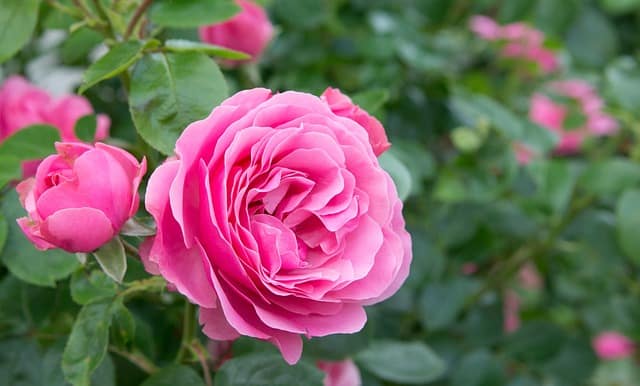 Roses are beloved flowers known for their beauty and fragrance, with many varieties offering an array of colors, sizes, and forms.
Roses are beloved flowers known for their beauty and fragrance, with many varieties offering an array of colors, sizes, and forms.
While young rose plants can attract slugs, mature plants are often resilient due to their tougher foliage and growth habits.
Roses prefer well-drained soil, plenty of sunlight, and good air circulation, thriving in gardens, borders, and as climbers on trellises.
Rubiaceae (Coffee, Madder, Bedstraw Family)
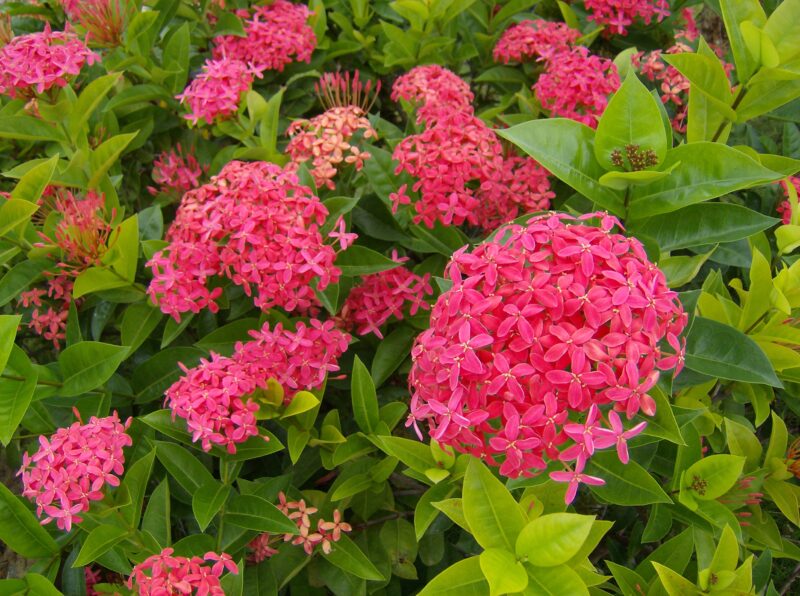
Rubiaceae is a diverse family that includes plants such as coffee and various medicinal herbs. Many members are appreciated for their ornamental value and ecological roles.
The vulnerability of species in this family to slugs can vary greatly depending on the specific plant and growing conditions.
They typically thrive in moist, well-drained soils and may require full sun to partial shade, suited for herb gardens, mixed borders, and specialty collections.
Santolina
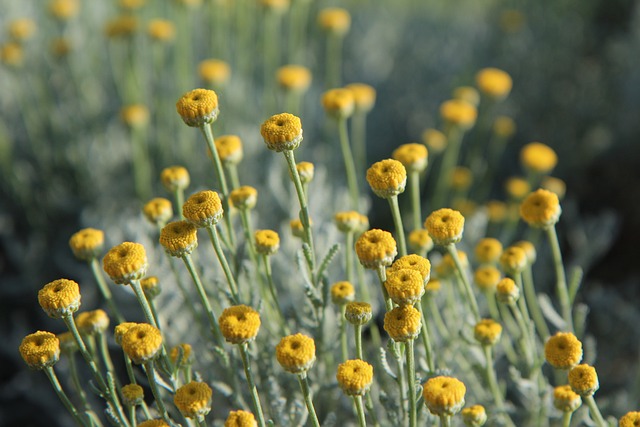
Santolina, known as lavenders cotton, is an aromatic perennial known for its fragrant, grey-green foliage and button-like yellow flowers that bloom in summer.
Santolina is generally resistant to slugs, partly due to its aromatic leaves.
These plants prefer well-drined soils and full sun, making them excellent for Mediterranean-style gardens, borders, and rock gardens.
Saxifrage (S., Rockfoils)
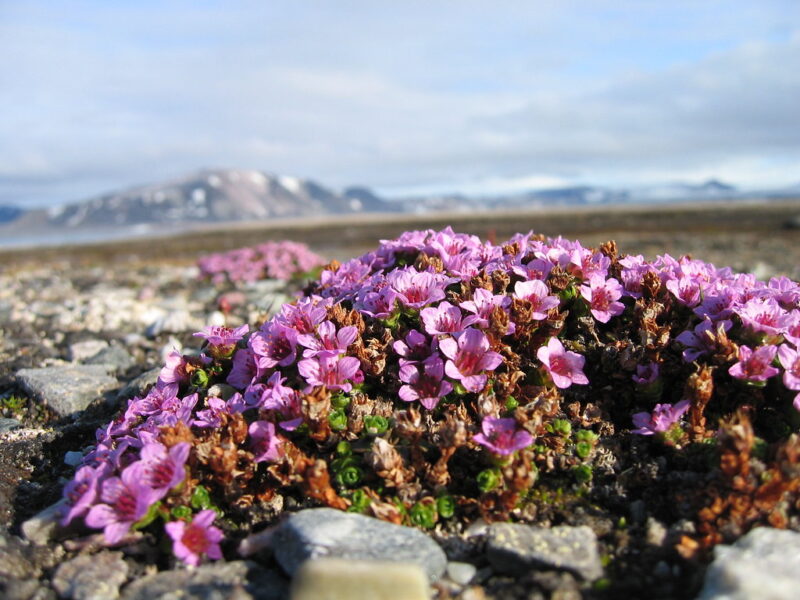
Saxifrage includes various species, known for their ability to grow in rocky crevices. These hardy perennials produce clusters of flowers and foliage that often change with the seasons.
While some saxifrages can attract slugs, their typically rugged growth helps minimize significant damage.
These plants thrive in well-drained, often poor soils, and prefer full sun to partial shade, making them great for rock gardens, alpine settings, and borders.
Sea Lavender (Limonium, Statice, Caspia)
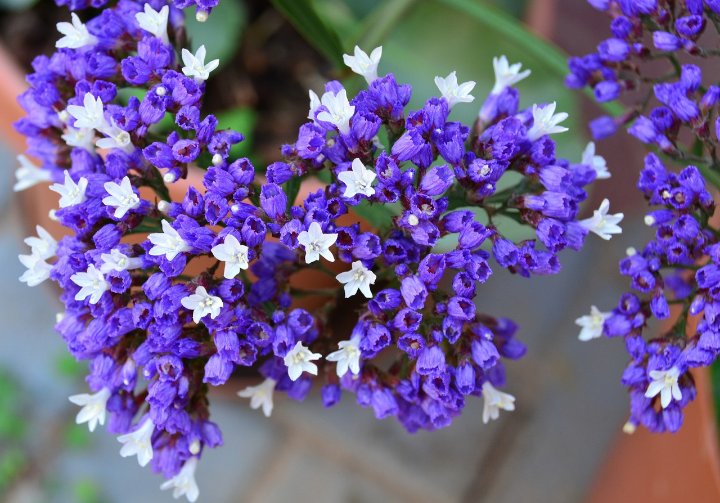
Sea lavender is known for its airy clusters of small, colorful flowers that are often used in dried arrangements. They thrive in coastal environments.
These plants can be mildly attractive to slugs, but their growth in coastal, salt-tolerant areas often keeps them healthier.
Sea lavender prefers well-drained, sandy soils and full sun, making it suitable for coastal gardens, salt gardens, and seaside flora.
Siberian Flag (Iris sibirica)
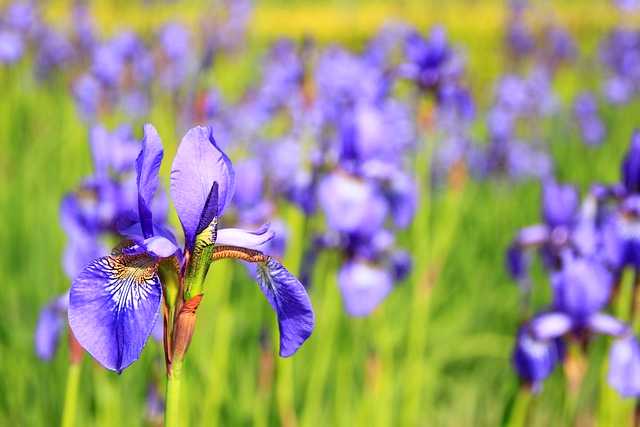
The Siberian flag is a perennial iris known for its graceful, upright flowers that bloom in various shades of blue and purple. It is valued for its resilience and adaptability.
Iris species, including Siberian flag, are generally resistant to slugs due to their tougher foliage and rhizome structure.
These irises thrive in moist, well-drained soils and prefer full sun to partial shade, making them suitable for borders, aquatic gardens, and naturalized areas.
Silene coronaria (Rose Campion)
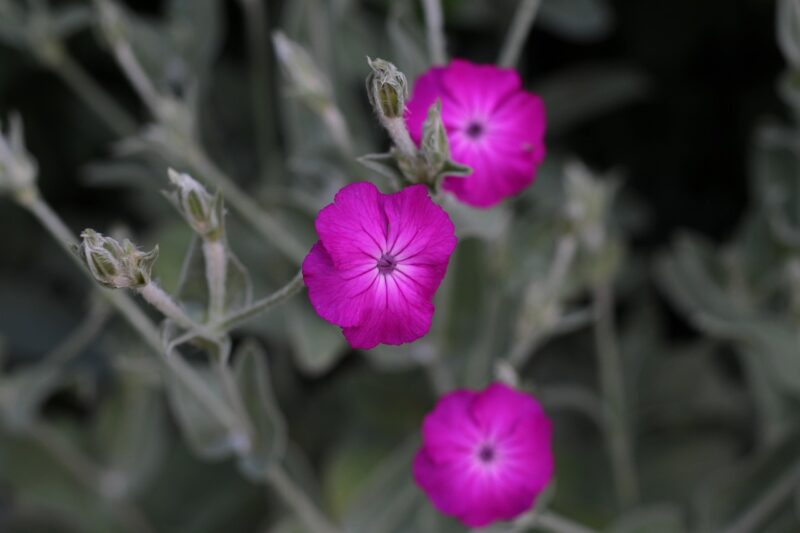
Silene coronaria, or rose campion, is known for its attractive, soft, pink flowers and hairy leaves. It’s often used in borders for its color and texture.
Rose campion may attract slugs but is more resilient once established.
It prefers well-drained soil and full sun and thrives in cottage gardens and borders.
Snake’s Head (Fritillaria meleagris)
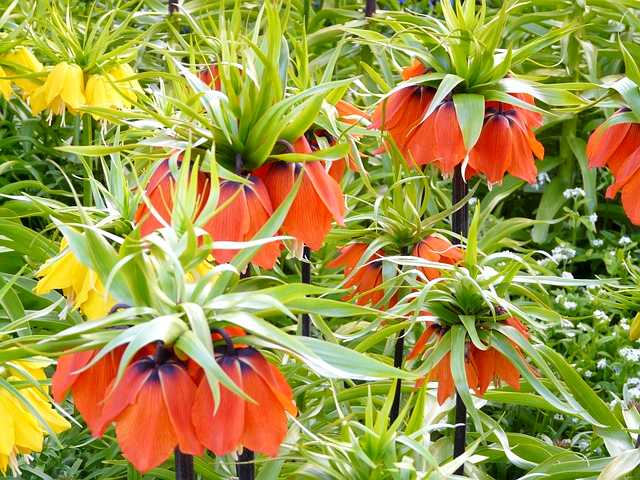
Snake’s head, or Fritillaria meleagris, is recognized for its unique, checkered flowers that hang delicately from slender stems. They are often seen in spring gardens.
These delicate flowers can be susceptible to slugs when young but are generally resilient once established.
They thrive in well-drained, moist soils and prefer full sun to partial shade, suitable for borders, woodland gardens, and naturalized areas.
Snapdragons (Antirrhinum)
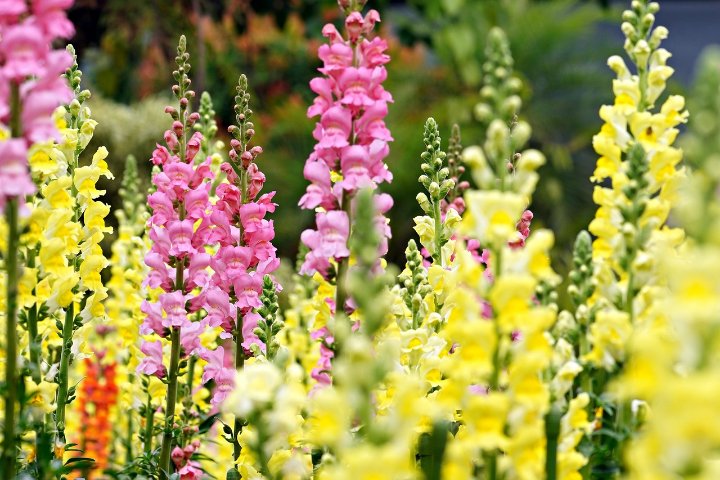
Snapdragons are popular annuals with uniquely shaped flowers that come in various colors, adding whimsy to gardens.
Snapdragons can attract slugs, particularly in moist environments, but robust growth often mitigates damage.
They prefer well-drained soil and full sun and are well-suited for borders, containers, and cutting gardens.
Sneezeweed (Helenium)
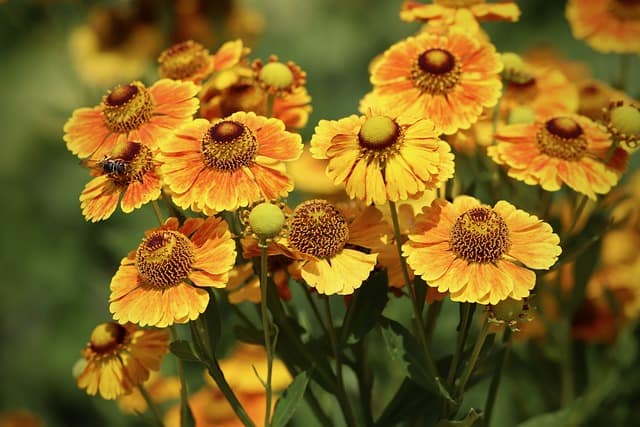
Sneezeweed is known for its vibrant, daisy-like flowers and is popular in pollinator gardens. It blooms in late summer, offering color when many other plants have finished.
Sneezeweed may be vulnerable to slugs, especially when young, but established plants generally hold up well.
These plants prefer moist, well-drained soils and thrive in full sun to partial shade, making them suitable for borders, wildflower gardens, and as part of native plantings.
Solomon’s Seal (Polygonatum)
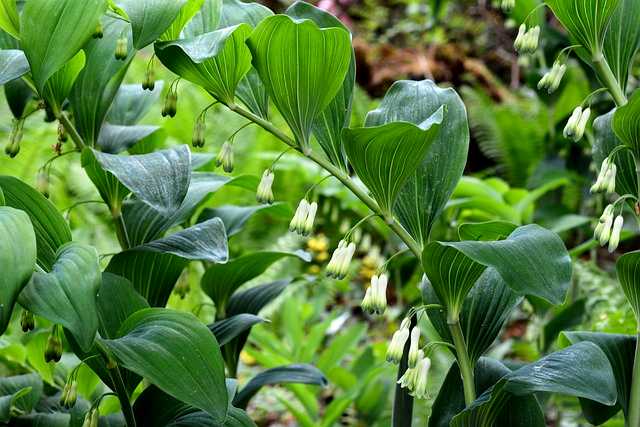 Solomon’s seal is a perennial known for its arching stems lined with dangling, bell-shaped flowers. They are often appreciated in shady gardens.
Solomon’s seal is a perennial known for its arching stems lined with dangling, bell-shaped flowers. They are often appreciated in shady gardens.
These plants generally exhibit good resistance to slugs due to their tough, somewhat tough foliage.
They prefer rich, moist, well-drained soils and thrive in partial to full shade, making them ideal for woodland gardens, border areas, and shaded beds.
Southernwood (Artemisia abrotanum)

Southernwood is a fragrant perennial known for its fern-like foliage and yellow flowers. It has been traditionally used for its aromatic qualities.
Southernwood tends to be resistant to slugs due to its aromatic, bitter-scented foliage.
It prefers well-drained, sandy soils and thrives in full sun, making it suitable for cottage gardens, herb gardens, and as an ornamental border plant.
Sowbread (Cyclamen hederifolium)
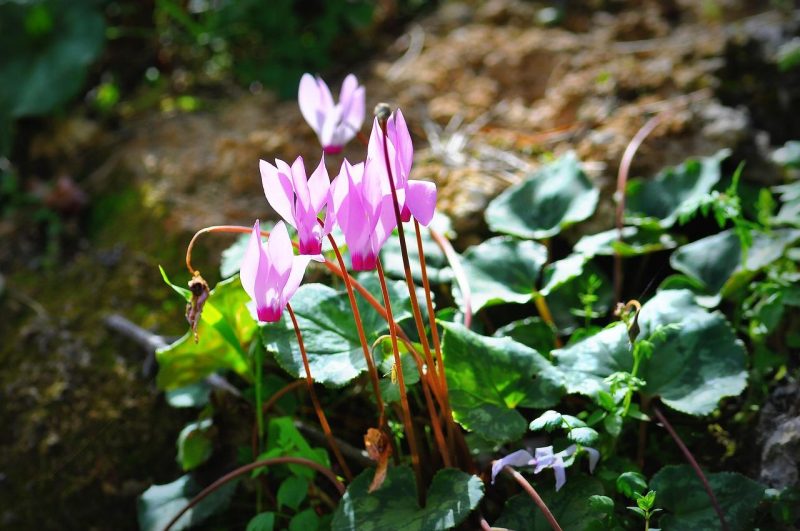
Sowbread, or ivy-leaved cyclamen, is well known for its charming, upswept flowers and heart-shaped leaves. It’s particularly noted for blooming in early spring or autumn.
Cyclamen can attract slugs, especially in moist conditions, but once established, they can be resilient.
These plants prefer well-drained, enriched soils and thrive in partial to full shade, making them suitable for woodland gardens, shady borders, and rock gardens.
Spiked Speedwell (Veronica spicata)
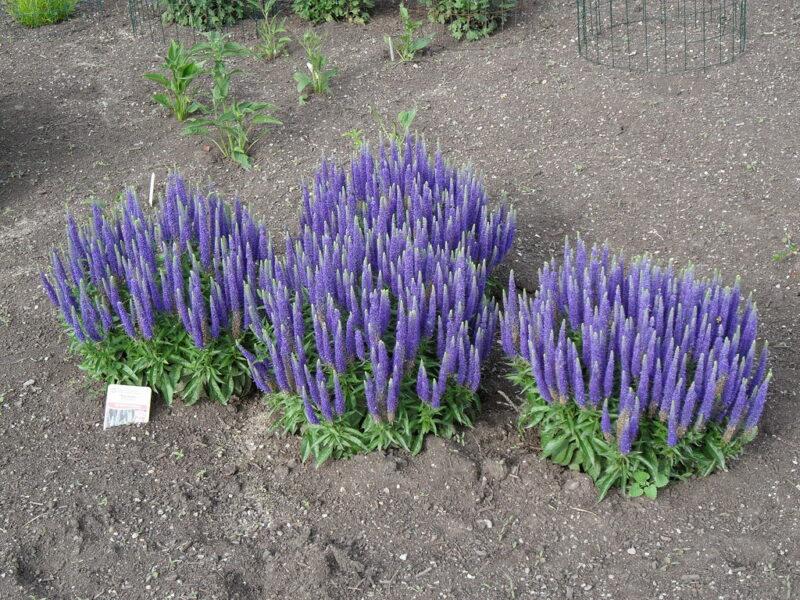
Spiked speedwell is a perennial with upright spikes of small blue or purple flowers, providing color and texture to gardens throughout summer.
Young spiked speedwell plants can attract slugs, but mature plants tend to be more resilient.
They prefer well-drained soils and full sun and thrive in borders, cottage gardens, and wildflower planting.
Spur Valerian (Centranthus ruber)

Spur valerian is a perennial renowned for its clusters of bright red or pink flowers and ability to attract pollinators. It is useful for its drought-resistant properties.
Spur valerian can be susceptible to slugs when young but is quite robust once established.
These plants thrive in well-drained soils and full sun, making them suitable for borders, rock gardens, and cottage gardens.
Spurflowers (Plectranthus)
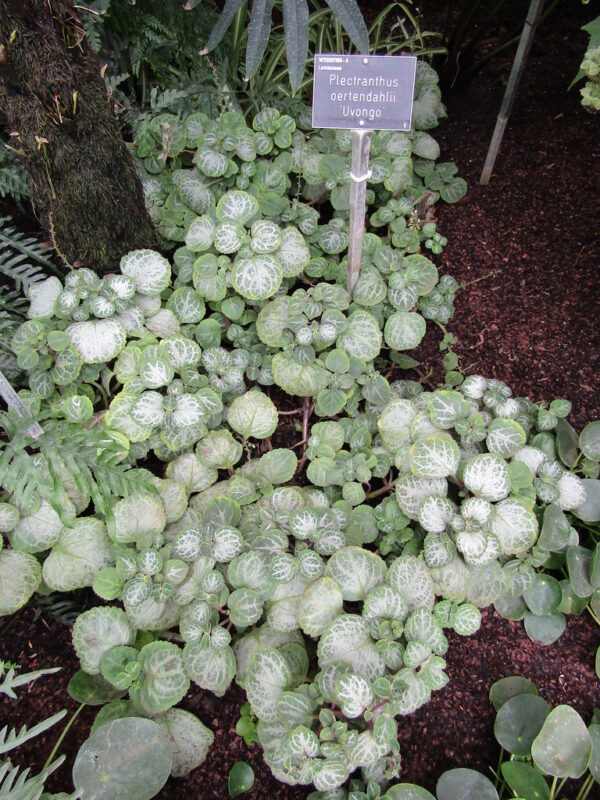
Spurflowers, belonging to the Plectranthus, are known for their aromatic foliage and showy flower spikes. They are often used in garden beds and borders.
These plants can attract slugs due to their succulent leaves, especially if they are in too moist an environment.
Spurflowers prefer well-drained, fertile soils and thrive in full sun to partial shade, making them excellent for borders, containers, and garden beds.
Spurge (Euphorbia)
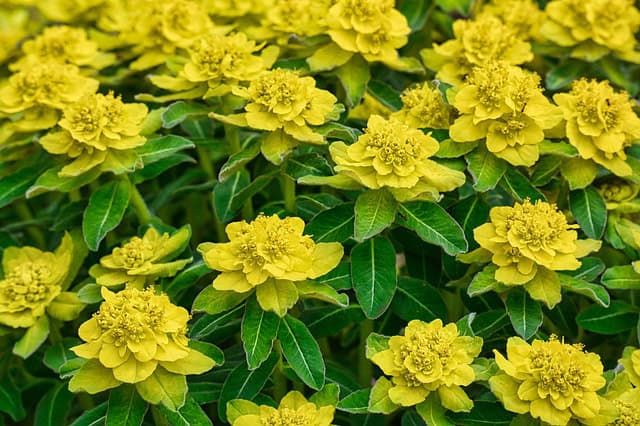
Euphorbia, commonly known as spurge, encompasses a diverse range of plants known for their unique foliage and bright bracts of flowers. Some species are used as ornamental plants.
Many spurge species are resistant to slugs due to their milky sap which can be irritating to pests.
These plants thrive in well-drained soils and prefer full sun, making them suitable for rock gardens, borders, and as ground cover.
St. John’s Wort (Hypericum)
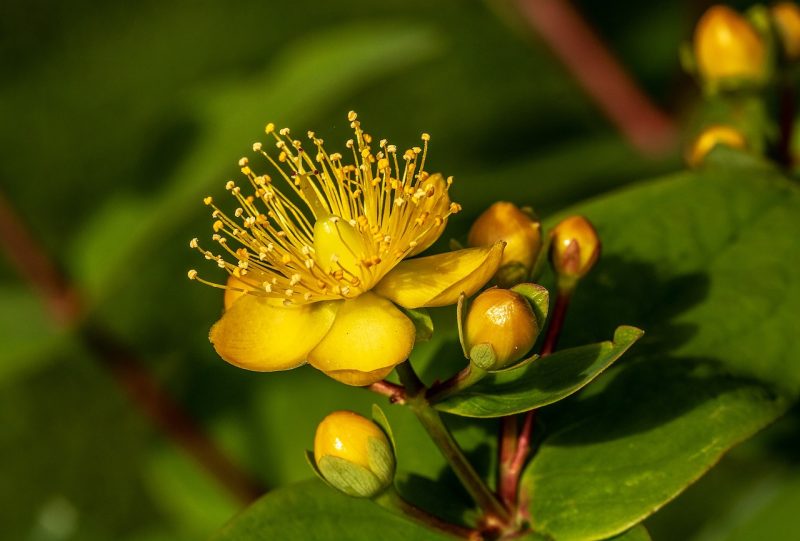
St. John’s Wort is a well-known perennial with bright yellow flowers and a reputation for medicinal use. It’s often used in herbal remedies and is valued for its resilience.
These plants can attract slugs, especially when young; however, they are generally hearty enough to withstand pest damage once established.
They prefer well-drained soils and full sun to partial shade, making them versatile for borders, wildflower gardens, and naturalized areas.
Stachys
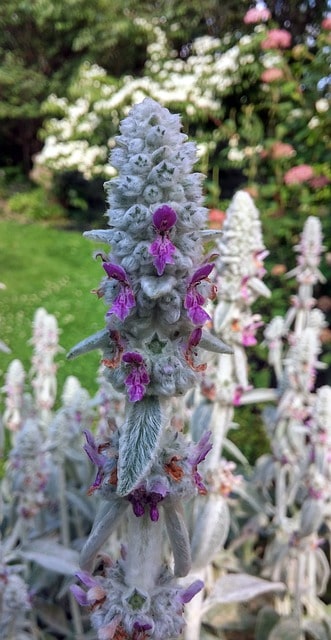 Stachys, also known as hedgenettle or lamb’s ears, is valued for its soft, fuzzy leaves and spikes of flowers. It adds texture to gardens and is often used in informal landscaping.
Stachys, also known as hedgenettle or lamb’s ears, is valued for its soft, fuzzy leaves and spikes of flowers. It adds texture to gardens and is often used in informal landscaping.
Stachys typically shows some resistance to slugs due to its fuzzy foliage.
These plants prefer well-drained soils and full sun to partial shade, thriving in cottage gardens, borders, and as ground cover in various settings.
Stonecrops (Sedum)
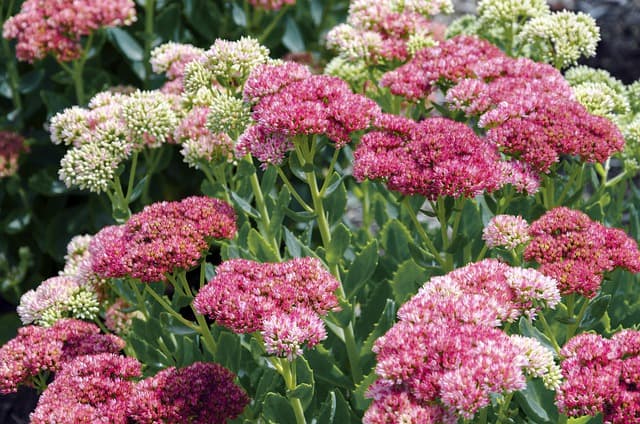
Sedum, commonly known as stonecrop, includes a variety of succulents that thrive in dry conditions. They are popular for their low maintenance and colorful foliage.
Stonecrops are highly resistant to slugs due to their fleshy, water-storing leaves.
They prefer well-drained, sandy soils and full sun, making them ideal for rock gardens, containers, and drought-tolerant landscapes.
Storksbills (Pelargonium, Geranium)
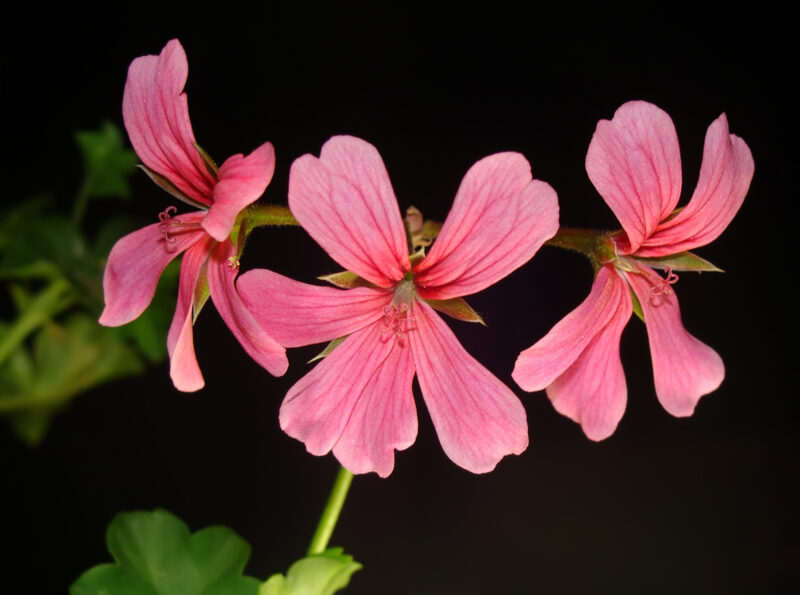
Storksbills, commonly associated with the Pelargonium, are known for their distinctively shaped leaves and attractive flowers. They are often used in containers and hanging baskets due to their dainty nature.
Slug Resistance: Generally, storksbills can be somewhat vulnerable to slugs, especially in damp conditions. However, careful management of moisture levels can help mitigate this risk.
Growing Conditions: They thrive in well-drained soil and prefer bright sunlight, making them great for windowsills, balcony gardens, and outdoor containers.
Succulents (Almost All Species of Succulent Plants)
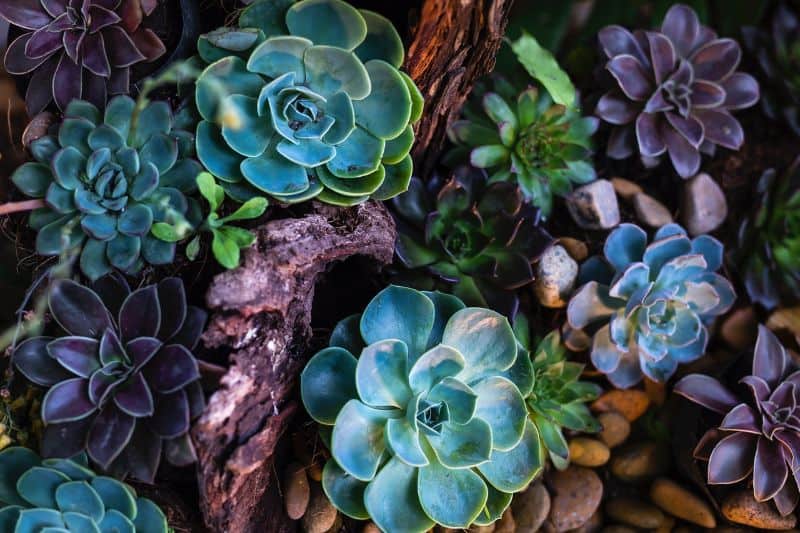
Succulents are known for their fleshy leaves and stems that store water, making them ideal for dry environments. This group includes a vast range of plants like aloe, echeveria, and jade.
Slug Resistance: Most succulents are resistant to slugs due to their thick, juicy leaves that are not generally favored by these pests.
Growing Conditions: Succulents thrive in well-drained soils and require bright, indirect sunlight; they’re perfect for rock gardens, container gardens, and drought-tolerant landscapes.
Tansy (Tanacetum vulgare)
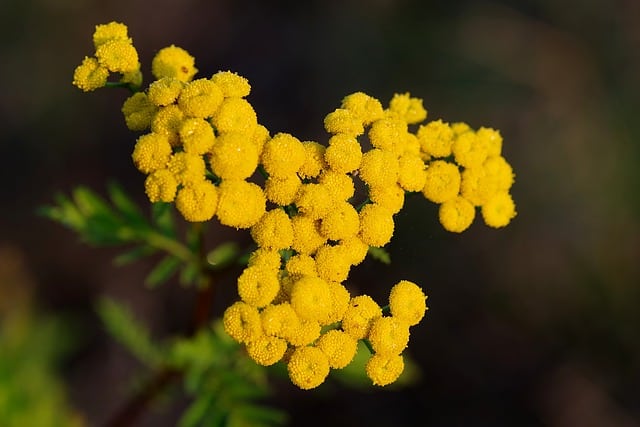
Tansy is a perennial herb known for its yellow, button-like flowers and strong scent. It has historical uses in traditional medicine and is often found in wildflower gardens.
Slug Resistance: Tansy is often avoided by slugs and other pests due to its strong aroma and somewhat bitter taste.
Growing Conditions: It prefers well-drained soils and full sun, excellent for wildflower gardens and naturalized areas.
Teasel (Dipsacus)
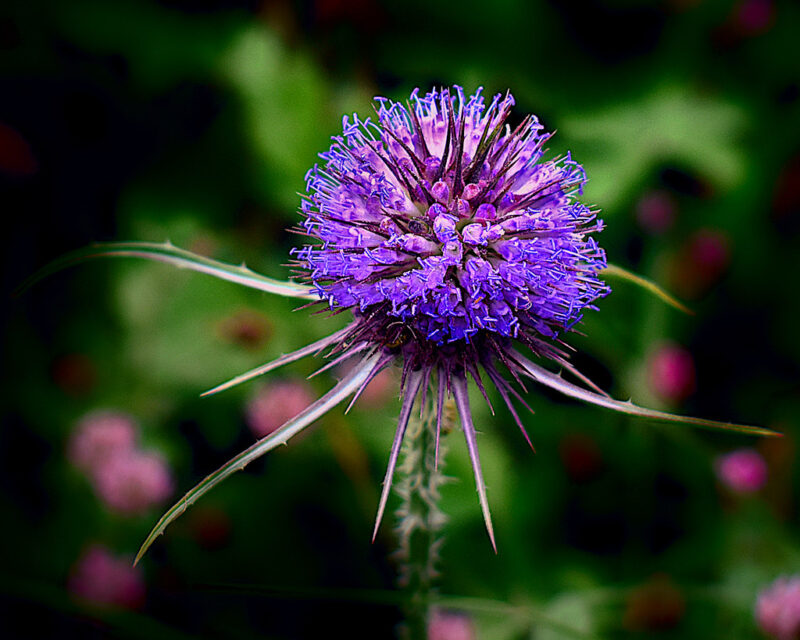
Teasel is a biennial plant with tall spikes covered in prickly flower heads that are often used for their unique architectural form in gardens. It attracts various pollinators.
Slug Resistance: Young teasel plants may attract slugs, but once they establish, they can become more resilient.
Growing Conditions: Teasel prefers well-drained soils and full sun which makes it suitable for wildflower gardens and borders.
Thistles (Cynareae)
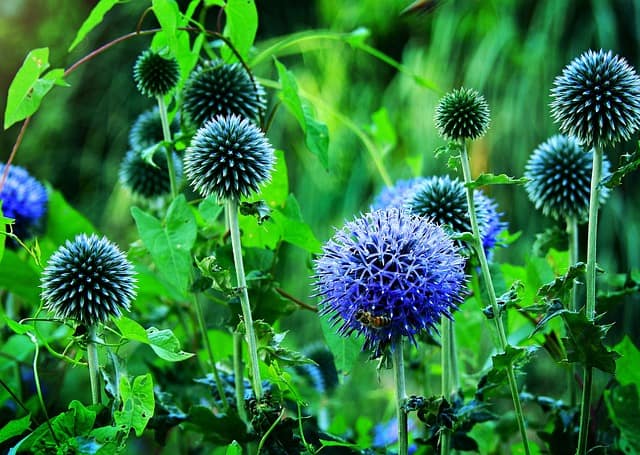
Thistles are often recognized for their spiny leaves and vibrant flowers, serving as an important food source for pollinators like bees.
Slug Resistance: Thistles are generally avoided by slugs due to their prickly foliage, providing some natural defense against these pests.
Growing Conditions: They thrive in poor-quality soils and can adapt to full sun, ideal for meadows and wildflower gardens.
Tiarella
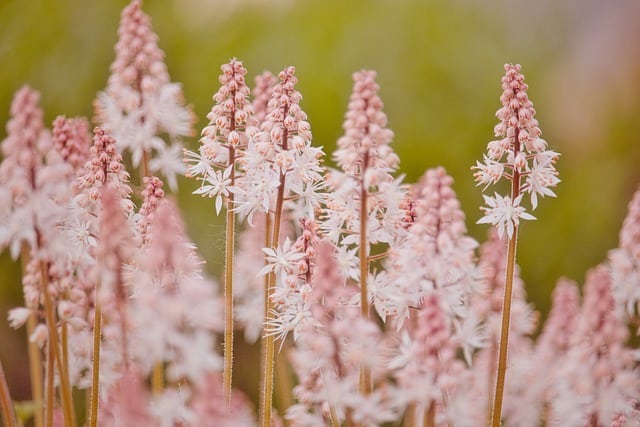
Tiarella, commonly known as foamflower, is appreciated for its delicate spikes of white to pink flowers and attractive foliage. It is popular in shaded woodland gardens.
Slug Resistance: Tiarella may attract slugs, especially in moist conditions, but established plants typically handle some damage without significant issues.
Growing Conditions: They prefer well-drained, humus-rich soils and partial to full shade, making them great for woodland gardens and shaded beds.
Triple-veined Pearly Everlasting (Anaphalis triplinervis)
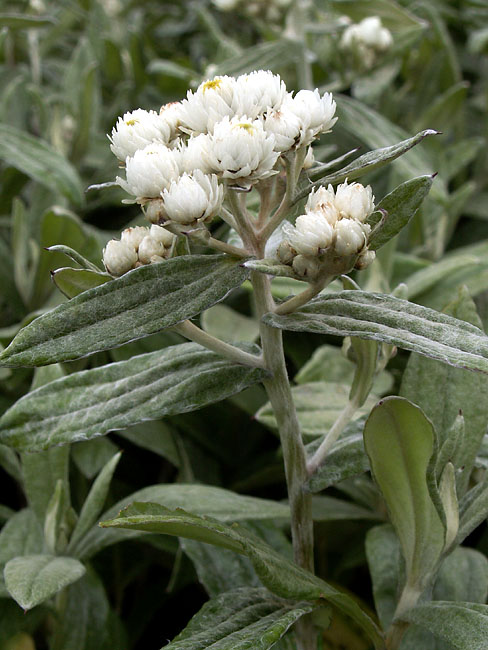
This perennial is known for its silvery leaves and clusters of white flowers that retain their color even after drying, often used in dried flower arrangements.
Slug Resistance: Triple-veined pearly everlasting is relatively resistant to slugs due to its tough, leathery foliage.
Growing Conditions: It prefers well-drained soils and full sun, suitable for rock gardens, borders, and naturalized settings.
Tulips (Tulipa)
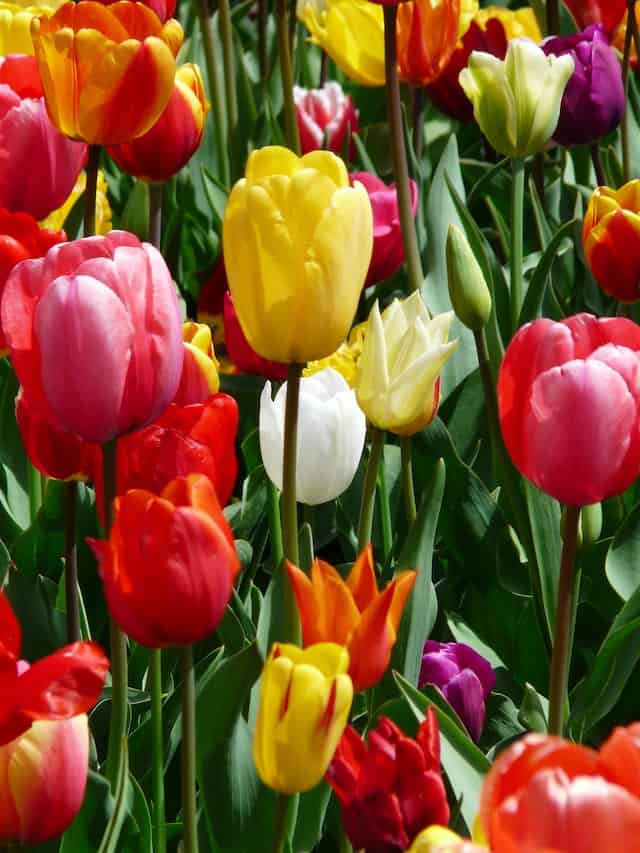
Tulips are beloved spring-blooming perennials, renowned for their elegant shape and wide array of colors. They are widely grown in gardens and parks.
Slug Resistance: Tulips can attract slugs, particularly when young; however, mature plants are often less affected.
Growing Conditions: They thrive in well-drained soil and full sun, making them ideal for borders, formal gardens, and containers.
Verbena (Verbena officinalis, Common Vervain)
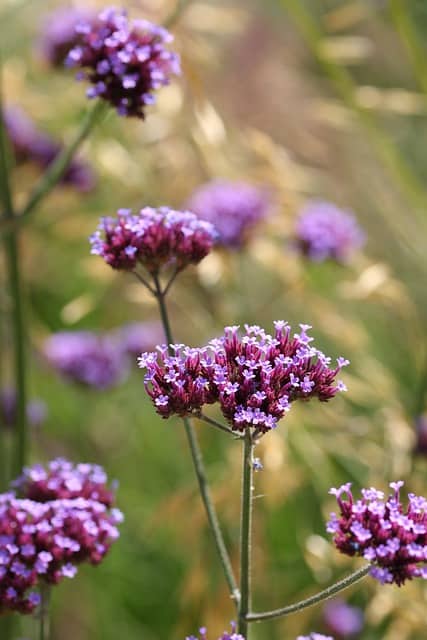
Verbena is a perennial herb known for its small, colorful flowers that provide a long blooming season and attract butterflies.
Slug Resistance: Verbena can be susceptible to slugs, particularly in moist environments, but its resilience often allows it to survive light damage.
Growing Conditions: It prefers well-drained soil and full sun, making it suitable for borders, meadows, and container gardens.
Veronica (e.g., Heath Speedwell, Common Gypsyweed, Common Speedwell, Paul’s Betony)
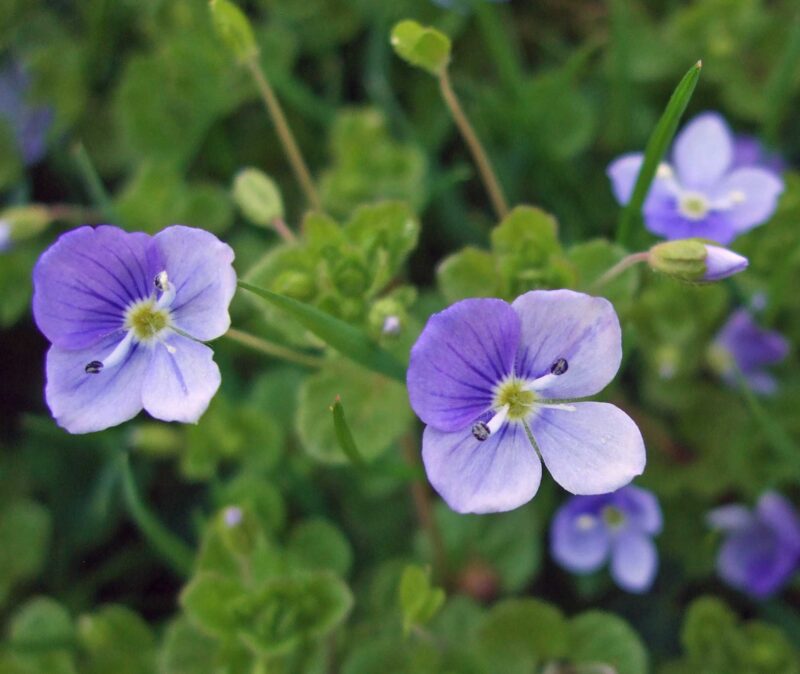
Veronica includes a broad range of flowering perennials valued for their spikes of blue, purple, or white flowers that bloom in summer.
Slug Resistance: Some species can be attractive to slugs, especially when young, but many are robust enough to resist significant damage once established.
Growing Conditions: They prefer well-drained soils and full sun to partial shade, making them great for borders, cottage gardens, and wildflower areas.
Vetches (Vicia, Variety and Location Dependent)
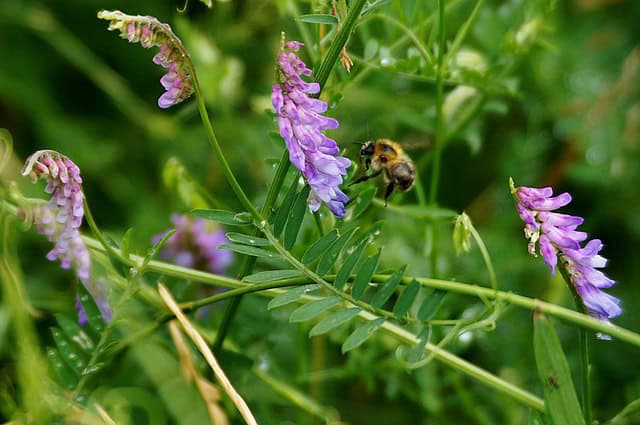
Vetches are legumes known for their climbing ability and preference for poor soil, often used in cover cropping for soil improvement.
Slug Resistance: Young vetch plants may be susceptible to slugs, while established plants are typically less affected.
Growing Conditions: They thrive in well-drained soils and full sun, suitable for gardens and agricultural systems.
Waldsteinia (Genus, Barren Strawberries)
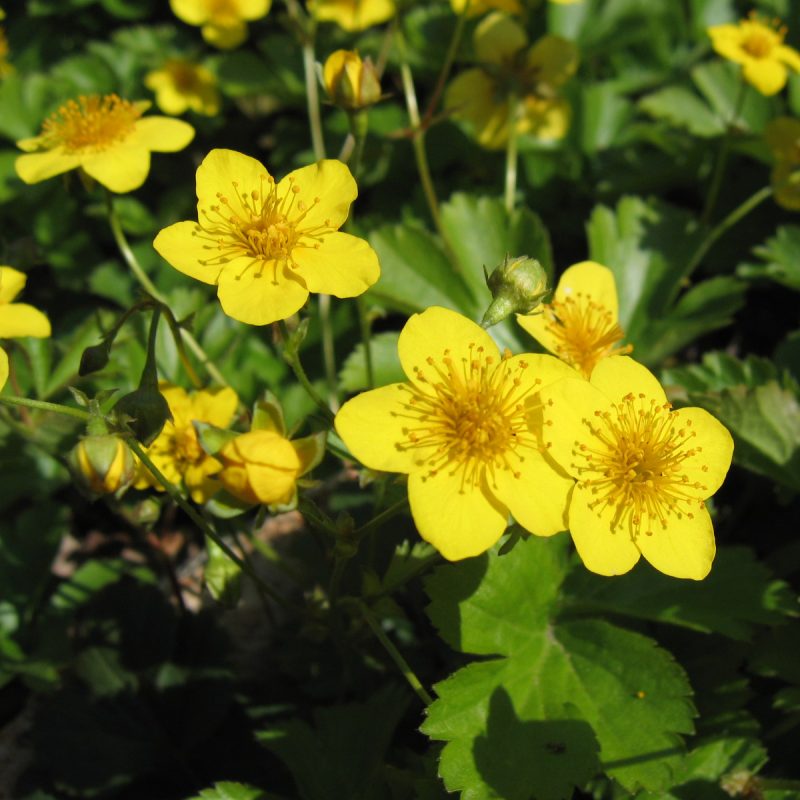
Waldsteinia encompasses low-growing, ground-covering perennials that bear yellow flowers, often used in shaded areas to provide ground cover.
Slug Resistance: Waldsteinia can attract slugs, especially in damp environments, but they are generally hardy once established.
Growing Conditions: They prefer well-drained, rich soil and partial to full shade, making them suitable for woodland gardens and shady areas.
Wallflower (Erysimum cheiri)
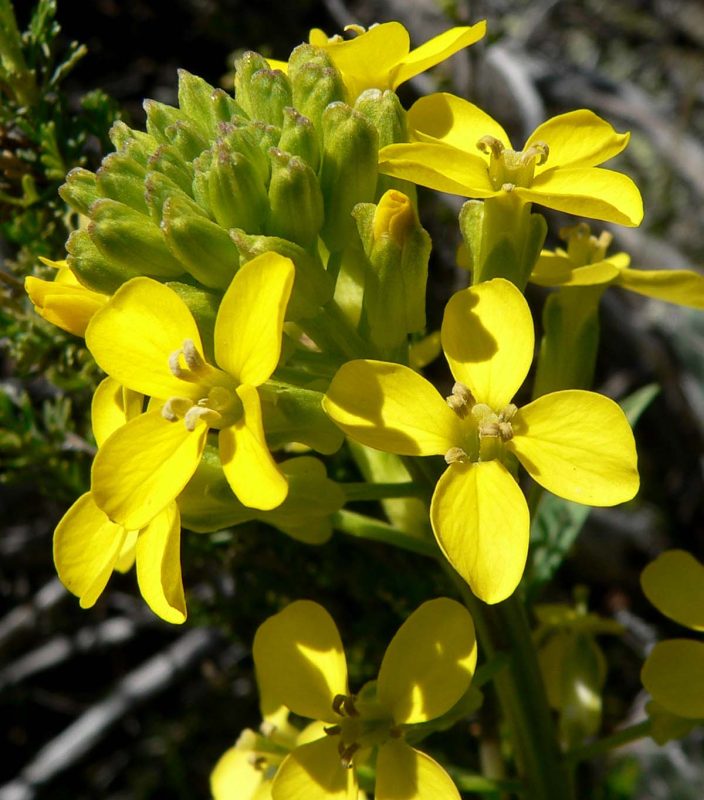
Wallflowers are biennial or perennial plants known for their fragrant, colorful flowers that bloom in spring. They can provide a delightful scent in gardens.
Slug Resistance: Wallflowers may attract slugs, particularly in damp conditions, but well-established plants are more resilient.
Growing Conditions: They thrive in well-drained, fertile soil and full to partial sun, making them ideal for borders and rock gardens.
White Stonecrop (Sedum album)

White stonecrop is a low-growing succulent with fleshy leaves and clusters of star-shaped white flowers, often used in rock gardens or as ground cover.
Slug Resistance: As a succulent, white stonecrop is generally resistant to slugs due to its thick leaves.
Growing Conditions: It prefers well-drained soils and full sun, making it excellent for rock gardens, gravel gardens, and xeriscaping.
Wild Teasel (Dipsacus fullonum, Fuller’s Teasel)
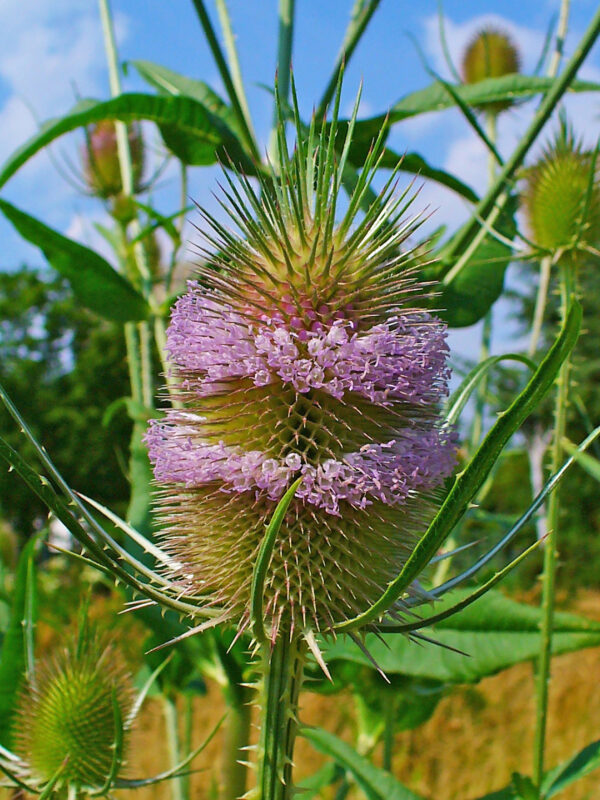
Wild teasel is a biennial plant recognized for its tall, prickly flowering heads that often attract bees and butterflies.
Slug Resistance: Young wild teasel may attract slugs, but established plants are generally more robust.
Growing Conditions: Wild teasel thrives in well-drained soils and full sun or partial shade, making it suitable for wildflower meadows and borders.
Winter Jasmine (Jasminum nudiflorum)
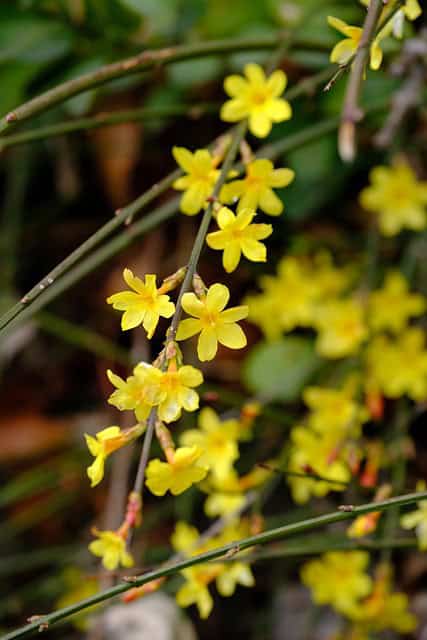
Winter jasmine is a deciduous shrub known for its bright yellow flowers that bloom in late winter to early spring, providing a splash of color at a time when few plants flower.
Slug Resistance: Winter jasmine is typically less affected by slugs due to its woody stems and tougher leaves.
Growing Conditions: It thrives in well-drained soils and prefers full sun to partial shade, suited for garden walls, fences, and as ground cover.
Wood Anemone (Anemone nemorosa)
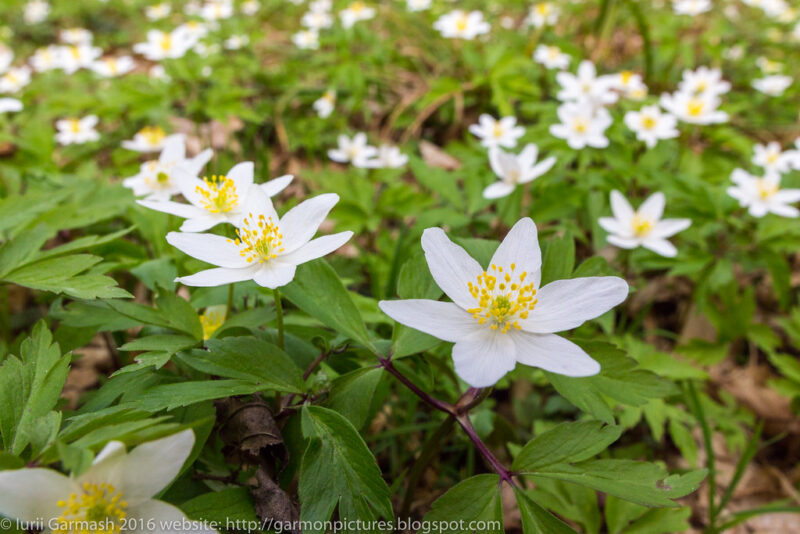
Wood anemone is a perennial wildflower known for its delicate, white flowers that bloom in early spring. It often carpets woodland floors.
Slug Resistance: Young wood anemone plants can attract slugs, but mature plants are more resistant once established.
Growing Conditions: They prefer moist, well-drained soil and partial shade to full shade, making them ideal for woodland gardens and shaded areas.
Woodruff (Galium odoratum)

Woodruff is a perennial herb known for its fragrant leaves and small white flowers, often used in shady gardens and for ground cover.
Slug Resistance: Woodruff can attract slugs, particularly in moist conditions, but once established, it can generally cope with some slug activity.
Growing Conditions: It thrives in rich, well-drained, moist soils and prefers partial to full shade, ideal for woodland gardens and shaded borders.
Woolly Hedgenettle (Stachys byzantina, Lamb’s Ear)
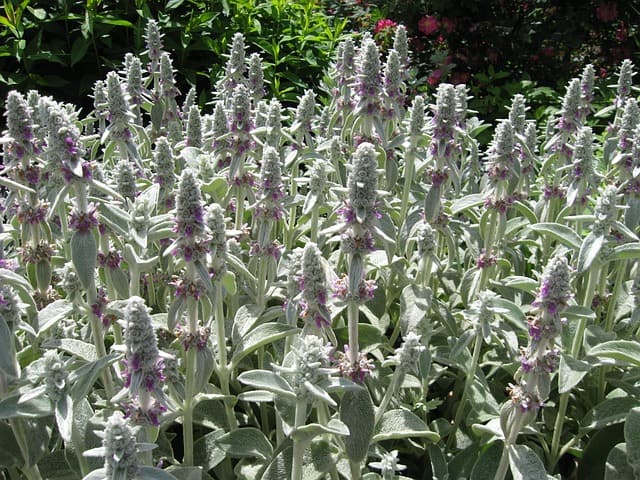
Woolly hedgenettle is known for its soft, fuzzy leaves and spikes of purple flowers. It is frequently used as ground cover.
Slug Resistance: Woolly hedgenettle’s dense, fuzzy leaves can deter slugs, making it generally more resilient.
Growing Conditions: It prefers well-drained soils and full sun to partial shade, suitable for borders, rock gardens, and as a ground cover option.
Wormwood (Artemisia absinthium)

Wormwood is a perennial herb known for its aromatic foliage and traditional medicinal uses; it is often recognizable by its silvery-green leaves.
Slug Resistance: Wormwood typically repels slugs due to its strong, bitter aroma.
Growing Conditions: It thrives in well-drained soils and prefers full sun, making it suitable for herb gardens, borders, and dry landscapes.
Yarrow (Achillea millefolium)
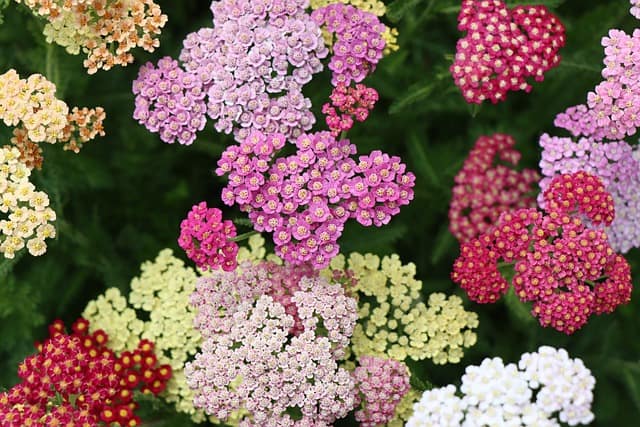
Yarrow is a hardy perennial known for its feathery foliage and clusters of small flowers, attracting numerous pollinators and beneficial insects.
Slug Resistance: Yarrow is generally resistant to slugs, likely due to its aromatic and somewhat bitter foliage.
Growing Conditions: It thrives in well-drained soils and prefers full sun, making it ideal for cottage gardens, meadows, and naturalized areas.


